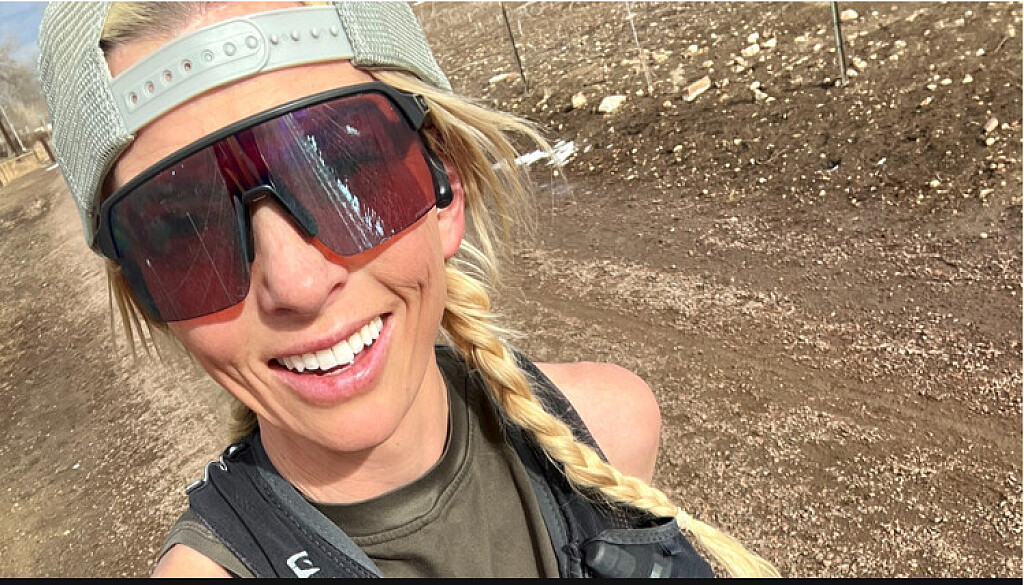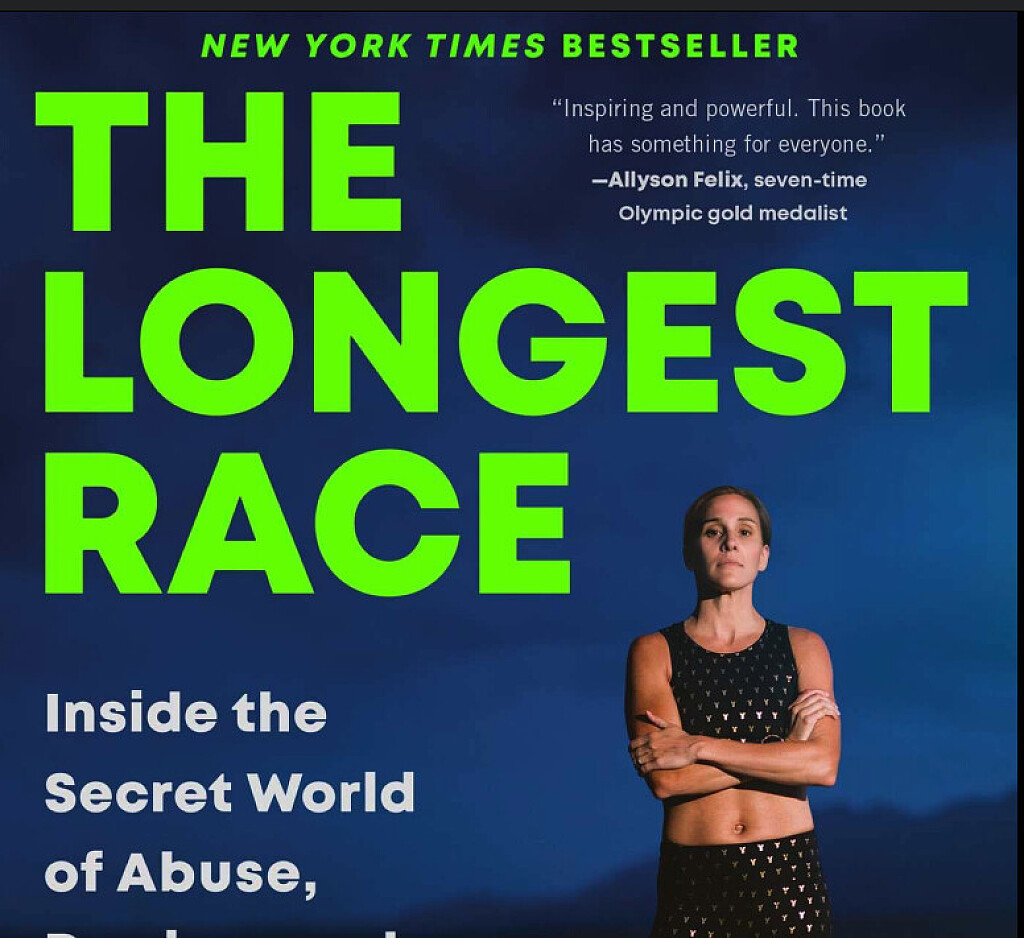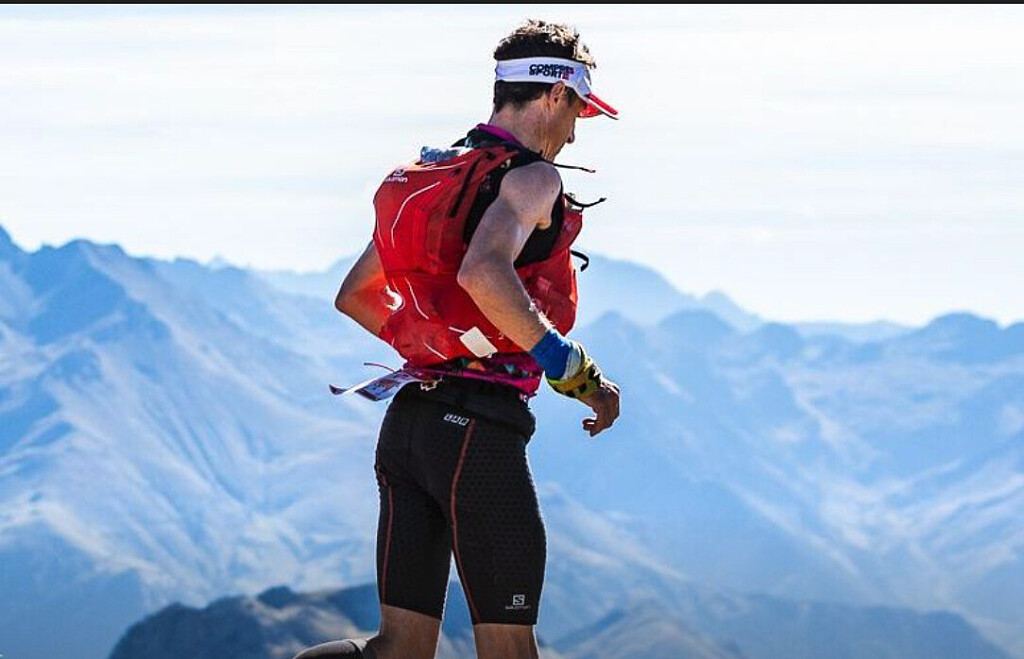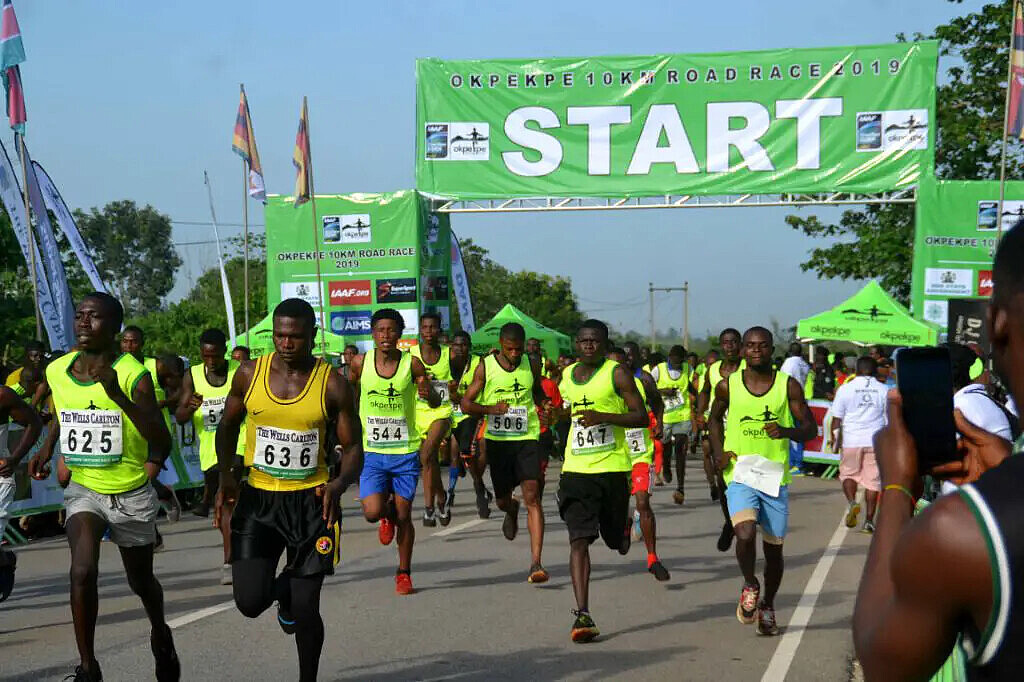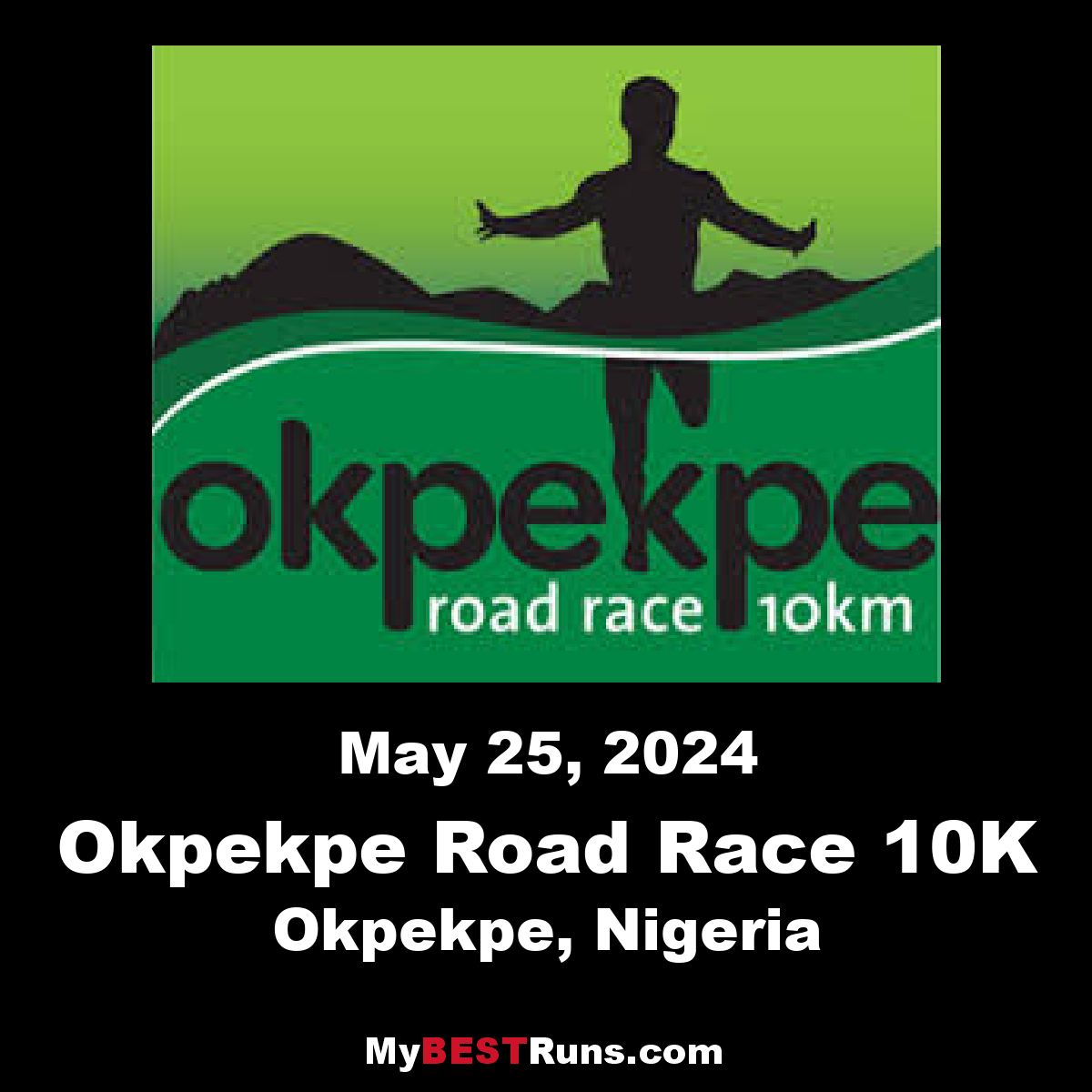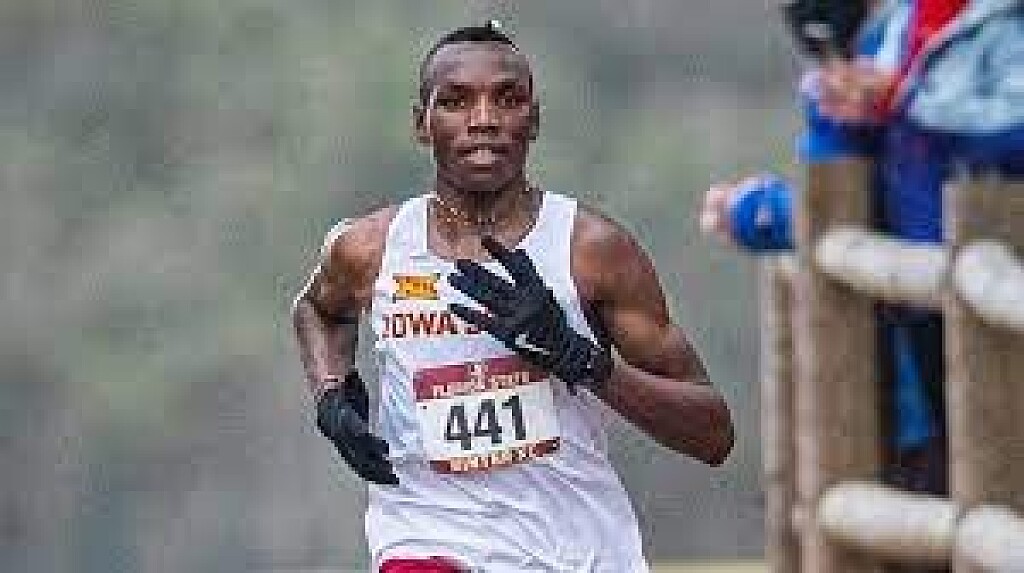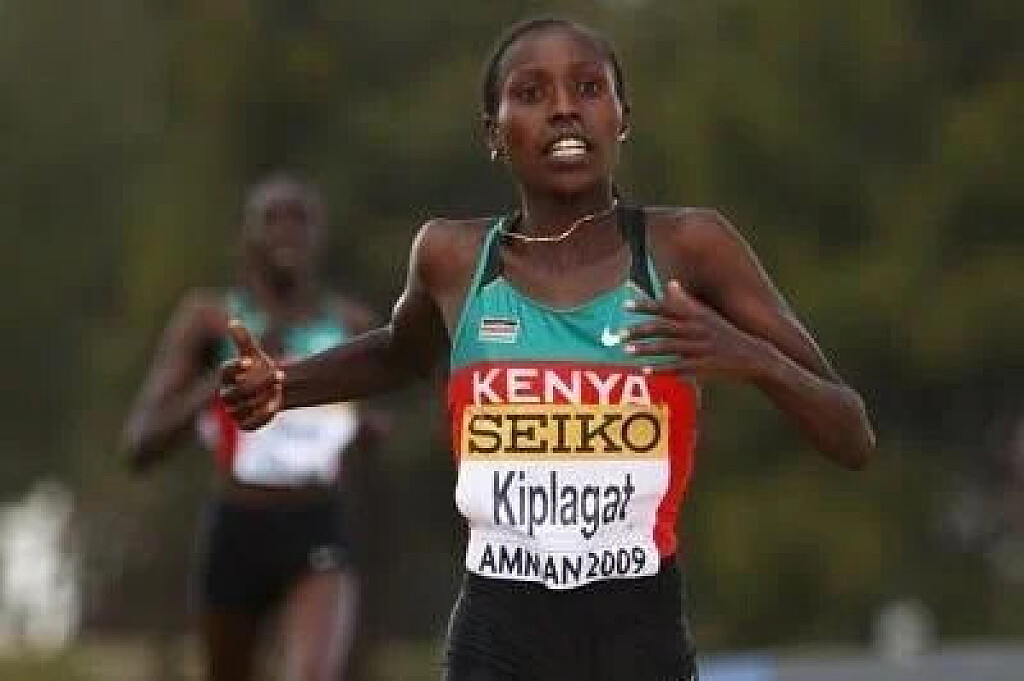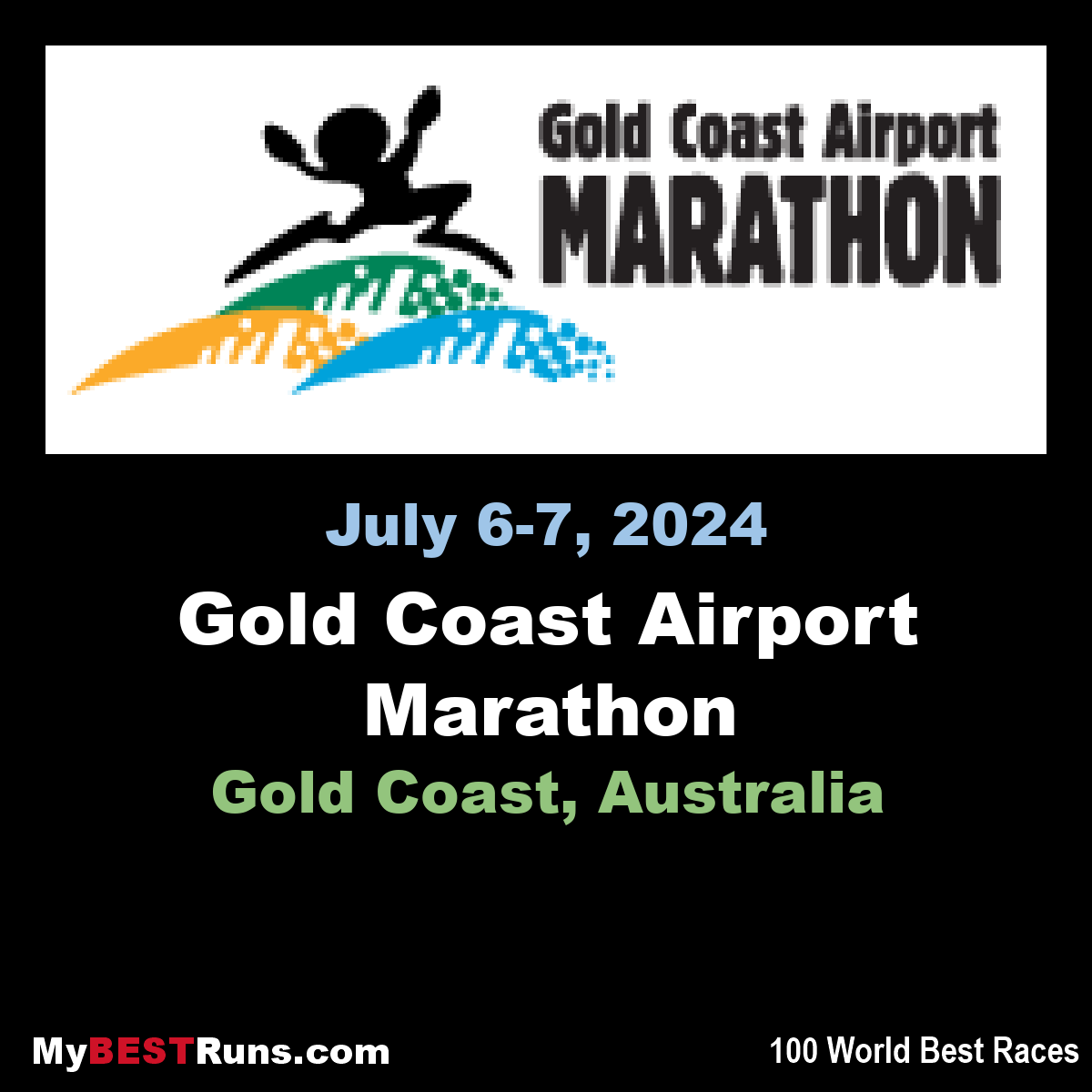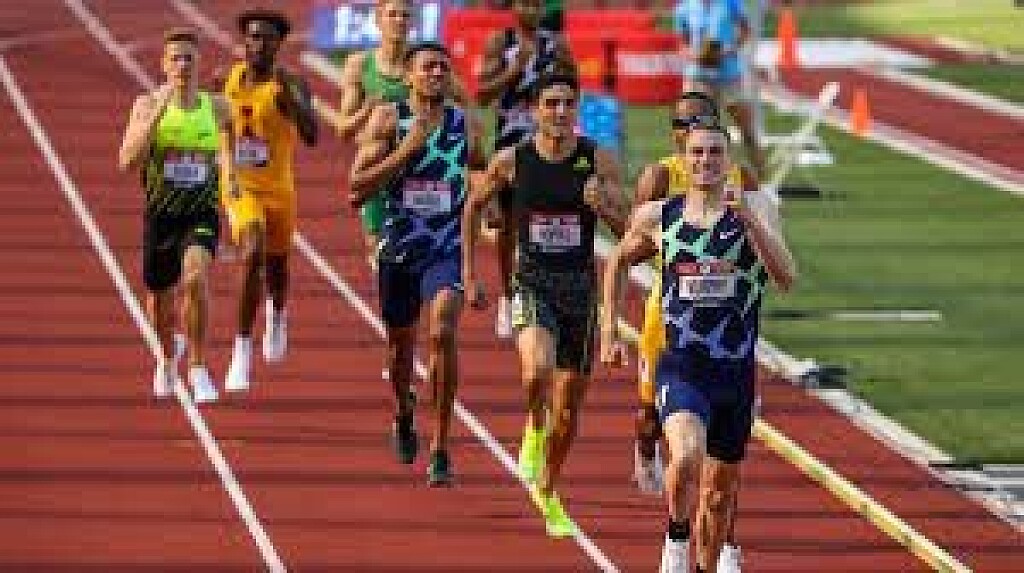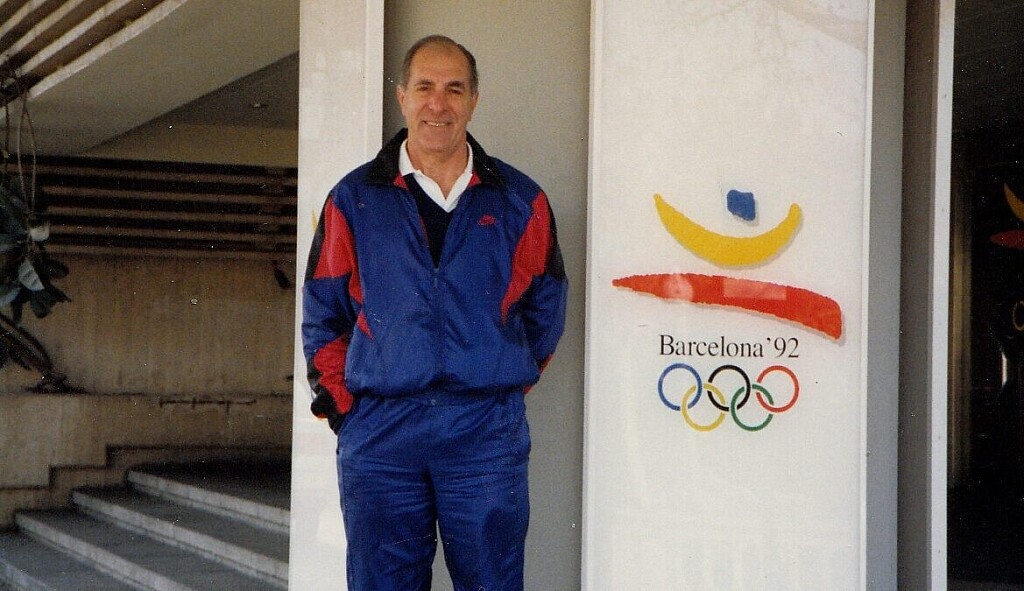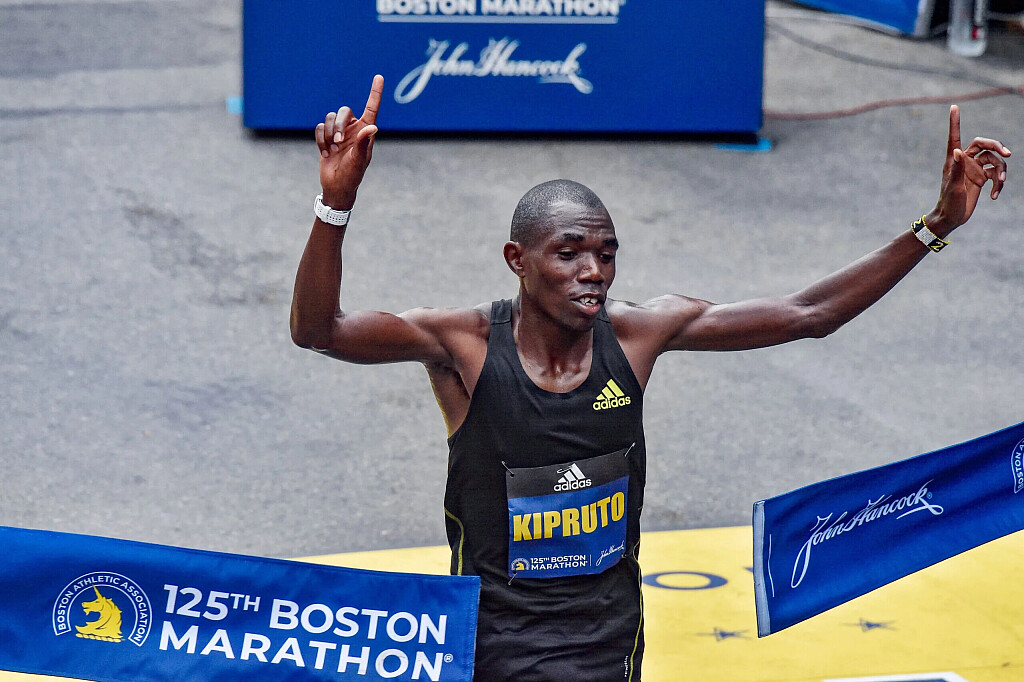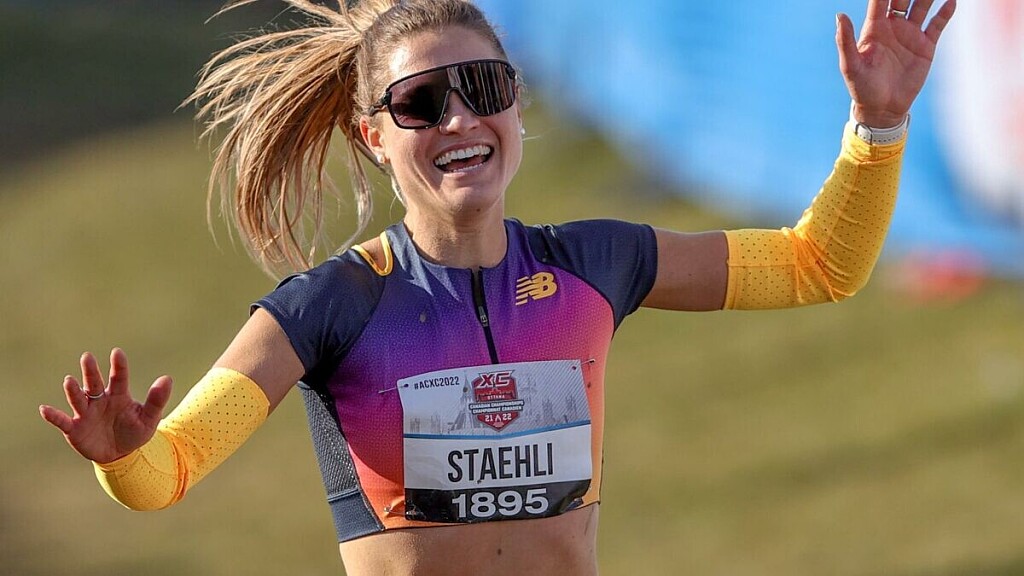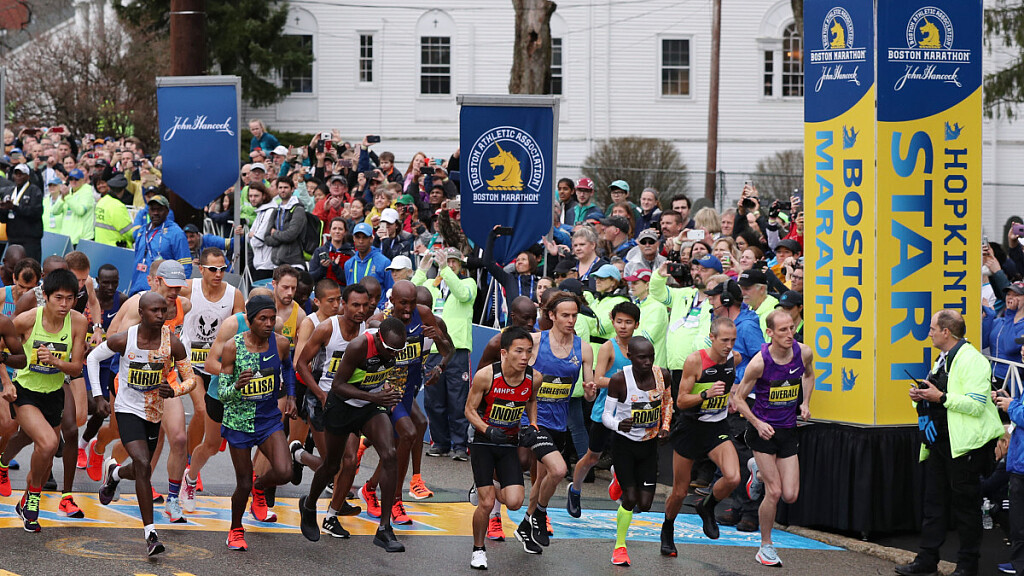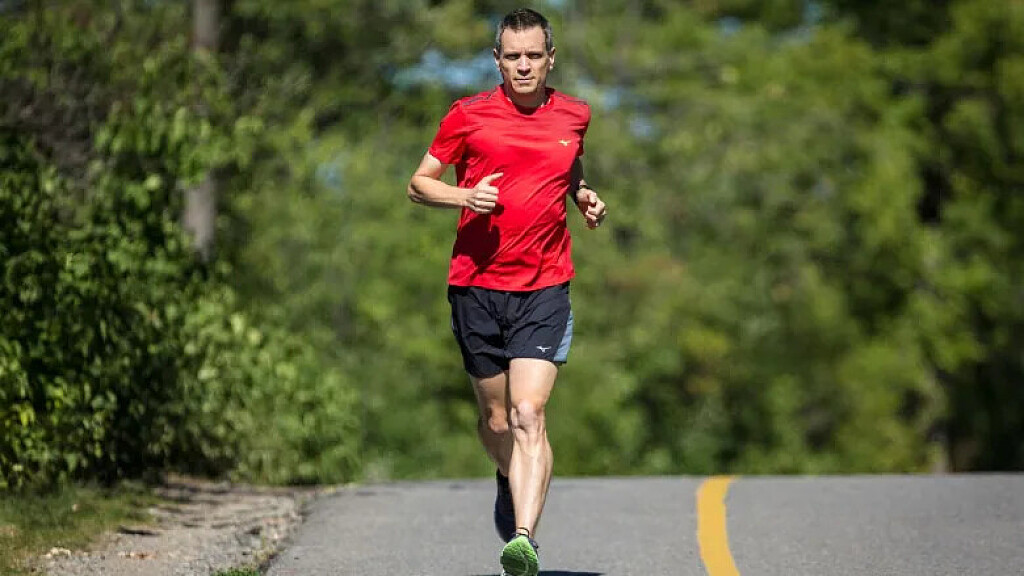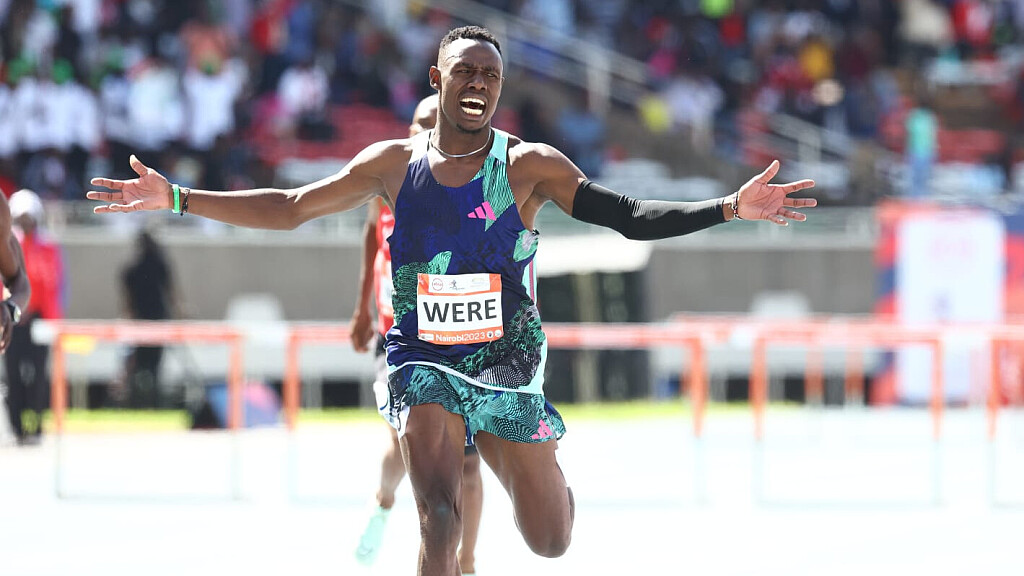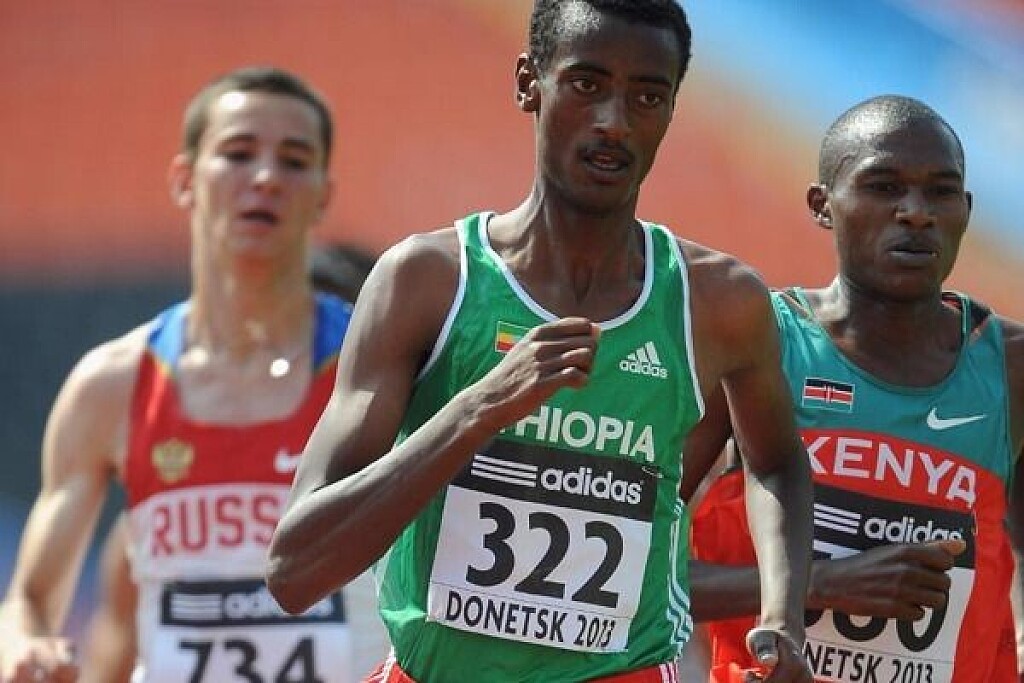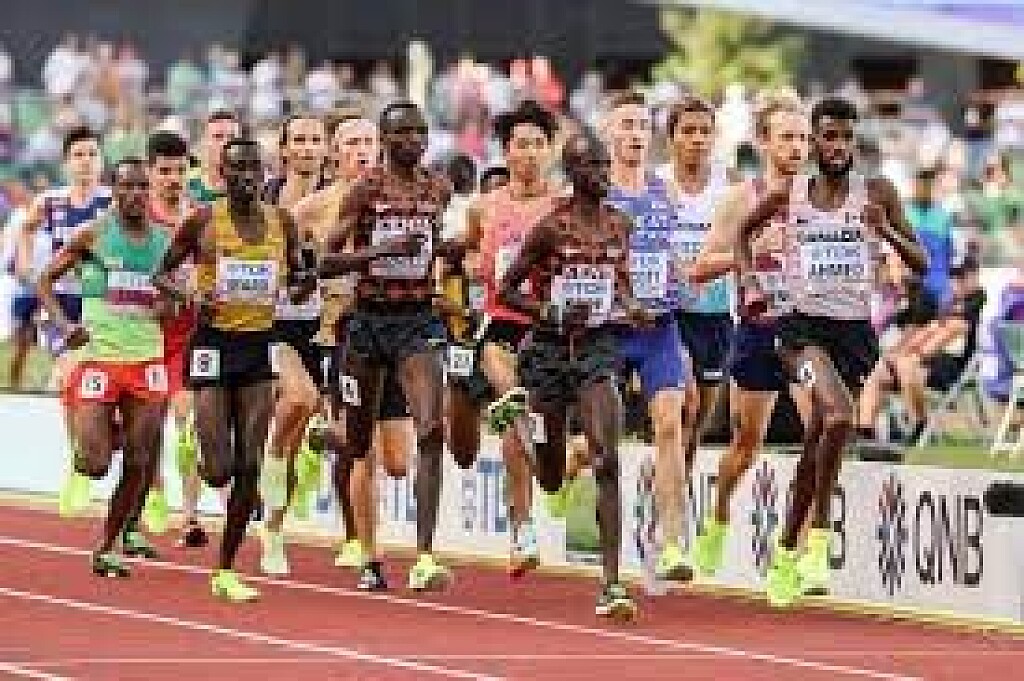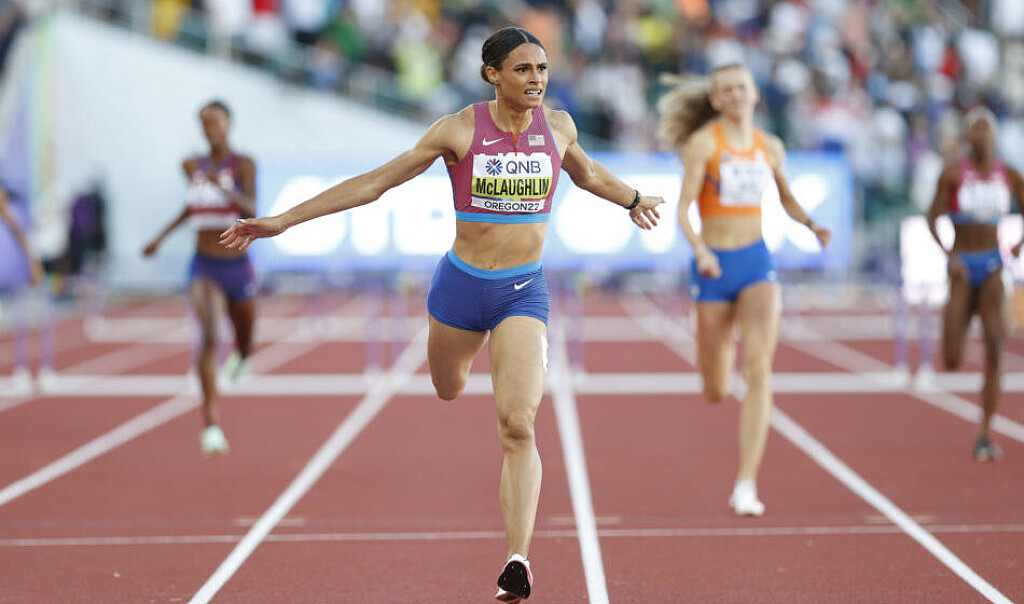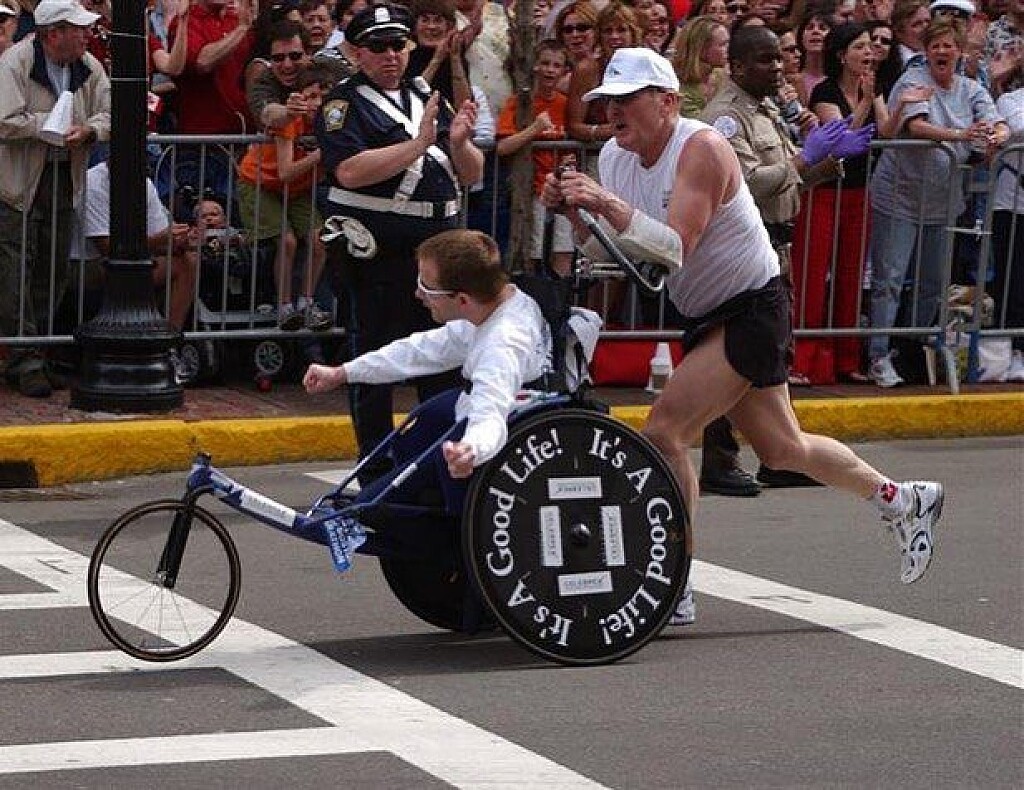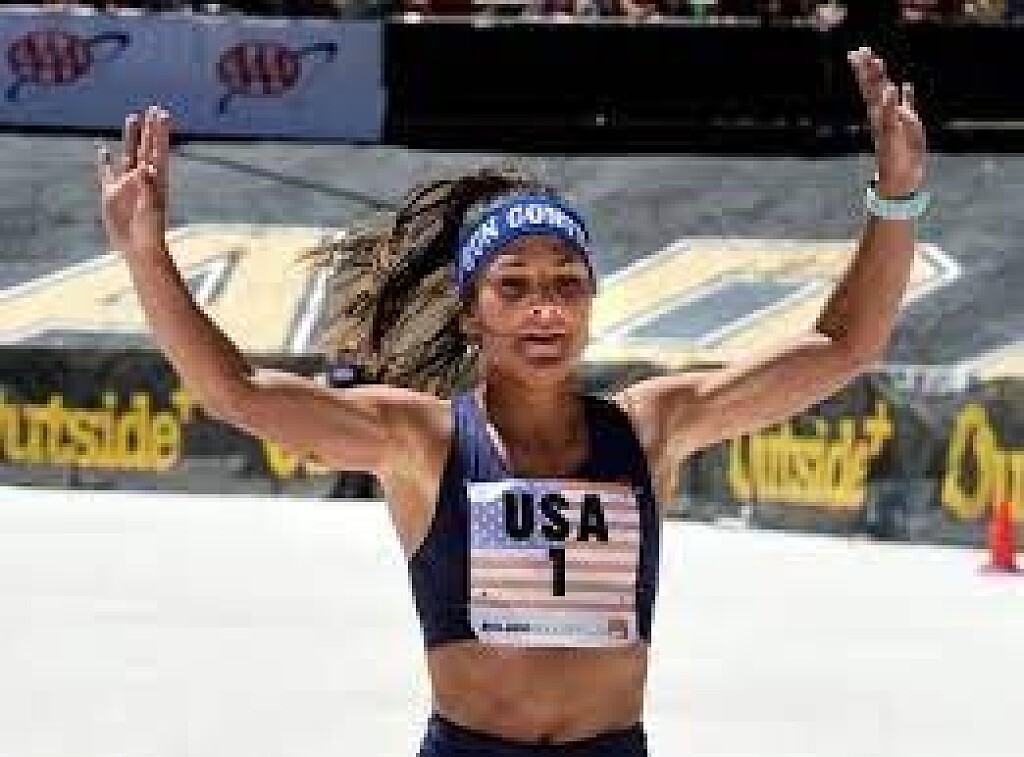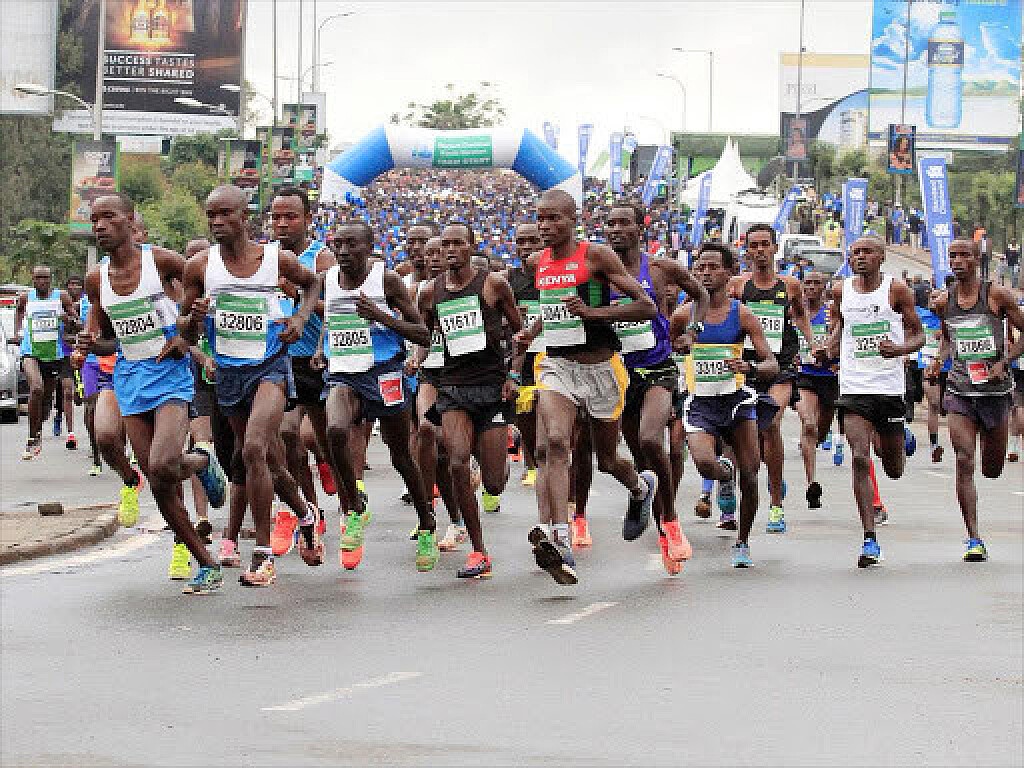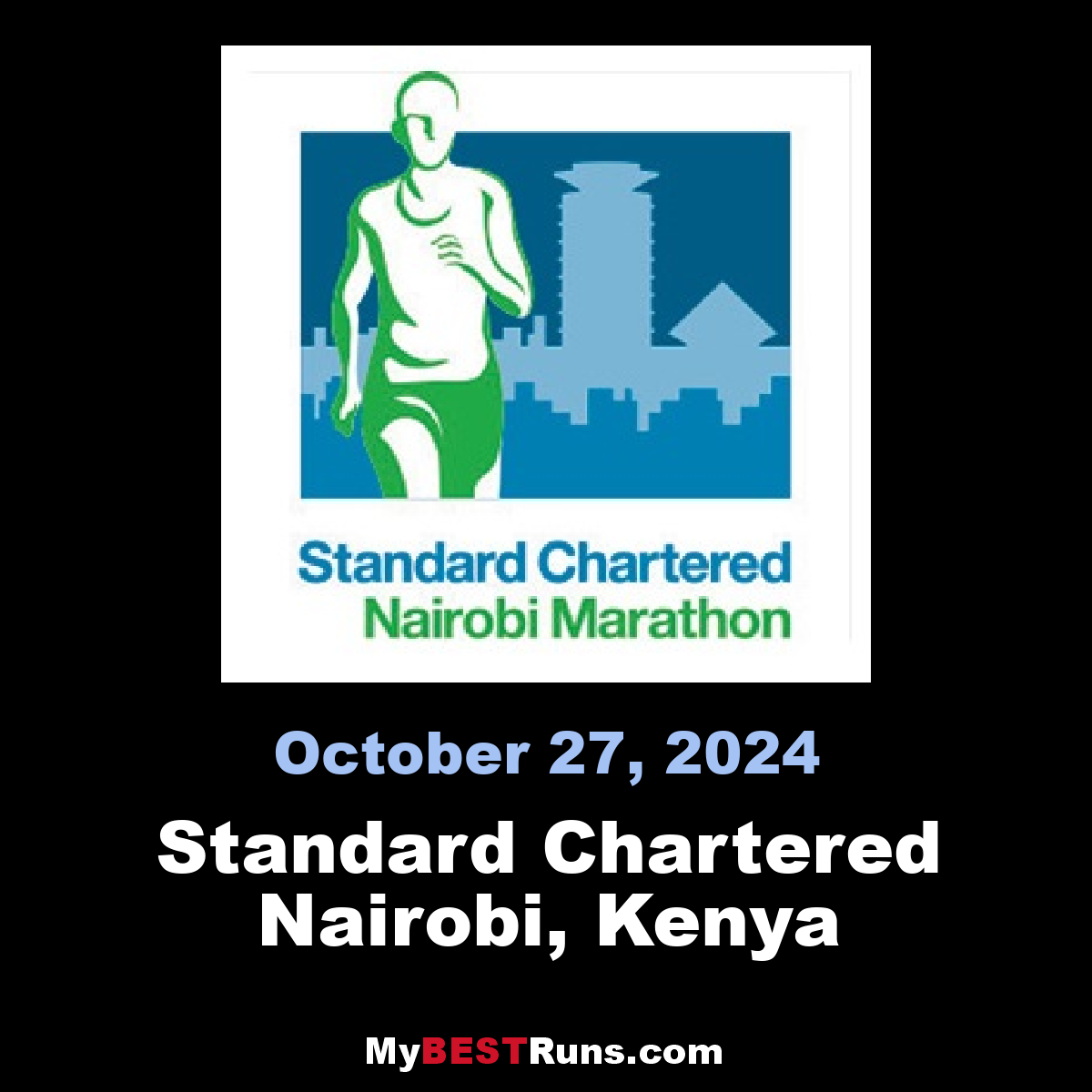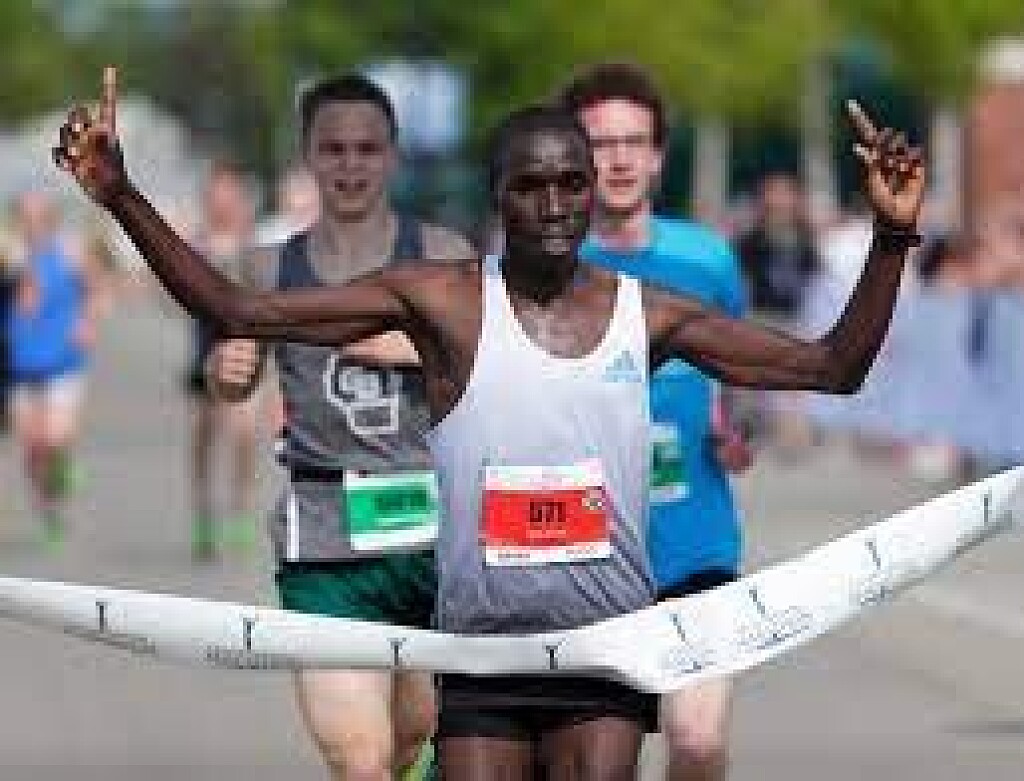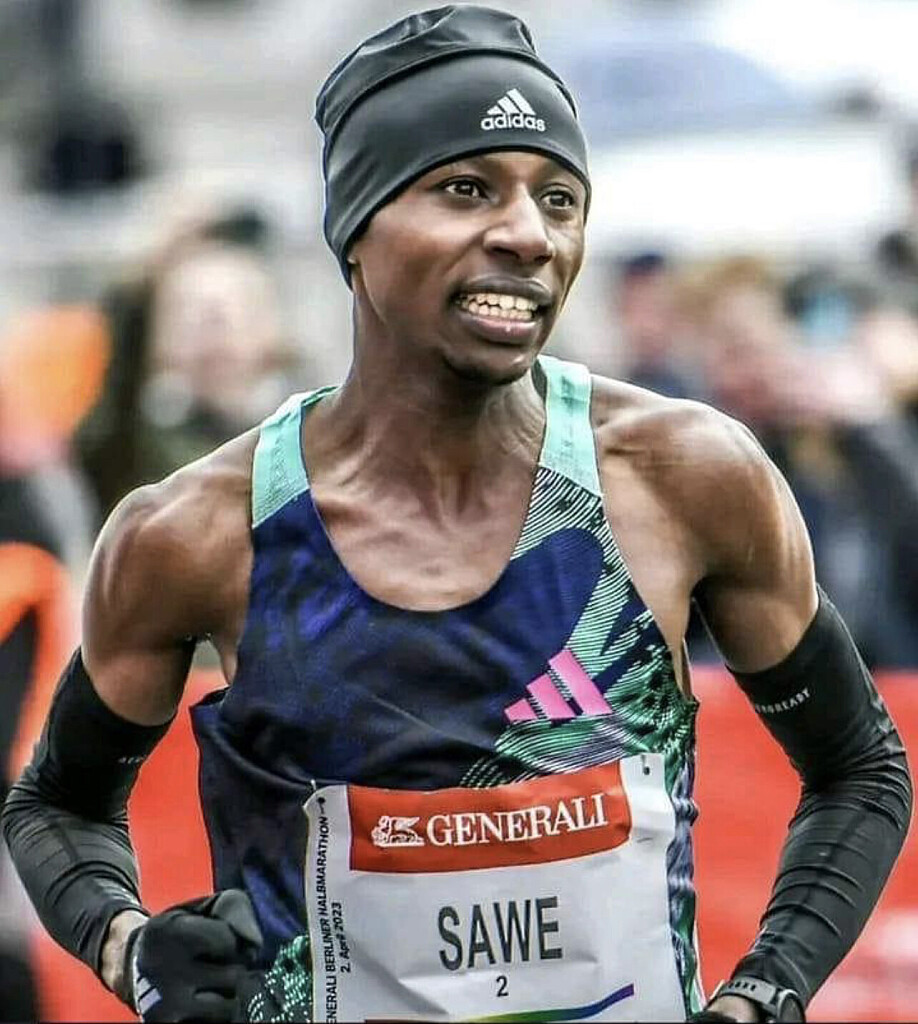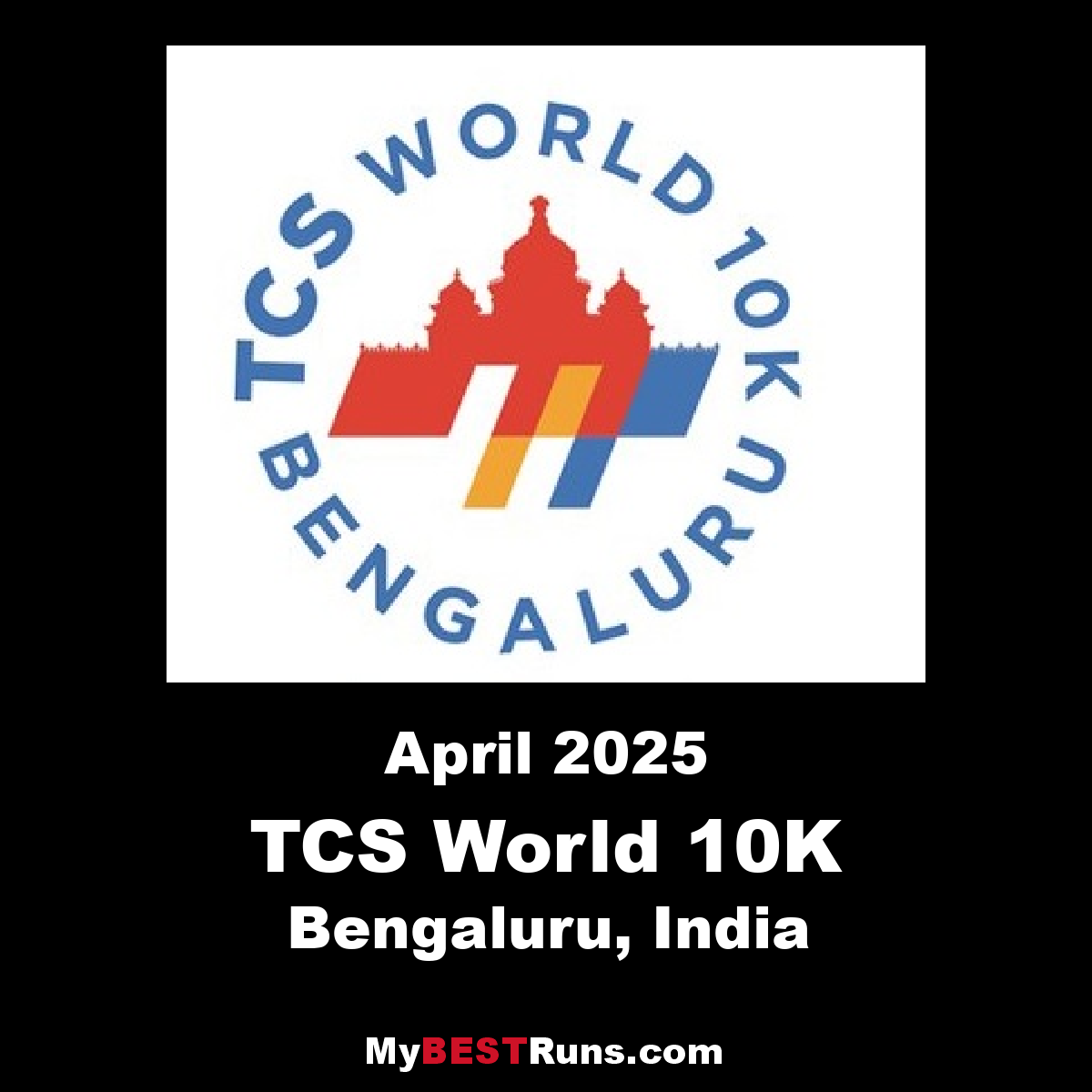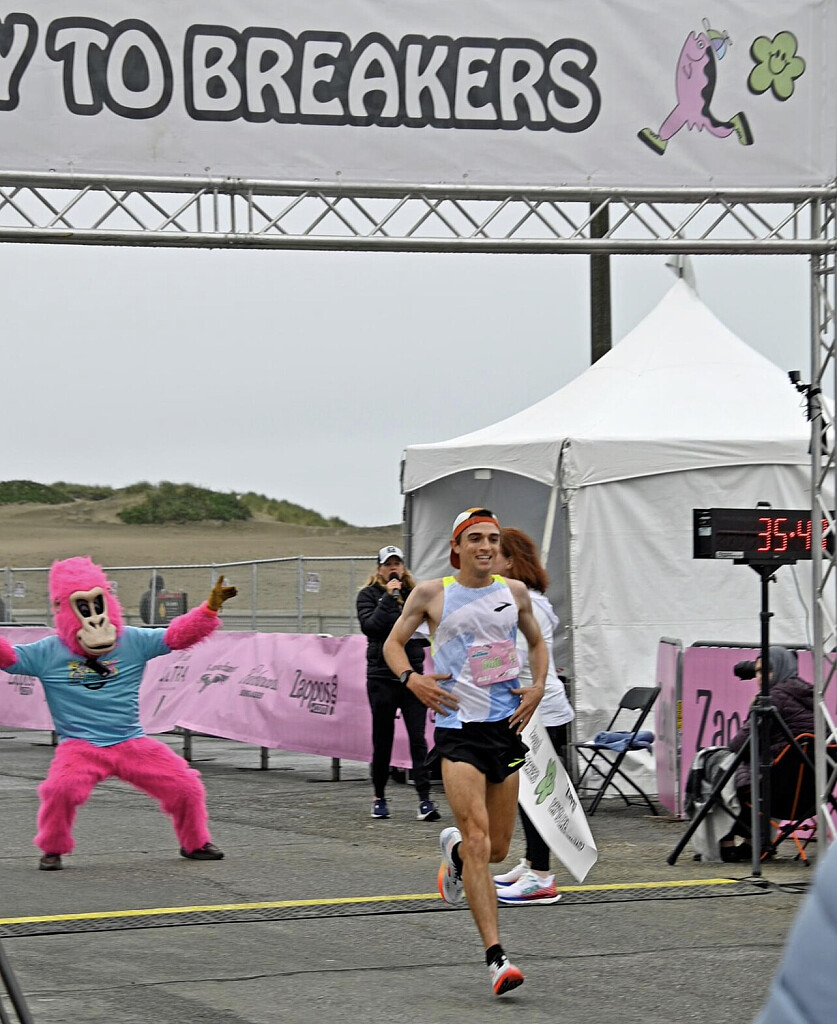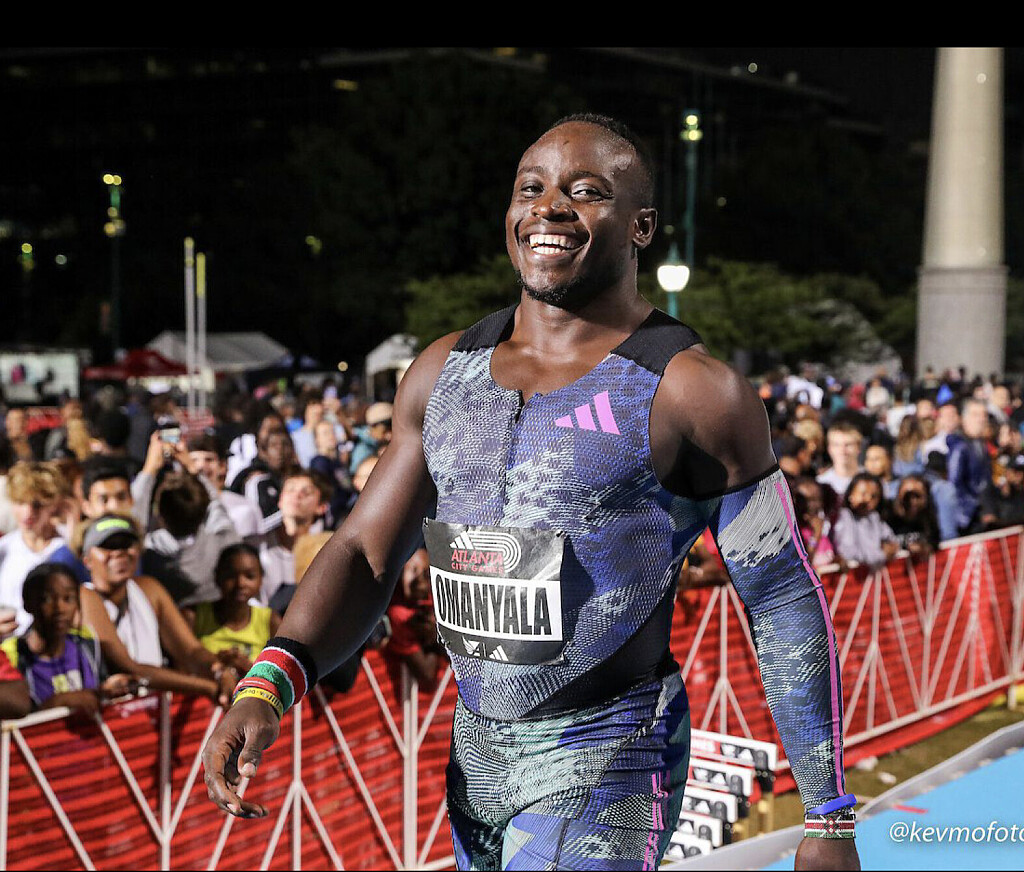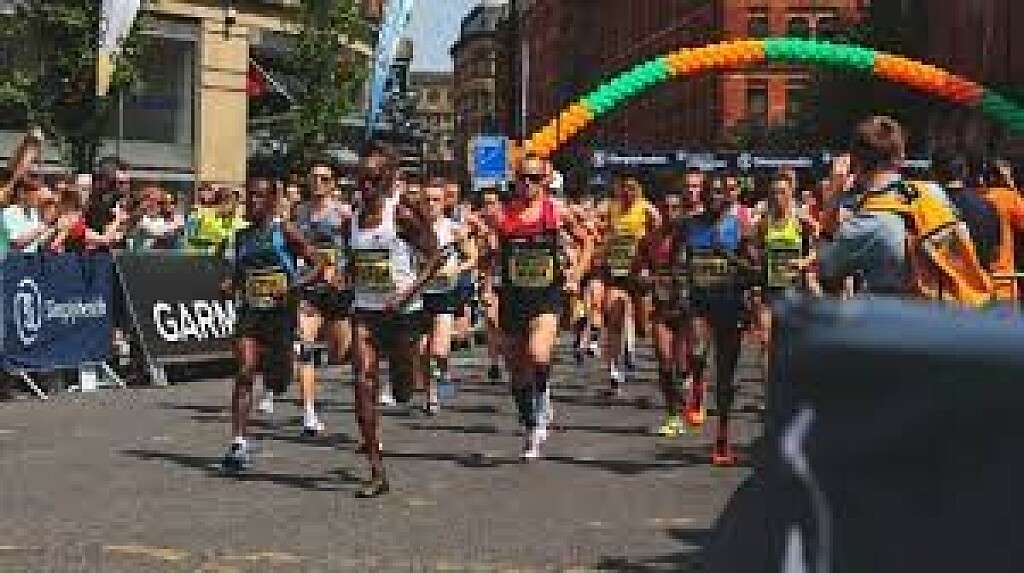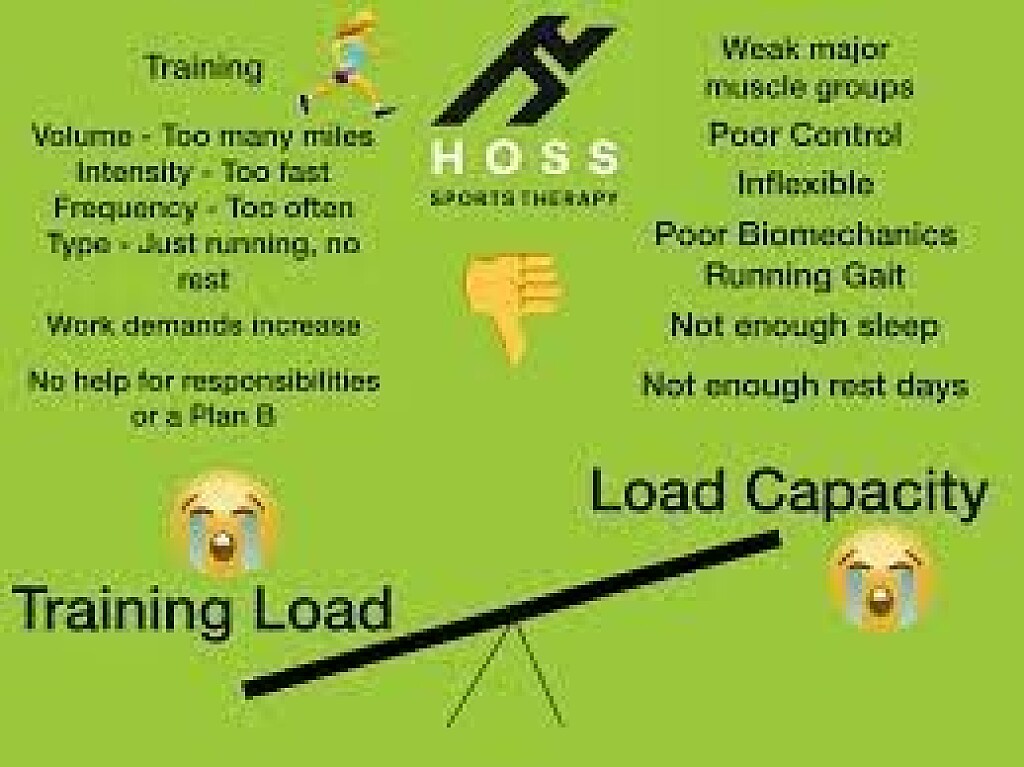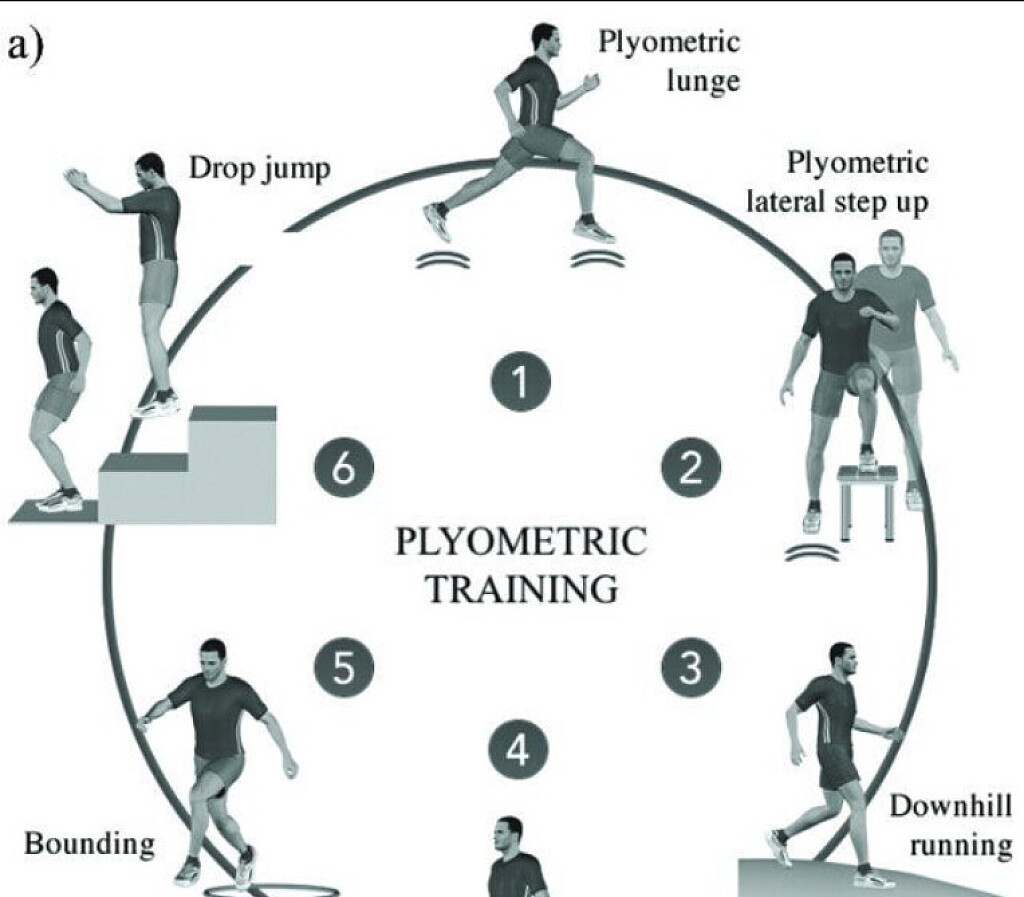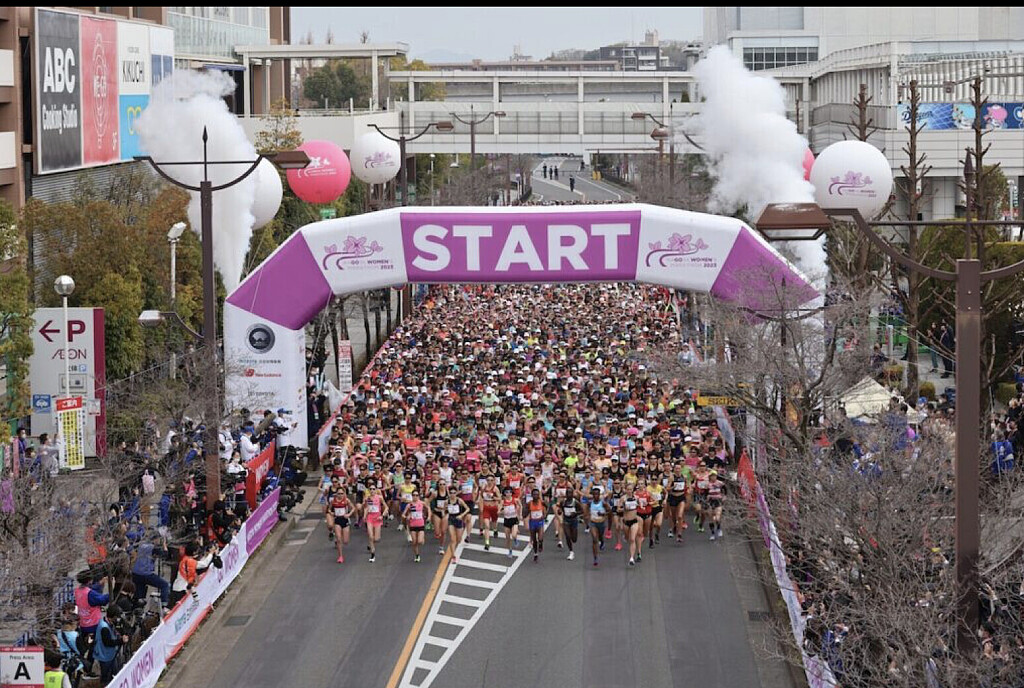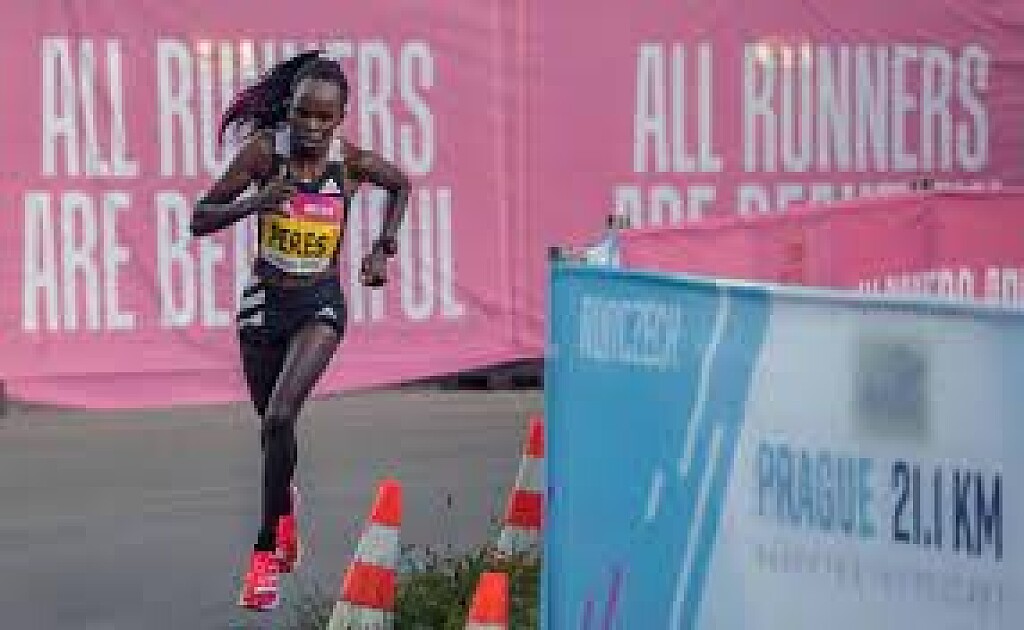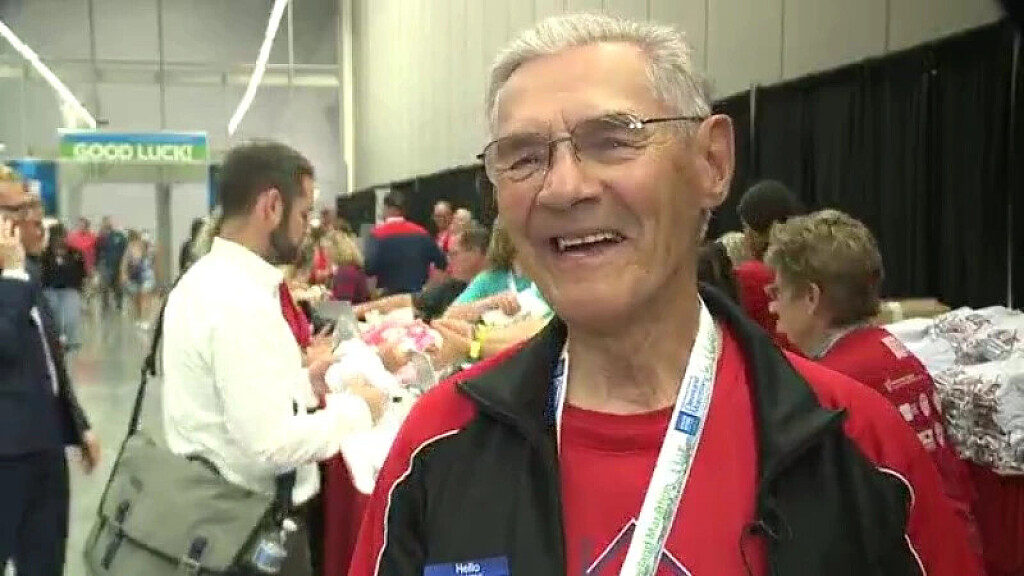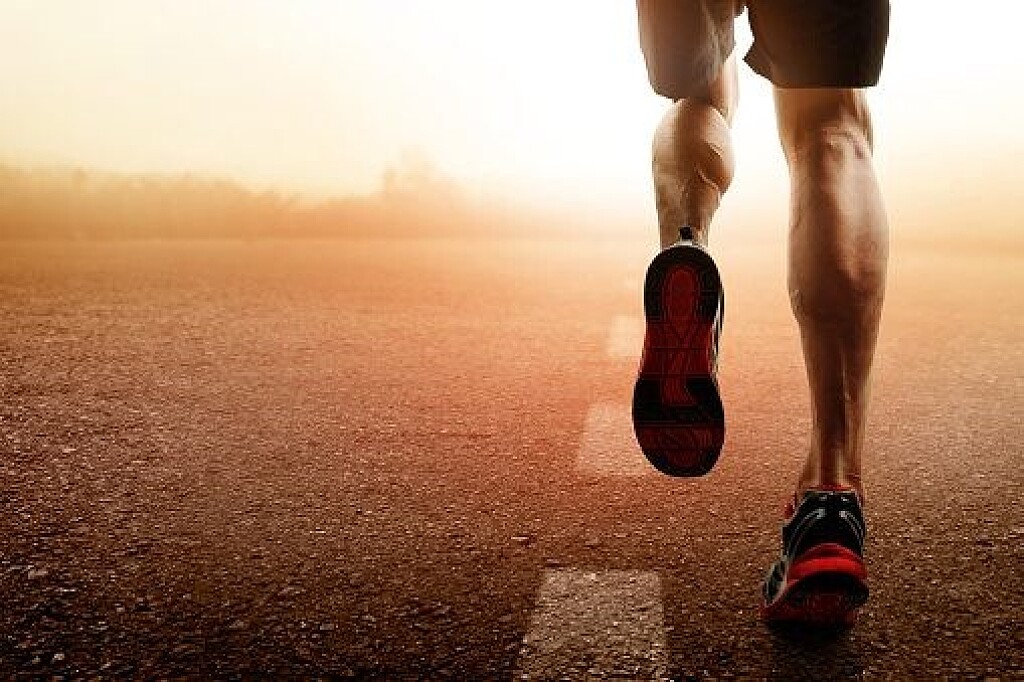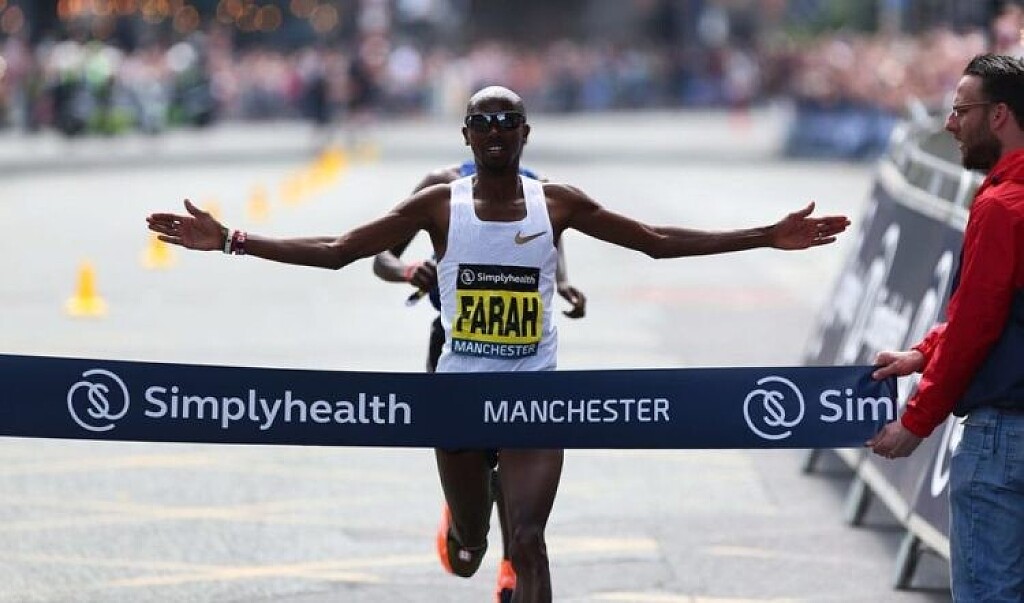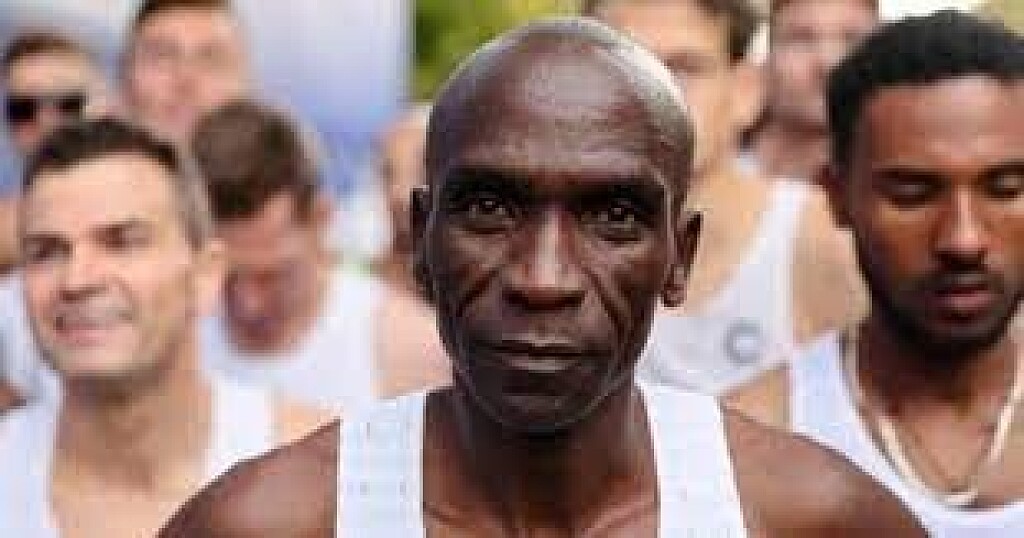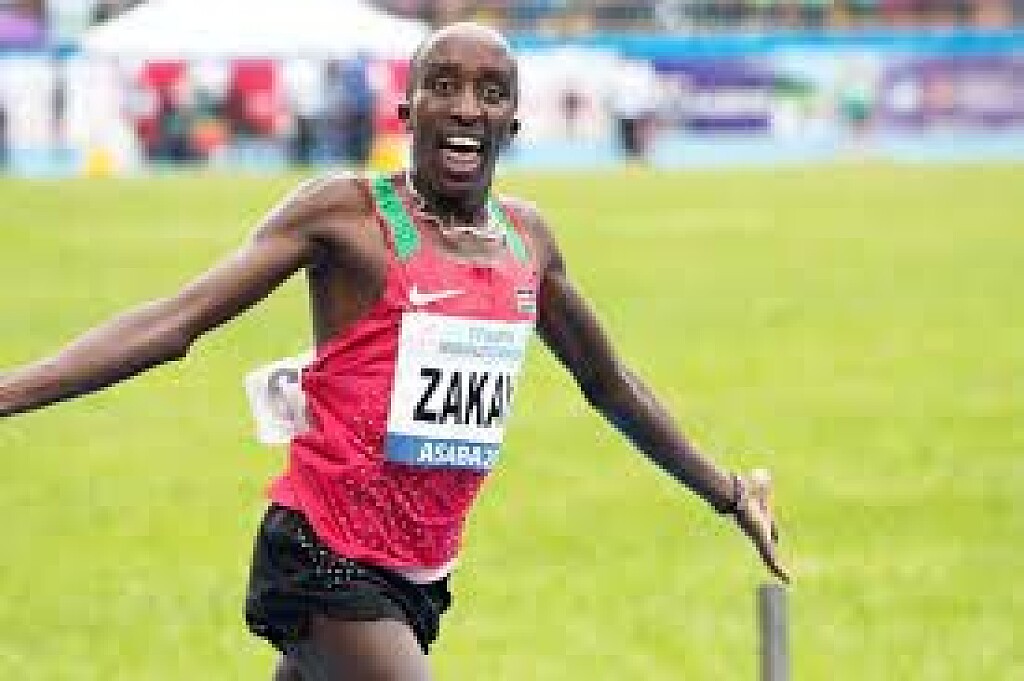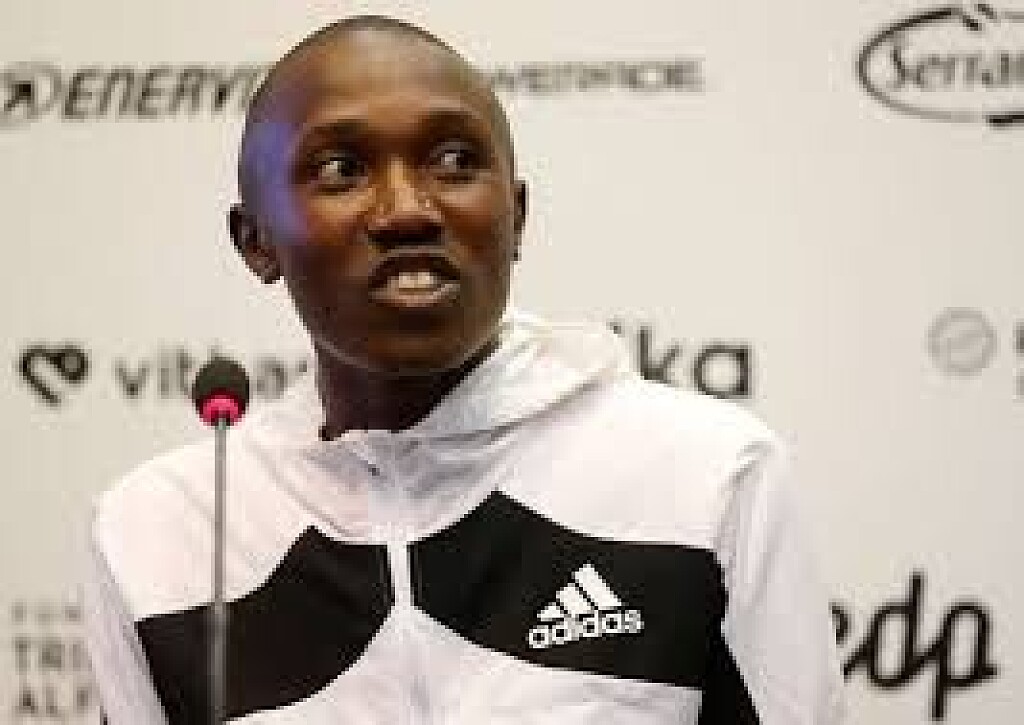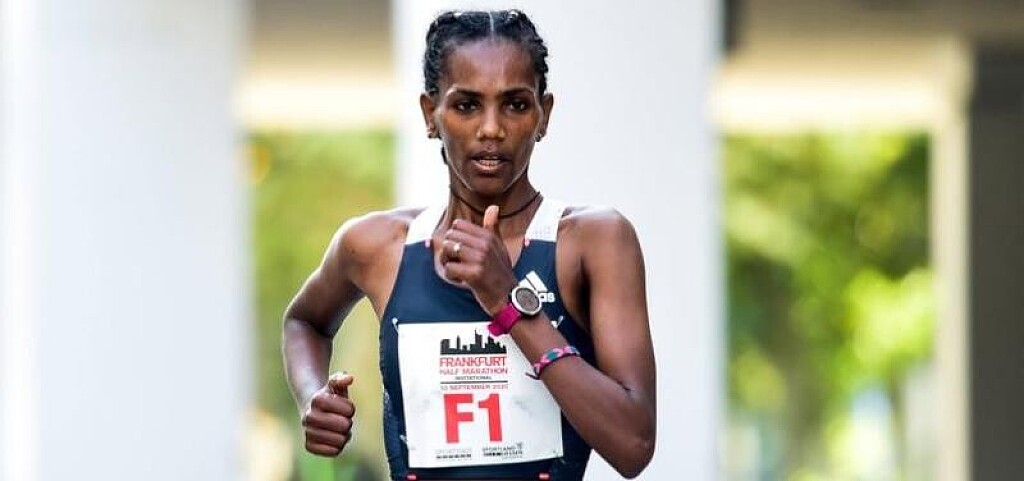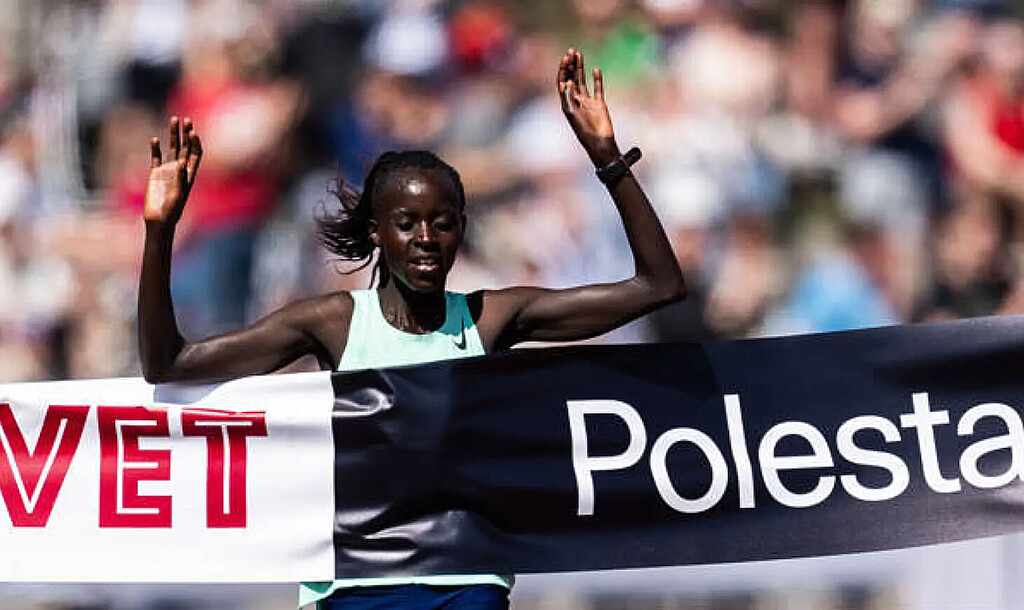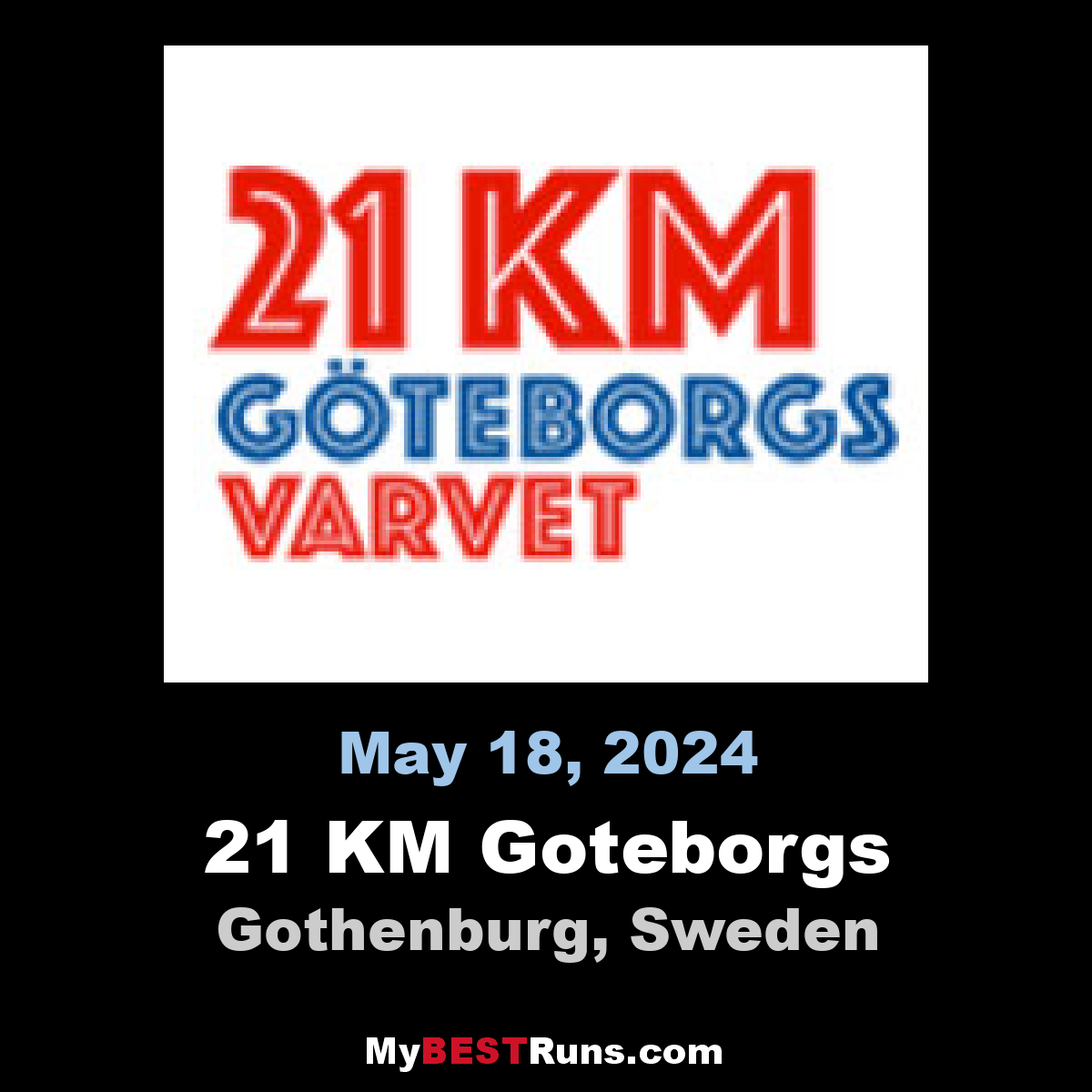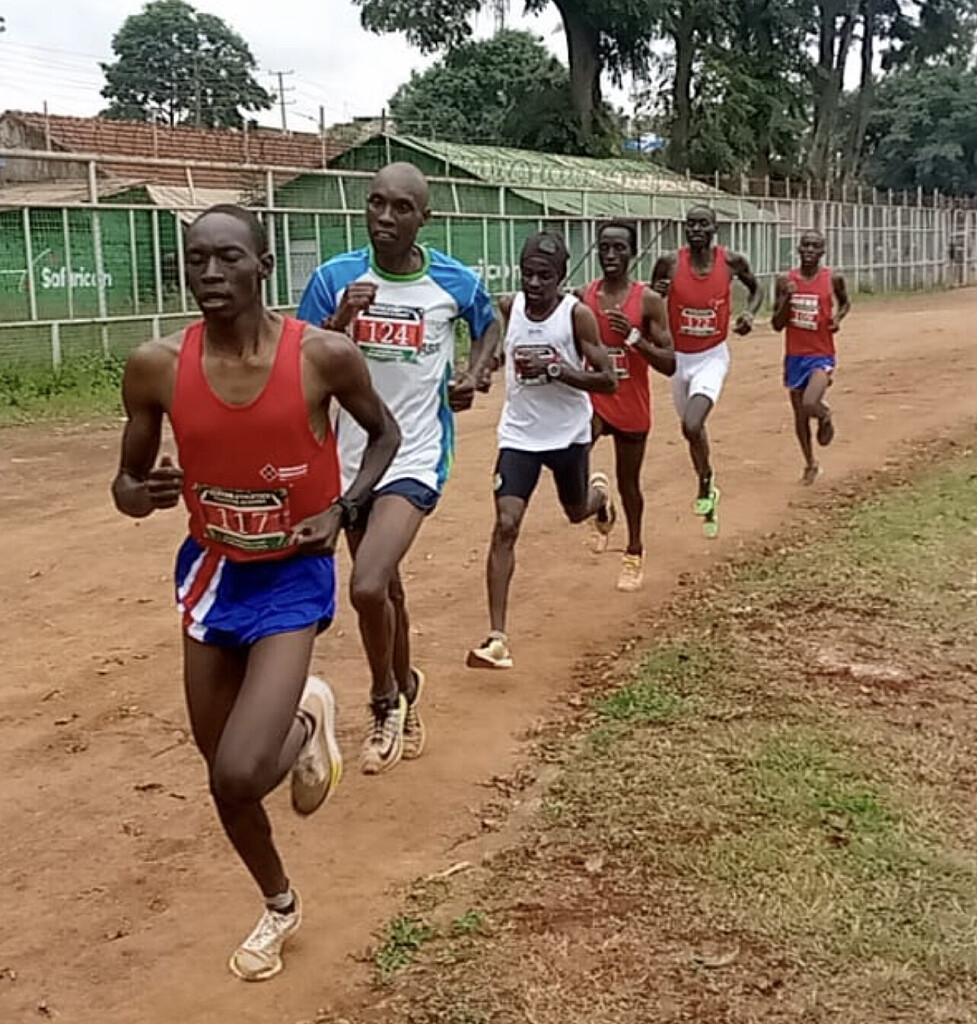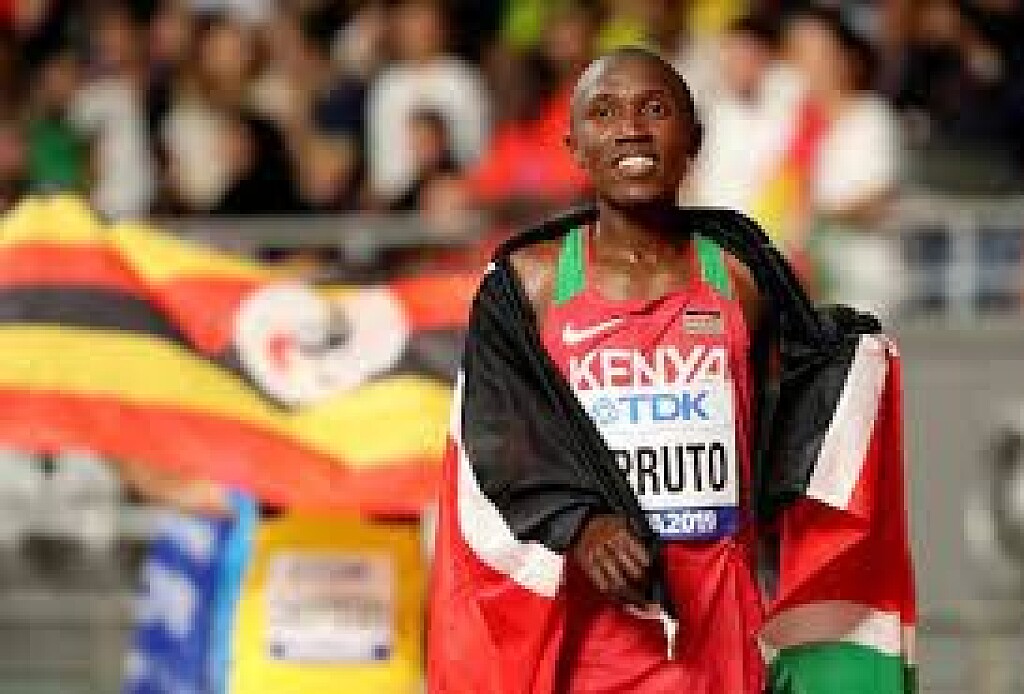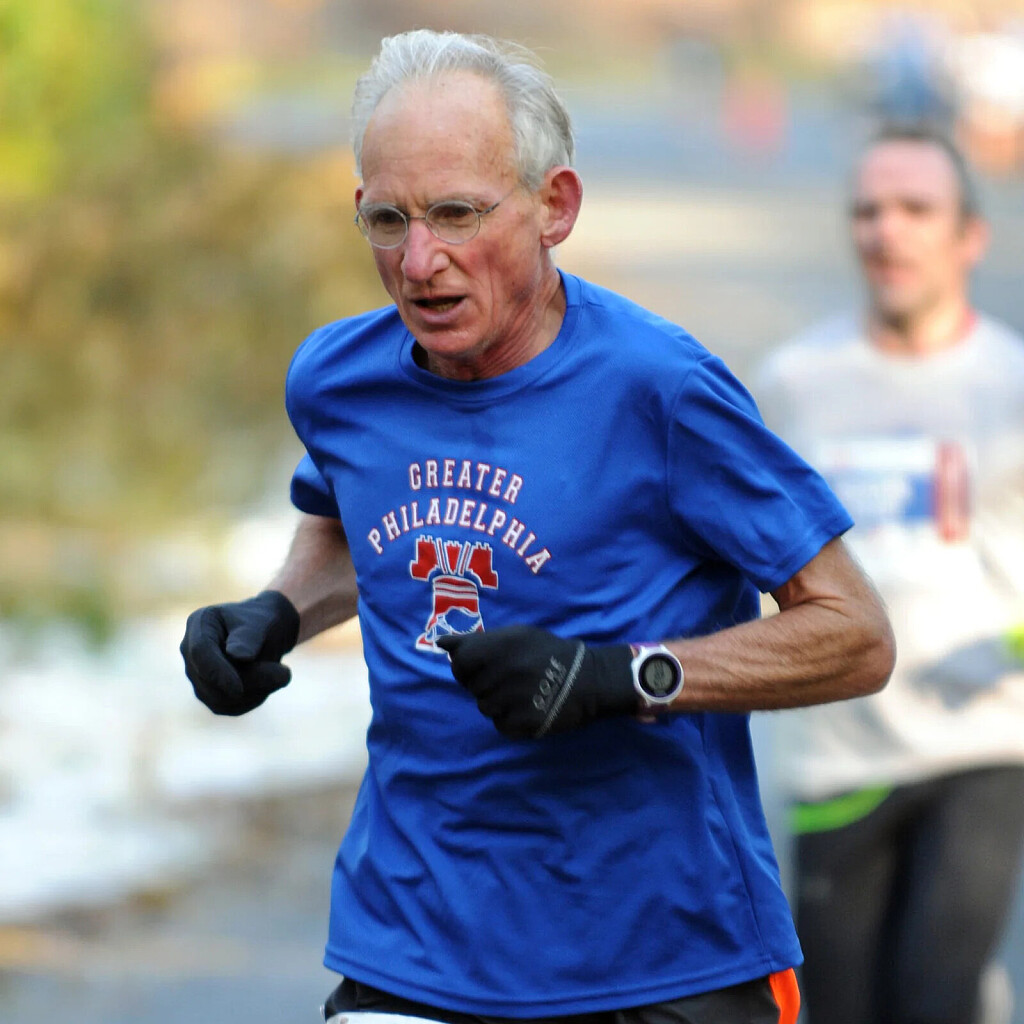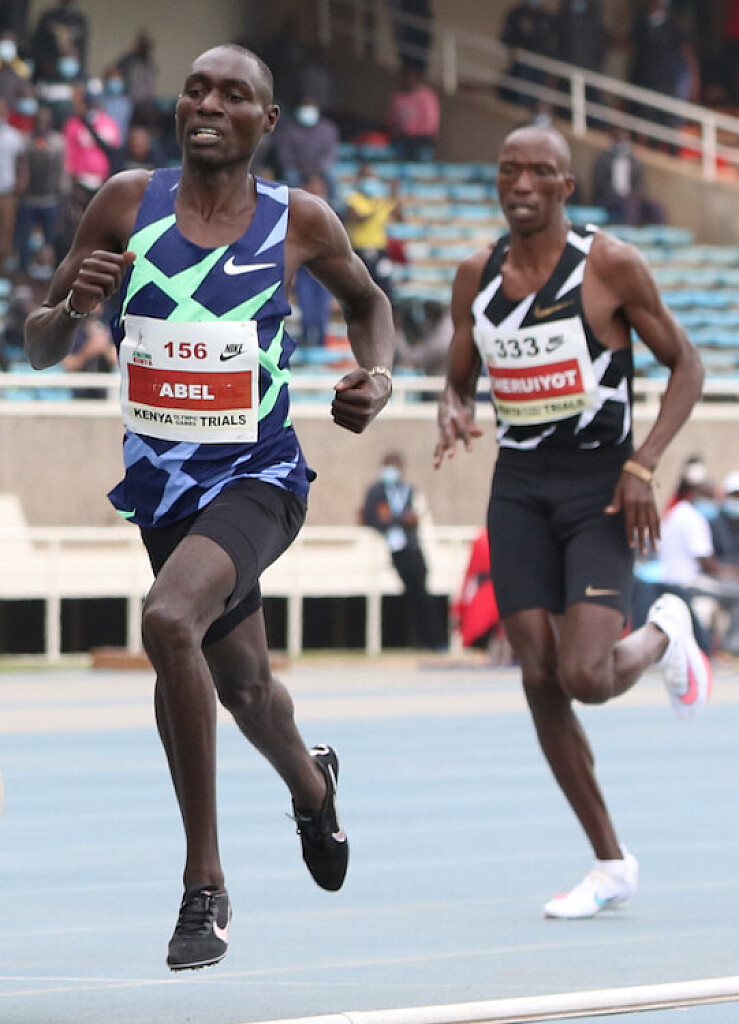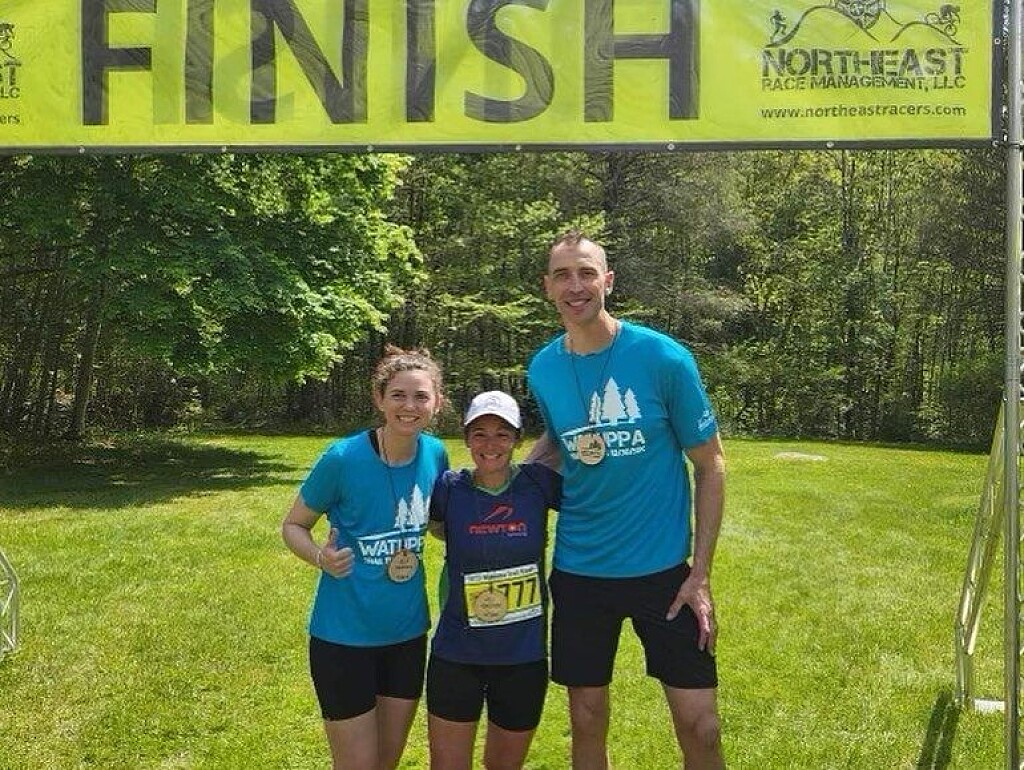Running News Daily
Running News Daily is edited by Bob Anderson in Mountain View, California USA and team in Thika Kenya, La Piedad Mexico, Bend Oregon, Chandler Arizona and Monforte da Beira Portugal. Send your news items to bob@mybestruns.com Advertising opportunities available. Over one million readers and growing. Train the Kenyan Way at KATA Running Retreat Kenya. (Kenyan Athletics Training Academy) in Thika Kenya. Opening in june 2024 KATA Running retreat Portugal. Learn more about Bob Anderson, MBR publisher and KATA director/owner, take a look at A Long Run the movie covering Bob's 50 race challenge.
Index to Daily Posts · Sign Up For Updates · Run The World Feed
Candice Burt tapering off after 200 ultras in 200 days
Candice Burt completed her 200th ultramarathon in 200 days earlier this week and says her body is holding up well after the staggering feat.
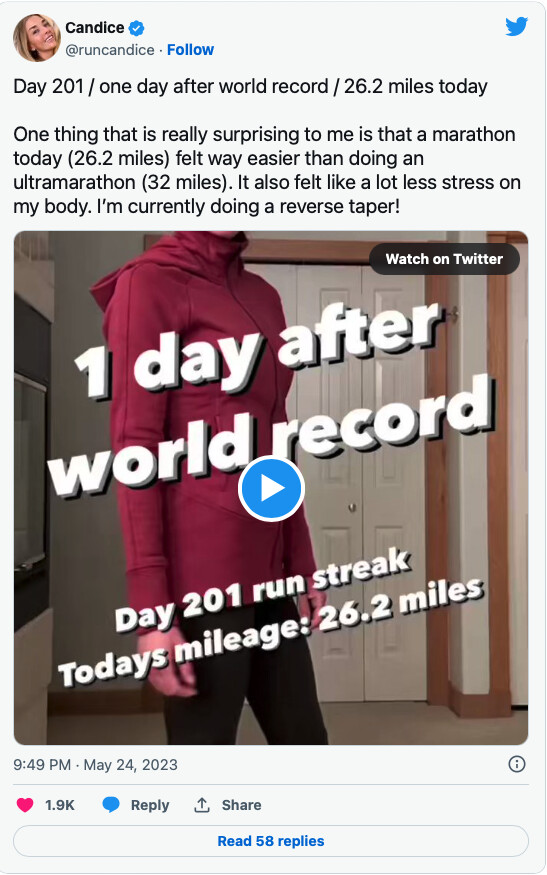
The American is set to claim the Guinness World Record once her endeavour is verified, with the previous best for consecutive days running an ultra marathon standing at 22.
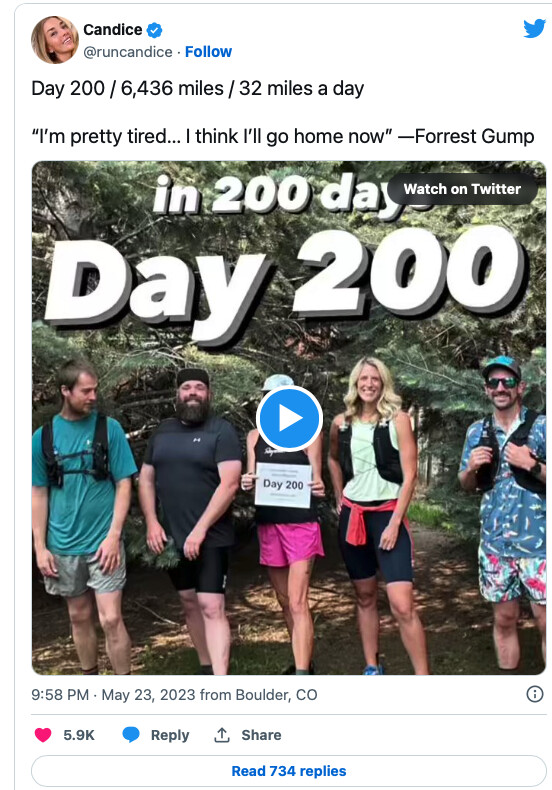
Burt, whose company Destination Trail is behind the Triple Crown of 200s – Tahoe 200, Bigfoot 200 and Moab 240 – covered over 6,400 miles after setting off on November 5, 2022.
She even ran the HURT 100 in Hawaii to continue her streak on days 71 and 72, a brutal race David Goggins has taken on four times, failing to finish in 2012.
Mental resilience
“Every morning I woke up and got it done no matter what,” she wrote on Instagram after finishing her final ultramarathon. “Thank you to the men and women who set the bar before me!”
“Records inspire us to find within ourselves courage and discipline to advance humanity
“This run has been about me trusting my body & adapting to every demand I encountered along the way. It is a personal quest, one in which I looked to satiate my curiosity about endurance, my body, running and the mind.
“That fire has only grown.
“My heart is content and I’m excited about my future adventures and spending the summer with my kids exploring Colorado.
“It’s truly incredible how good my body feels, although I’ll be the first to admit it’s changed a lot of the past 200 days. Some changes are good, some are not.”
Easy marathon
Burt is now in the process of winding down after her eye-watering schedule, but still ran a typical marathon – 26.2 miles – the day after her 200th ultra, undeterred by an “epic” thunderstorm in the latter stages.
“One thing that is really surprising to me is that a marathon today felt way easier than doing an ultramarathon,” she wrote in another Instagram post.
“I don’t have much fatigue running even 20 miles, but as I taper off the world record, part of me seems to be allowing myself to think, ‘my legs feel tried today’ instead of having to box that up and file it away.
“When you’re running a 50k a day no matter what, your feelings don’t really matter. Pain or tension in the body is used to indicate where to focus on any rehab/PT rather than to feel sorry for myself or shorten the run.
“This allowed me to grow, adapt and achieve a higher level, but it came at some cost.
“What’s the cost? There’s a bit of a disconnect between my feelings and sensations and the run. Those sensations — at least the pain or immobility ones—are saved for after the run and only for the context of treatment. My feelings, when negative, were filed away completely because they weren’t needed or helpful.
“I think learning to do this is very helpful in many endeavours. But to live in the world outside the runs I sometimes need to access these things more readily. Just an observation – one that I hope to delve into a bit more at some point.”
Flexibility decrease
Burt reiterated that her physical condition is remarkably solid, aside from some understandable stiffness following her relentless running effort.
“Let’s talk about my body: physically I feel great. There are times I’m not sure if its as great as I think or if I just got used to a high level of tension. I will get up and I can tell my muscles are sharp and ready.
“My flexibility has been significantly reduced in favor of stability and propulsion. This serves me well when running, but can make other daily tasks harder.
“For example, I cannot sit on my heels with my toes under me stretching the bottom of my feet. My feet simply don’t stretch like that anymore.”
Burt is eyeing more record-breaking runs in the future, but for now, she is enjoying a return to normality and spending time at home with her children.
(05/27/2023) ⚡AMP
Kara Goucher’s Book Offers Rare Insight Into Elite Athlete Contracts
Confidentiality clauses usually stop runners from talking about their endorsement deals.Kara Goucher’s memoir about her career in professional running, The Longest Race, alleges shocking behavior by her longtime coach, Alberto Salazar, and how she overcame it. But a subplot throughout the book is how much money she was earning in the sport along the way.
Goucher is open about her contract with Nike and appearance fees at races, including the New York City Marathon, the Boston Marathon, and the Great North Run in the U.K. (Nike did not respond to an email from Runner’s World seeking comment.) Even though the deals are from 10 to 20 years ago, they provide an interesting look at the business side of professional running. It’s a rare peek, too, because sponsor contracts are bound by confidentiality clauses and, in many cases, those clauses extend beyond the term of the contract.
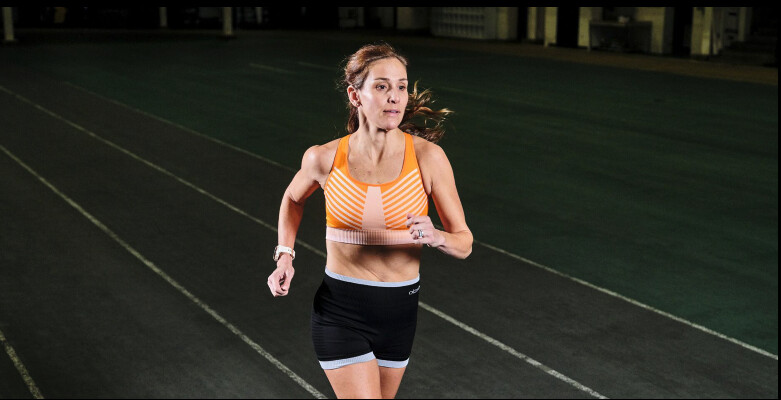
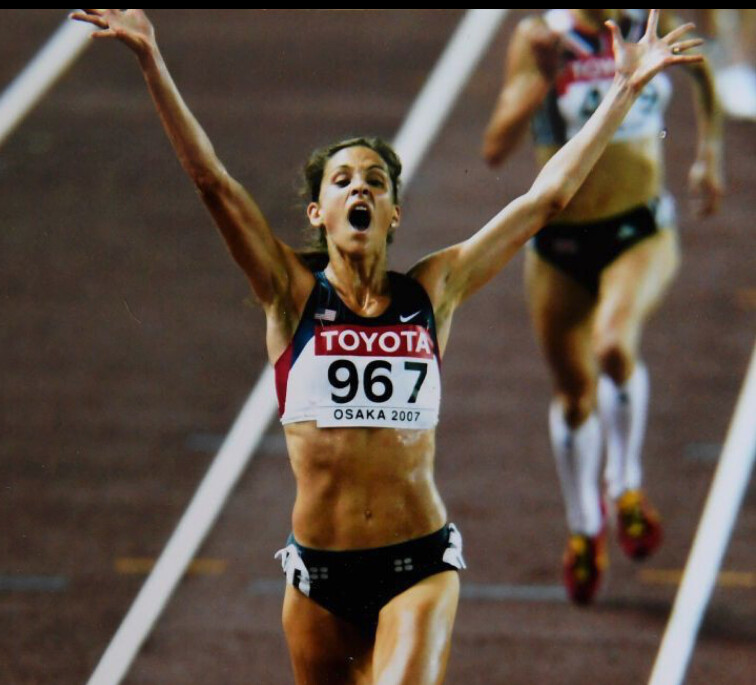
Goucher’s did, but she decided to reveal the information anyway—to be helpful to other athletes. “I just felt like it was very important to have those numbers in there,” she said in a phone call with Runner’s World. “How do you know what to ask for if you have no idea what anyone else is getting paid?” Here’s what we learned about Goucher’s pay and that of her husband, Adam Goucher, from the book:
In 2000, Adam Goucher was making a base payment of $50,000 from Fila, his first sponsor. In his first year, he ran so well that he earned $185,000 with bonuses. Goucher writes that the pay was a “welcome windfall that helped him pay off student loans.”
In 2001, Kara Goucher signed a four-year deal with Nike for $35,000 per year. This was her first professional contract after she graduated from the University of Colorado.
In 2003, Adam Goucher signed with Nike with a base pay of $90,000 per year. The Longest Race: Inside the Secret World of Abuse, Doping, and Deception on Nike's Elite Running TeamIn the fall of 2007, she ran the Great North Run, a half marathon in Newcastle, England. The race director paid her an appearance fee of $13,000 and made a deal with Goucher’s agent at the time, Peter Stubbs, to pay her $30,000 if she won. The money was “not far off the annual salary I had lived on for years,” Goucher wrote. She won the race.
In February 2008, Goucher signed a new Nike deal that paid her $325,000 per year for four years, with an option for Nike to extend to a fifth year. The contract included performance bonuses ranging from $10,000 to $500,000 for an Olympic gold medal. There were also reductions, which could cut her pay. She had to race 10 USATF-sanctioned events per year, and if she ended the year ranked lower than third in her event in the U.S. or out of the top 10 in the world, Nike could dock her pay.
Goucher told Runner’s World that, for her second shoe deal, she asked her agent to accept a commission of 8 percent for each year of the deal. The industry standard is 15 percent. He agreed. She continued to pay him 15 percent on her appearance fees and prize money. She also made sure that she was paid directly by Nike and then she paid her agent. (In most cases these days, the shoe company pays the agent, who then pays the athletes, because it’s less paperwork for the shoe company, having to deal with individual athletes.)
In November 2008, Goucher made her marathon debut at the New York City Marathon. She earned an appearance fee of $175,000. Nike also paid her bonuses paid on based on her place and time, but Goucher didn’t disclose those. She wrote, “One good marathon and I could easily walk away with more than my yearly contract salary.” In April 2009, Goucher ran the Boston Marathon, which, at the time, traditionally paid less in appearance fees to athletes than New York. (It is also the only major marathon in the U.S. in the spring.) Her appearance fee was $80,000, but when she learned another American, a male runner, was making $85,000, she asked the BAA to match that. Race organizers agreed.
In early 2010, Goucher learned she was pregnant with her son, Colt. Salazar confirmed with Nike executive John Capriotti on Goucher’s behalf that Goucher wouldn’t suffer a reduction in her pay as long as she remained “relevant,” she wrote. Her first of four quarterly payments from Nike arrived on time in January, as did her second in April. But in July, her accountant told her that her payment hadn’t arrived. Nor did her October payment.
This set off a lengthy battle between Goucher and Nike over money during her pregnancy. Ultimately, Nike docked her pay for six months and extended her contract to the end of 2013.
At the end of 2010, Adam Goucher’s contract with Nike ended.
In 2011, USA Track & Field (USATF) said it would be dropping the Gouchers’ health insurance, because her marathon ranking had dropped while she was pregnant. She appealed the decision, and the U.S. Olympic Committee stepped in and reinstated the health insurance. This rule has subsequently been changed—pregnant athletes can keep their health insurance—and today’s runners laud that change.
At the end of September 2011, Goucher left the Nike Oregon Project. She remained under contract with Nike and stayed in Portland, Oregon. Jerry Schumacher coached her, and she trained with Shalane Flanagan.
At the end of 2013, Goucher scrambled to race 10 times so Nike wouldn’t suspend her pay again. She ran a turkey trot to fulfill her obligations (and won a pie). Her contract with Nike ended at the end of the year, and she and Adam sold their house in Portland and moved to Boulder, Colorado.
In 2014, Goucher entertained contract offers from other companies, although Nike still had the option to match any offers. Saucony offered her $1 million total over 5 years, with bonuses and no reductions. Ultimately, she chose to sign with women’s clothing brand Oiselle for $20,000 per year, and a 2 percent stake in the company. She signed a separate deal for footwear with Skechers.
Today, Goucher encourages athletes to speak up and not be afraid to rock the boat, especially those who are lower-paid. She faults the secrecy around pay in track and field with creating difficult situations. It’s required to agree to the confidentiality clause in contracts in order to secure the deal, she said, and in some cases, that gives cover to companies that underpay talented athletes. The confidentiality clause “only harms the athlete and protects the brand,” she said. “Because then they can continue to pay you the least amount possible.”
Agent Hawi Keflezighi, who has never worked with Goucher, agreed with her assessment. “I think there are a lot of very bad contracts out there that footwear brands would probably be embarrassed to admit to,” he said. “There are some really bad deals out there that would probably create a backlash.”
(05/27/2023) ⚡AMP
by Runner’s World
Canfranc to host 2025 World Mountain and Trail Running Championships
The third edition of the World Mountain and Trail Running Championships (WMTRC) will take place in Canfranc-Pirineos, Spain, between 25-28 September 2025.
The awarding of the event to Canfranc in the Pyrenees follows a successful bid by the Government of Aragon, the Canfranc Town Council, the Huesca Provincial Council, the Higher Sports Council and the Royal Spanish Athletics Federation (RFEA) to event partners the International Association of Ultrarunners (IAU), the International Trail Running Association (ITRA) and the World Mountain Running Association (WMRA), alongside World Athletics.
As well as the four-day elite race programme, the event will include a summer-long cultural and leisure festival to promote the Pyrenees Mountain Range.
Around 1700 athletes from 70 countries are expected to meet in September 2025 in Canfranc-Pirineos, which takes over from Innsbruck in Austria – host of the next edition of the championships, taking place this year between 6-10 June.
The race programme will feature uphill mountain running, classic up and down mountain running, short trail, long trail and U20 classic up and down mountain events.
“On behalf of the LOC, we are thrilled to be hosting the 2025 World Mountain and Trail Running Championships in our country and look forward to welcoming the best mountain and trail runners from all corners of the globe,” said RFEA President Raul Chapado.
“As a team, we express our deep satisfaction and appreciation to World Athletics and its partners WMRA, IAU and ITRA for choosing our beautiful region of Canfranc and the stunning Aragonese Pyrenees as the venue for this world-class event.
“The championships offer a unique opportunity for fans to witness the best mountain and trail runners from around the world compete in an unparalleled natural environment. We are excited to collaborate with the public administrations, sponsors and volunteers to leave a permanent legacy and create an unforgettable experience for all participants.”
The Aragonese proposal was backed by great experience in the organisation of sporting events such as the Canfranc-Canfranc, an annual event that features two Gold level Valsir Mountain Running World Cup races.
Canfranc-Pirineos offers a superb sporting environment, which will allow each athlete to perform to the best of their ability and create a complete competitive experience for athletes, teams, federations and international associations. That is proven by the list of world champions who have run and won at the Canfranc-Canfranc: from Kenya’s Joyce Muthoni Njeru to USA’s Grayson Murphy and Britain’s Charlotte Morgan, as well as Spain’s Oihana Kortazar, Manuel Merillas, Luis Alberto Hernando and Daniel Osanz.
In 2024, the Canfranc-Canfranc will host the World Masters Championships, before the region welcomes athletes for the World Mountain and Trail Running Championships in 2025.
Events due to take place as part of the associated festival include a series of awareness days, with emphasis on respectful use of the environment, and a natural running congress on the technical history and future convergence between the disciplines of athletics in nature: cross country, mountain running and trail running.
“It is our great pleasure to see the joint initiative to organise the World Mountain and Trail Running Championships continue its great momentum and we are excited that the third WMTRC will take place in Canfranc, Spain, in 2025 in the beautiful Pyrenees – a paradise for mountain and trail running,” said ITRA President Janet Ng, IAU President Nadeem Khan and WMRA President Tomo Sarf in a joint statement.
“It will be the second time that the championships have been held in Europe. The initial event took place in Chiang Mai, Thailand, and was a huge success. We are confident that the second edition in Innsbruck and Stubai will build on that in the coming days and that the third edition in Canfranc will reach even greater heights.
“We would like to thank the bidding committee, the Spanish athletics federation and World Athletics for all the cooperation and support during the application process to host the championships. The bidding committee worked extremely hard to prepare a compelling and impressive bid and we are all very much looking forward to being in Canfranc with the world’s best athletes in 2025.”
Innsbruck-Stubai entries confirmed
A total of 1122 athletes from 67 member federations are entered to compete in the next edition of the World Mountain and Trail Running Championships, taking place in Innsbruck-Stubai in Austria between 6-10 June.
That number includes 506 athletes entered into 574 women’s events and 616 athletes entered into 710 men’s events, with the programme featuring uphill mountain running, classic up and down mountain running, short trail and long trail. U20 men and women will compete in classic up and down mountain running.
USA’s Allie McLaughlin and Adam Peterman, Kenya’s Patrick Kipngeno, Norway’s Stian Angermund, Romania’s Denisa Dragomir and Blandine L'Hirondel of France were among the winners at the inaugural World Mountain and Trail Running Championships, held in Chiang Mai, Thailand, in November.
(05/27/2023) ⚡AMPby World Athletics
Four tips for clearing mental hurdles on tough trail runs
A tough trail run can be even more of a grind on the brain than it is on the body. While running offers a mental challenge whether you’re doing intervals on the track or sweating bullets on a treadmill, hitting the trail can present unique psychological hurdles, particularly for those who are new to this kind of running. Consider these tips for staying level-headed on uneven terrain during your next trail run.
1.- Build confidence through preparedness

Getting in the right frame of mind for a challenging trail run starts well before you take your first steps. Reduce anxiety and doubt by going into your run confident and prepared. For trail runners, confidence begins with having the information you need to navigate your route safely. Familiarizing yourself with a section of the trail beforehand by checking an online map or following a well-worn route that others have already laid out using an app, such as Strava, can spare you from uncertainty and mental stress on your run.
For those runners who embrace the trails as a chance to explore and lose themselves in the woods, having a map—digital or otherwise—handy in the event of a very wrong turn can strike a good compromise between being adventurous and being prepared. If planning a run at a park or conservation area, it never hurts to check the site’s website before heading out for any trail closures or conditions that might otherwise throw you for a loop.
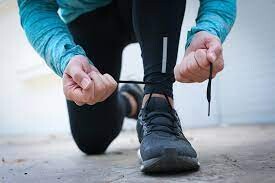
2.- Find a partner
Partnering up with a runner familiar with the area can help you conserve your mental strength in several ways. In addition to offering added peace of mind that you’ll be able to navigate the trails safely—and have someone there to help in case of a serious injury or other medical emergency—an experienced partner can offer insights that simply can’t be gleaned from a map. Getting a heads-up about easy-to-overlook tree roots, patches of poison ivy and other hidden hazards of the trail can keep your creeping uncertainty at bay. More than that, a buddy who knows the area can offer tips to maximize your effort and make your outing more fun. These might include sharing the most strategic areas for walking, upping the pace or taking in nutrition, as well as points of interest like the best places for snapping a photo or spotting wildlife. Those benefits aside, just engaging in conversation can help a tough trail run seem less taxing,
3.- Ask yourself helpful questions
Self-talk can promote a positive mindset on challenging runs, but this type of tool often isn’t used to its potential. Some runners may find comfort in repeating mantras like “I’m stronger than I think” or “pain is temporary,” while others may find the technique monotonous and mentally draining. Instead of limiting your self-talk to statements, try switching to questions. A helpful question to ask yourself when struggling on your run is: “What’s the easiest thing I can do right now that can help me feel more relaxed while staying at the same effort?” This kind of question not only asserts your ability to improve how you perceive your run, but also invites you to scan your body and see where you might be holding stress. Are you clenching your fists? Could your shoulders be looser, or your breathing just a bit slower or deeper? Exploring these questions can do wonders to shift your mental focus from discomfort to ease.
4.- Let your environment work for you
Similar to the way asking yourself the right questions can promote greater ease through mindfulness, being aware of your immediate environment can help keep you grounded mentally. One of the appeals of trail running is the sensory experience it can provide, not just through sights but through the sounds, smells and even the feel of your surroundings. Making a conscious effort to pay attention to all your senses on your run can help you cut through negative mental chatter and make your experience richer and more rewarding.
(05/26/2023) ⚡AMP
by Paul Baswick
Deputy Governor of Edo State, Comrade Philip Shaibu flags off 9th Okpekpe 10km road race
Dare Esan, the media and activation director for the historic, first 10km road race in Nigeria says Shaibu will play a dual role at the race.
“His Excellency the Deputy Governor of Edo State, Comrade Philip Shaibu will participate in the celebrity race,’ said Esan.

Shaibu was presented with his bib in a colourful ceremony on Wednesday at an impressive ceremony in Benin after he registered via online for the race.
“The deputy governor filled his form via the online platform like all others because he is still an active sportsman who has taken Edo state sports to greater heights.
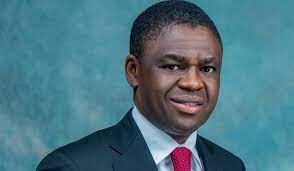
“All eyes will be on the 53 years old to see if he will break his lifetime best in the 10km event,” added Esan
Meanwhile, Dan Oil and Petrochemicals have joined the list of corporate partners for the race.
One of the leading indigenous oil and gas companies, Dan Oil has always been associated with the race.
“We are delighted that one of the leading indigenous oil and gas companies in Nigeria whose services are tailored to meet and deliver the energy demands needed to move equipment and machinery needed to drive the Nigerian economy is partnering with us again to deliver another world class event,’ said Esan.
The media and activation director is thrilled with the way the race has been receiving support for corporate Nigeria and believes getting the Platinum label the Deputy Governor spoke about on Wednesday will be released sooner rather than later.
“We are the first road race in Nigeria to get a World Athletics label status and this was in 2015. We are also the first to have its race course measured and the first 10km race in Nigeria to be granted a gold label status.’
The ninth edition of the race will be held this Saturday in Okpekpe, Etsako East Local Government area of Edo state.
(05/26/2023) ⚡AMPby Dare Kuti
Okpekpe Road Race 10km
The Okpekpe Road Race invites world-class runners from around the world in a tradition tointermix local recreational and up and coming runnerswith the best of the best. Invitation extended to all CAA Member Federations, all military and para-military have sent in entries. Okpekpe is more than just a collection of fertilefarmlands or a window into the past, it is a...
more...Kiptoo, Masai seeking big performances at Bolder Boulder
It's time to be bold for NAZ Elite.
The running team is sending Wesley Kiptoo and Alex Masai to the BOLDERBoulder 10K road race in Colorado set for Monday with the hopes of making some noise on the men's side of the prestigious event after producing some solid outings on the women's side the last few years.
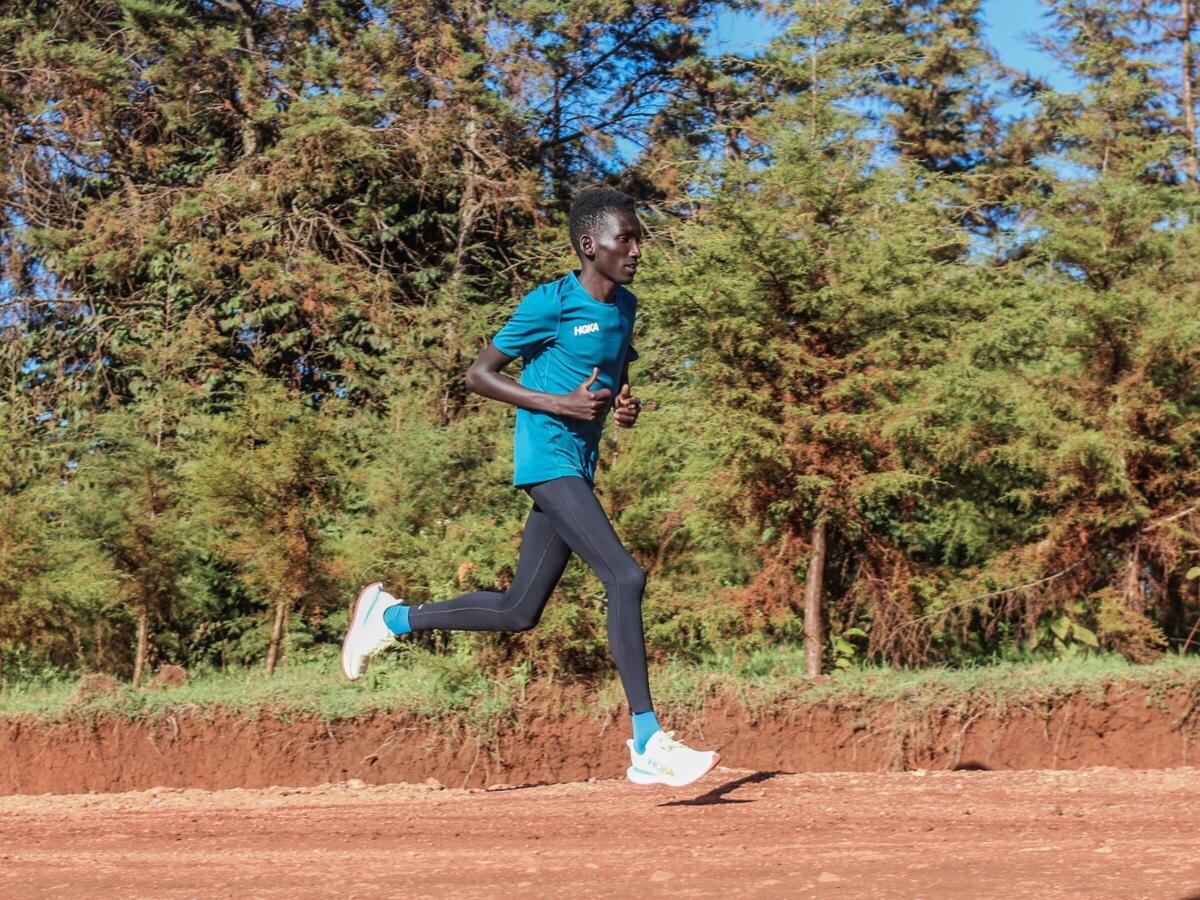
Last year's BOLDERBoulder champion, in fact, was NAZ Elite's Aliphine Tuliamuk, who finished in third place at the 2019 edition of the race and was runner-up in 2018.
“We would love to win on the men’s side, but it’s really, really hard," NAZ Elite Executive Director Ben Rosario said Wednesday.
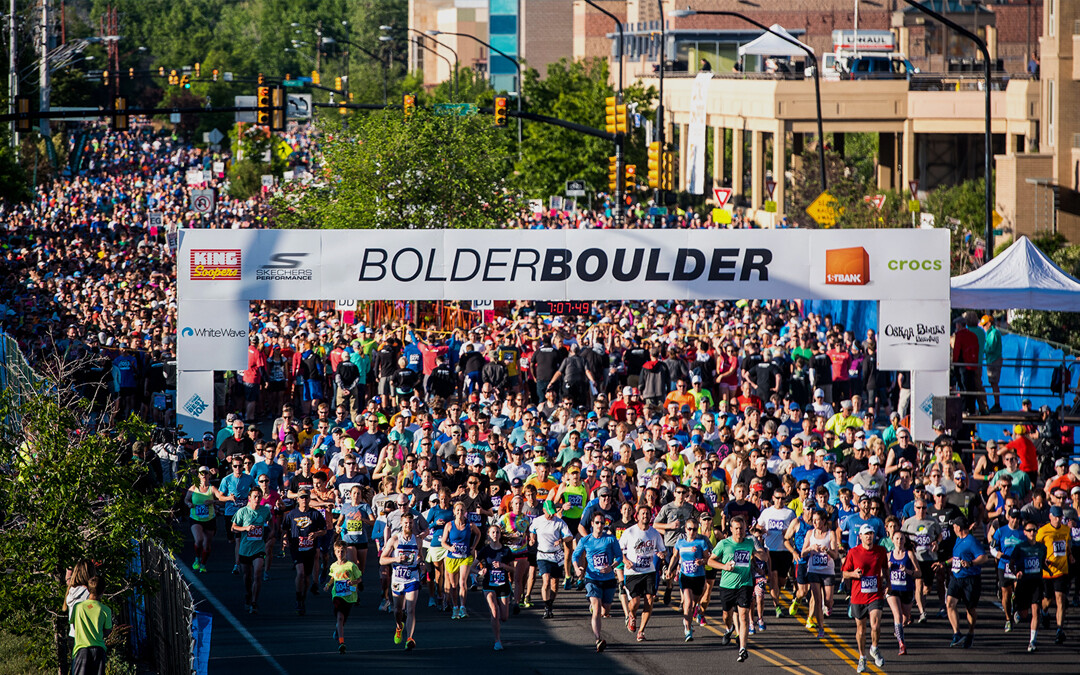
Only former member Scott Fauble has produced a top-10 finish in the men's race for NAZ Elite, taking sixth in 29:54 in 2016. This will be the eighth year that NAZ Elite has sent at least one athlete to the event since the team started racing in 2014.
The nature of the team-focused event typically leads to a loaded pack running up front, according to Rosario.
“When you have got three athletes from Kenya, three from Ethiopia, three from the U.S., et cetera, et cetera -- and they are all distance-running powerhouses -- it’s going to be hard to win the race because all these teams have somebody who could win.”
Rosario thinks that altitude also has something to do with how athletes perform at the race, which starts at 5,275 feet of elevation, peaks at 5,377 and ends at around 5,360 feet.
Fauble was born at altitude in Colorado, as was Tuliamuk, who is a Kenyan-born American. Both Kiptoo and Masai were born and raised in Kenya at an elevation higher than Flagstaff.
“It’s not a guarantee that they will run well, but I think they have a better chance to run well and race well at altitude than an athlete who was born and raised at sea level," Rosario said.
And both Kiptoo and Masai are in shape and coming off good performances.
Kiptoo won his last time out, repeating as the champion at the Pittsburgh Half Marathon on May 7. Meanwhile, Masai placed second in a 10,000-meter track event earlier this month and was fourth at the BAA 5K road race in mid-April with a time of 13:27.
“He’s look quite good in training over the last month," Rosario said of Masai, "and I would just say that he’s ready to go.”
Kiptoo normally draws energy from races that feature such strong talent up front, as the second-year pro likes competing with athletes who can produce the sort of times and results he hopes as his career unfolds.
“He’s certainly excited about the race. He’s shown so far in his young career that he enjoys these big road races, and when he is fresh and ready to go, he runs very, very well," Rosario said.
Before Monday's BOLDERBoulder, NAZ Elite will have two athletes in Krissy Gear and Katie Wasserman at Friday's USATF Distance Classic 1500m on the UCLA campus.
Rosario said there will be 17 athletes packed on the track for the "regular-season" race that will provided a chance for Wasserman to get some racing rust off her legs after a pause in racing due to illness and Gear to keep the momentum going and experience building.
Wasserman has not raced since mid-February at the USATF Indoor Championships, where she produced a 12th-place result in the 3000m.
(05/26/2023) ⚡AMPby Mike Hartman
BOLDER BOULDER
In 1979 we dreamt of attracting a few hundred of our friends to race though the streets of Boulder, Colorado to celebrate Memorial Day with our families. Fast forward almost 40 years and the Bolder BOULDER has grown to become one of the largest and most highly acclaimed 10K’s in the world. Almost 1.2 million runners, joggers, walkers and spectators...
more...Florence Jebet Kiplagat is set to run in Gold Coast after four year break
Double Berlin Marathon champion Florence Jebet Kiplagat returns to action in July after four years out of competition due to an injury and prolonged illness.
The former World Half Marathon record holder will compete at the Gold Coast Marathon on July 2 and she can't wait.
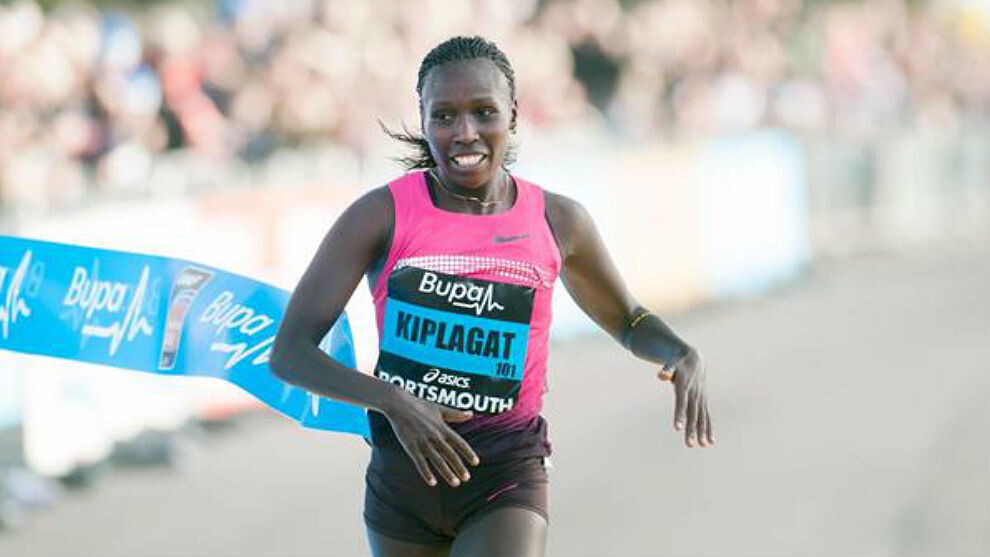
“It has been long since I completed and my return into action after four years in the cold is a sign that God loves me. I want my return to be better than before,” said Kiplagat.
Kiplagat was initially entered to compete at the Stockholm Marathon on June 2 but changed her plans after failing to secure vital travel documents on time.
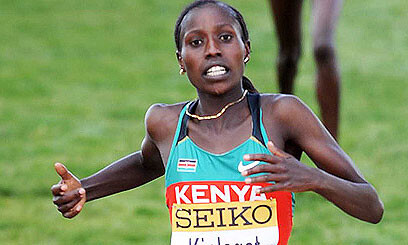
She will be hoping to lower the course record currently held by Lindsay Flanagan at 2:24.43. Kiplagat’s best time stands at 2:19.44 set in 2011 at the Berlin Marathon on her second victory.
“I entered the Stockholm Marathon late and failed to secure a visa. That made me change my mind to compete at the Gold Coast Marathon in Australia,” she said.
The Iten-based runner had three incidents that kept her from running. First, the nagging injury, followed by the coronavirus then sickness. She says after the injury in 2019, she was to return to action but the world was hit by the Coronavirus pandemic. "When the pandemic was over and planning to return, I fell sick," she explained.
The mother of two has sweet memories of her World Half Marathon record feat, which she lowered twice; posting a new high of 1:05:12 in 2014 and 1:05:09 in 2015 during the Barcelona Half Marathon.
Under the tutelage of Italian marathon coach Renato Canova, Kiplagat says she is on top of her game and optimistic her performance in Gold Coast will be good despite the long period on the sidelines.
“Right now, I am coaching myself because my coach is currently unwell. However, he has been sending me a training programme, which I follow religiously in a bid to make a successful return," she says.
She is well remembered to have ended Kenya’s 16-year-old gold drought at the 2009 World Cross-Country Championships in Amman, Jordan before winning the World Half Marathon title in Nanning, China in 2011. Kiplagat is a former footballer, who played at the national school games.
(05/26/2023) ⚡AMPby Emmanuel Sabuni
Gold Coast Airport Marathon
The Gold Coast Airport Marathon is held annually in one of the most popular holiday destinations in the world. It is Australia’s premier road race and was the first marathon in the country to hold an International Association of Athletics Federations (IAAF) Road Race Gold Label. The event is held on the first weekend of July and attracts more than...
more...Four reasons all runners should consider racing an 800m
Alright marathoners, listen up. The 800m is widely regarded as one of the toughest distances to race. It demands a combination of speed, endurance and mental toughness. Without both physical and mental strength, it can be an incredibly challenging experience. While many runners lean towards longer distances like marathons or half marathons, the 800m offers a valuable learning experience that can benefit athletes from various backgrounds, from sprinters to distance runners.
Here are four reasons why every runner should consider racing an 800m.
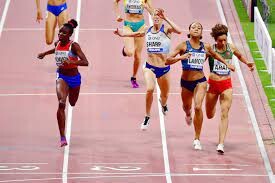
1.- Speed development
The 800m is a unique distance that combines speed and endurance. It requires a perfect balance of raw speed, aerobic capacity and mental fortitude. By incorporating 800m training into your regimen, you will quickly develop both your speed and endurance. The race will also challenge your body to perform at a high intensity for a relatively short duration, tapping into your VO2 max, which can benefit your speed over longer distances.
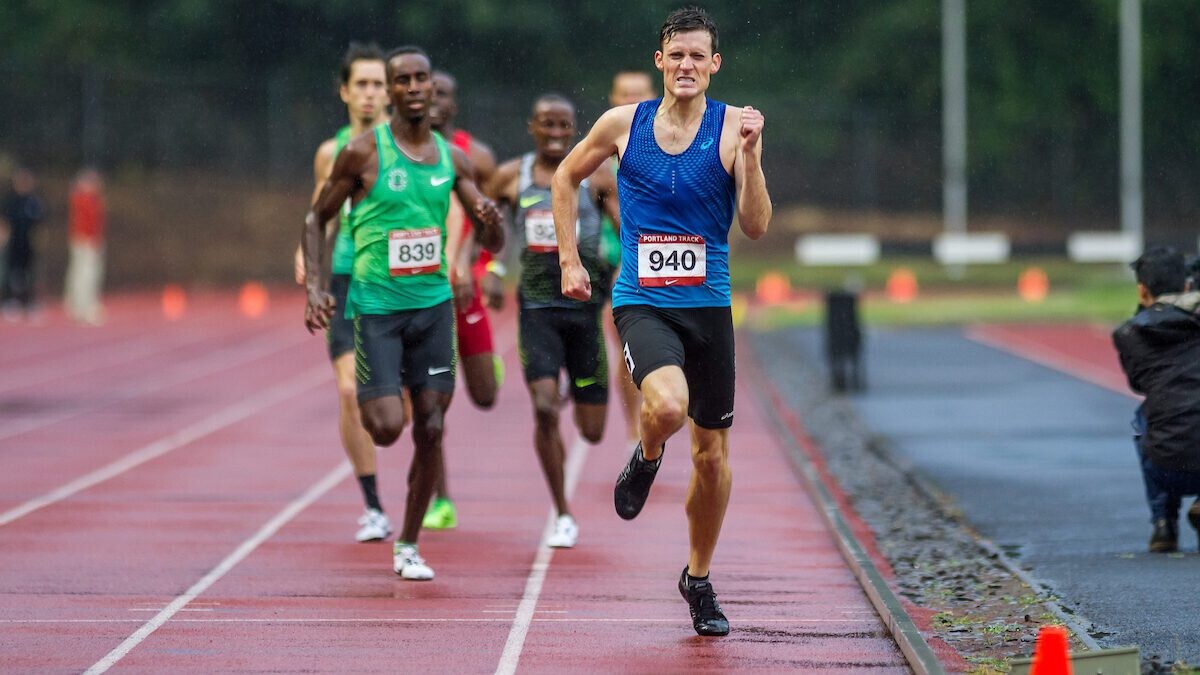
2.- Improve your mental toughness
The 800m is not only a test of your physical strength but also a great way to improve your mental resilience. The race requires strategic decision-making and split-second adjustments, from pacing strategies to positioning on the track. The distance demands mental toughness and adaptability, especially when your body is tired. By racing the 800m, runners can develop a resilient mindset, sharpen their race instincts, and ultimately learn to embrace extreme discomfort.
3.- It’s versatile
By adding the 800m to your race repertoire, you increase your versatility as an athlete. Engaging in different race distances is essential for becoming a well-rounded runner, and the demands of the 800m can complement your training for longer distances, such as the marathon or half-marathon. The anaerobic conditioning and muscle movements required in the 800m can improve your overall running economy and enhance your efficiency to sustain faster speeds for longer.
4.- Untapped potential
Racing an 800m can often uncover hidden potential and help you push your goals or boundaries further as a runner. Even if you don’t think you’re good at it, the mental side of the 800m can lead to surprising breakthroughs in performance. Who knows? You may discover you have untapped speed and determination that can positively impact your upcoming marathon training.
(05/25/2023) ⚡AMPby Running Magazine
Paul Poce, legendary Canadian running coach, dies at 98
On Monday, May 22, the Toronto and Canadian running community lost a historic coach with the passing of Paul Poce. In 1954, Poce founded the well-known Toronto Olympic Club, which still stands as the city’s oldest running club.
Born in Toronto in 1924, Poce began running after participating in boxing during his teens, believing that running was a better sport. His athletic career started under legendary coach Lloyd Percival, who coached him while training with the Toronto Red Devils.
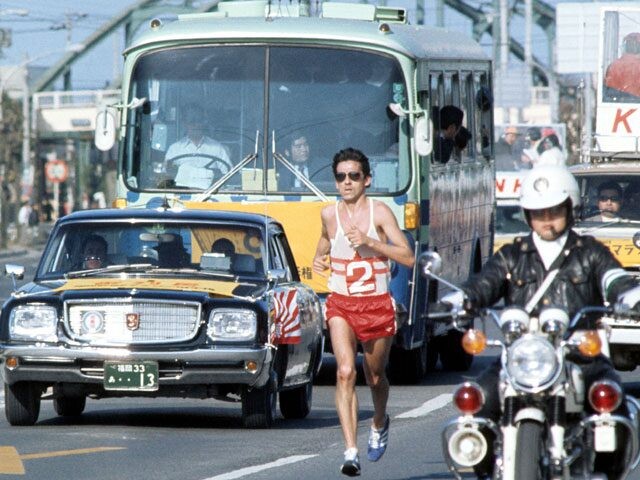
Poce went on to coach 13 Olympians, including former Canadian marathon record holder Jerome Drayton; and held the role of head athletics coach for Team Canada at the 1992 Olympic Games in Barcelona and distance coach for the 1972 Olympic Games in Munich and the 1976 Olympic Games in Montreal.
Under Poce, Drayton set a Canadian marathon record of 2:10:09 in 1975, which stood for over 40 years until Cam Levins broke the record in 2018. He also set a world record in the 1970s in the 10-mile race and was sixth in the marathon at the 1976 Olympics. Before Drayton’s accolades, Poce recruited him into distance running and the Toronto Olympic Club.
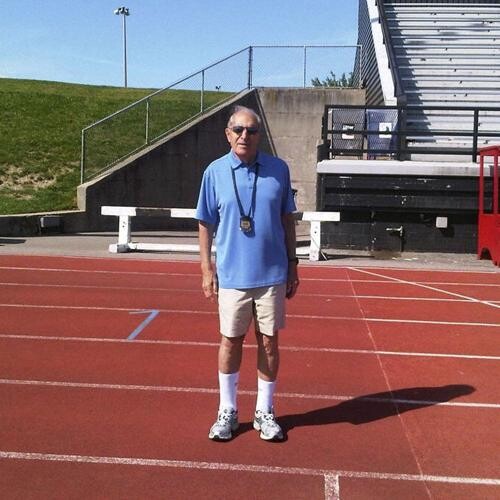
Poce coached with Toronto Olympic Club into his 90s and was inducted into the Canadian Road Runners Hall of Fame in 1991 and the Canadian Olympic Hall of Fame in 2010.
“Poce had a long and full life, living into his late nineties, and was coaching and mentoring right up until the end. I’m sure many will agree that he was universally respected and admired within our Canadian Running community and beyond. He was loved by so many, as he gave so much to everyone within his scope of influence.” – Harvey Mitro (sub-four-minute miler, former national team runner and author).
“I was deeply saddened to learn of the passing of Paul Poce, not only a former coach of mine, but also a true legend in the world of coaching. His remarkable 60-year tenure with the Toronto Olympic Club is a testament to his unwavering dedication and passion for the sport. I have no doubt that his impact will endure through the countless athletes whose lives he has influenced, both on and off the field of play. Paul’s commitment to his craft, along with his ability to inspire and mentor athletes, will forever be remembered. He was a truly exceptional coach and an extraordinary individual. His legacy will continue to shine brightly, serving as a guiding light for generations to come.” – Paul Osland (Athletics Ontario CEO, former national team member and Olympian)
“In a testament to how good a Paul was, when I joined the TOC junior program to coach in 1975, TOC runners owned all of the senior men’s Canadian records from the 800m to the marathon. Although I was never formally coached by Paul, he was omnipresent if not physically, but in spirit. When you were in his presence, he always was there with a quick pick-you-up quip after a bad race and just as quick with the praise when a good race was run or a PB set. Thank you Paul for all you did for running and Track & Field in Canada. RIP!” – Jerry Kooymans (Canadian Masters Athletics Hall of Fame Member and Former Toronto Olympic Club coach).
(05/25/2023) ⚡AMPby Marley Dickinson
Boston champions and U.S. record holders return for 2023 B.A.A. 10K
The Boston Athletic Association (B.A.A.) has announced professional fields for the 2023 B.A.A. 10K presented by Brigham and Women’s Hospital, to be run on Sunday, June 25 through Back Bay. Among the challengers set to compete are Boston Marathon champions Hellen Obiri (2023) and Benson Kipruto (2021), defending B.A.A. 10K winner Leonard Korir, as well as national record holder Emily Sisson. Complete field lists can be found below.
The B.A.A. 10K presented by Brigham and Women’s Hospital will be the second event of the 2023 B.A.A. Distance Medley, a year-long series featuring the B.A.A. 5K (April), B.A.A. 10K (June), and B.A.A. Half Marathon (November). Registration remains open with limited spots remaining.
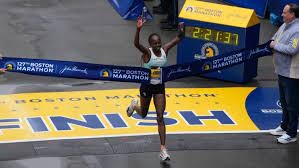
“Many fan favorites and global stars return to Boston for this year’s B.A.A. 10K, including Boston Marathoners, American record holders, Olympians and Paralympians,” said Mary Kate Shea, Director of Professional Athletes for the B.A.A. “The B.A.A. 10K course is flat, fast, and –most importantly—fun for our top contenders. We look forward to kicking off summer with a memorable competition on June 25.”
Obiri, a two-time Olympic silver medalist, won April’s Boston Marathon in her Boston debut, and will return to the roads hoping to extend her winning streak. Her 30:15 personal best at 10K is fourth fastest among the field, only trailing Sheila Chepkirui (Kenya, 29:46), Vicoty Chepngeno (Kenya, 30:14), and Joan Chelimo Melly (Romania, 30:14). Chelimo Melly won the B.A.A. 10K in 2017, while Chepkirui placed fourth at last month’s TCS London Marathon.
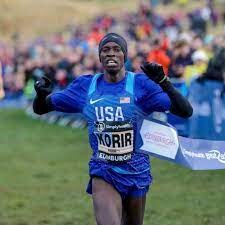
Korir, the reigning B.A.A. 10K champion, is fresh off a win at the USA 25K National Championships on May 13, and looks to become the fourth man to win back-to-back B.A.A. 10Ks. Sisson, the current American record holder in the marathon and half marathon also will return, joined by Olympic Marathon bronze medalist and former Boston resident Molly Seidel.
Among the international field squaring off are Boston Marathon winners Kipruto (2021), Edna Kiplagat (2017 and 2021), and Caroline Rotich (2015), all of Kenya. Gabriel Geay (Tanzania) will return after a runner-up finish at April’s Boston Marathon, and previously won the B.A.A. 10K in 2018.
Geoffrey Koech, winner of last year’s B.A.A. Half Marathon, will compete, as will Callum Hawkins of Great Britain, twice the fourth-place finisher at the World Championships marathon, plus decorated road racers Edward Cheserek (Kenya), a 17-time NCAA champion, and Zouhair Talbi (Morocco), most recently fifth at the Boston Marathon. From Team B.A.A. are Matt McDonald, Paul Hogan, Jonas Hampton, and Eric Hamer.
Mary Ngugi of Kenya, a two-time B.A.A. 10K winner and two-time Boston Marathon podium finisher, will aim for title number three, as fellow Kenyan Sharon Lokedi, the 2022 TCS New York City Marathon champion, looks for her first B.A.A. event victory. Team B.A.A.’s Annie Rodenfels, third place and top American at the 2023 B.A.A. 5K, will make her debut at the 10K distance leading a full contingent of Boston-based B.A.A. teammates including Bethany Hasz, Megan Hasz, and Jenna Magness.
Hermin Garic, the 2022 B.A.A. 10K winner, returns in the men’s wheelchair division, while Yen Hoang, third place at the 2021 Boston Marathon, leads the women’s wheelchair division. Brian Reynolds and Liz Willis will compete in the T61-64 (lower-limb impairment) division having already earned podium placings at the Boston Marathon in April. Reynolds, a Massachusetts native, set a world best 1:25:46 at the 2022 B.A.A. Half Marathon. Local Para athlete and last year’s T61-64 women’s winner, Adrianne Haslet, will also compete. Additional 2023 Boston Marathon Para division winners Andrew Thorson (T11-T13 vision impairment) and Atsbha Gebre (T45/T46 upper-limb impairment) are racing. The B.A.A. 10K presented by Brigham and Women’s Hospital has been certified by World Para Athletics as a record-eligible competition, paving the way for Para Athletes to set world and national records this year.
Media members interested in covering the B.A.A. 10K, presented by Brigham and Women’s Hospital, may apply for credentials here.
Registration for the 2023 B.A.A. 10K presented by Brigham and Women’s Hospital, is currently open through the B.A.A.’s online platform Athletes’ Village. All participants who enter will receive an adidas participant shirt, unique bib number, and finisher medal. Additional participant information can be found on baa.org. The race will start at 8:00 a.m. ET on Sunday, June 25 on Charles Street adjacent to Boston Common and Boston Public Garden.
Brigham and Women's Hospital, the B.A.A. 10K’s presenting sponsor and exclusive fundraising partner, will again field a team of fundraising runners. Since 2016, more than 2,100 runners and 180 teams have raised $1.2 million to fuel life-giving breakthroughs at Brigham and Women’s Hospital. Learn more and register at www.runbwh.org/10k.
(05/25/2023) ⚡AMPB.A.A. 10K
The 6.2-mile course is a scenic tour through Boston's Back Bay. Notable neighborhoods and attractions include the legendary Bull and Finch Pub, after which the television series "Cheers" was developed, the campus of Boston University, and trendy Kenmore Square. ...
more...Julie-Anne Staehli: Run Your Way
Julie-Anne Staehli’s passion for running has propelled the 29-year-old Canadian track star a long way since her introduction to cross-country racing at age 10.
In her international debut for Canada at the 2014 U23 NACAC championships, the pride of Lucknow, Ont., took bronze in the 3,000m steeplechase and claimed a silver and two bronze medals in the 3,000m steeplechase at the Canadian championships between 2013 and 2015. In 2020, she recorded the second-fastest indoor 3,000m by a Canadian woman, breaking the nine-minute mark for the first time.In 2021, she realized her dream of representing Canada after qualifying for the Tokyo Games with a time of 14:57.50.
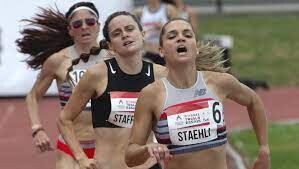
Staehli, who is now training stateside as a member of the New Balance Boston team in preparation for the 2023 World Athletics Championships in Budapest in August, says that while running continues to present exciting new professional opportunities, that is only one aspect of what the sport means to her.“Honestly, running has been everything to me,” says Staehli.
“There’s the competition side–the focus on running fast and the competition, and all of that is exciting and fun. But it goes beyond that. Running has shaped my world in every possible way.”

One of the greatest aspects of running, Staehli says, is its power to connect, such as connecting her to her small-town roots. “I would have to say, my favourite place to run is back in my hometown of Lucknow. Anytime I go back home for the holidays, I always love running on those same roads, and just reflecting on the time I spent there growing up.”
Running on those familiar roads, she says, also helps keep her connected to the core values that running imparts. “With everything else that has gone on in life, running has always been the one constant,” says Staehli. “As an athlete, you get to go to new places and work with new people, and often, the places you go and the teams you make are temporary. But what stays with you, I think, are the values you get from the sport, in terms of teamwork and the importance of living a healthy, active lifestyle.”
Perhaps most vital, says Staehli, is running’s power to connect people to one another. She says that running has the ability to bring together people of all backgrounds and abilities from all over the world, and notes how important it is to share that message of inclusivity with the broader running community. Crucial to spreading that message, she says, is dispelling lingering stereotypes about running that may be keeping potential newcomers from lacing up a pair of running shoes for the first time.
“If there was one myth about runners or running that I would like to help dispel, it would be that you have to be fast,” she says. “Speed is just a measurement, and I think a lot of people might be shying away from running because they think they’re not fast enough. But that’s just not true. The truth is, you don’t have to be fast to be a great runner.”
That point was brought home for Staehli recently as she watched participants cross the finish line of the Boston Marathon. “Watching the Boston Marathon this weekend was impressive. It was almost more impressive to see the runners who might be considered ‘average’ cross the finish line. For these runners, their effort is no less than the elites trying to hit their pace.
“Time is irrelevant. I hope we can continue to move away from putting such a focus on time, in terms of the wider running community, and instead look at the people behind the performances.”
She adds that running offers many opportunities for connection beyond running events themselves. One that Staehli is particularly proud to be a part of is the ReRUN Shoe Project, an initiative Staehli co-founded in June 2016 to collect and donate lightly used running shoes to local communities in five cities across Canada.
“It’s another example of building these connections, and it keeps me pretty busy outside of training.”
(05/25/2023) ⚡AMPby Paul Baswick
127th Boston Marathon Raised $40.2 Million For Non-Profit Organizations
The Boston Athletic Association (B.A.A.) has announced that $40.2 million was raised for more than 200 non-profit organizations through this year’s 127th Boston Marathon, held on Patriots’ Day, Monday, April 17.
The fundraising total marks the highest amount raised surrounding a single Boston Marathon, breaking the previous mark of $38.7 million set in 2019. Combined, the B.A.A. Official Charity Program and John Hancock Non-Profit Program have raised $500.2 million since the charity program’s inception at the 1989 Boston Marathon.
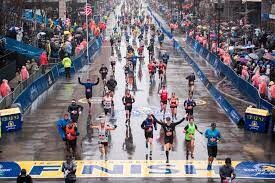
“Philanthropic and fundraising efforts surrounding this year’s Boston Marathon hit record highs in 2023, a testament to the hard work and dedication of all participants running for greater causes,” said Nicole Juri, B.A.A. Director of Development. “More than 200 charities and non-profit organizations will benefit thanks to the efforts of our fundraising participants.”
The $40.2 million raised this year includes donations raised through the B.A.A.’s Official Charity Program, the John Hancock Non-Profit Program, and from other qualified and invitational runners. 2,537 participants ran as fundraising athletes at the 127th Boston Marathon. Further details can be found on the Boston Marathon’s fundraising page through GivenGain.
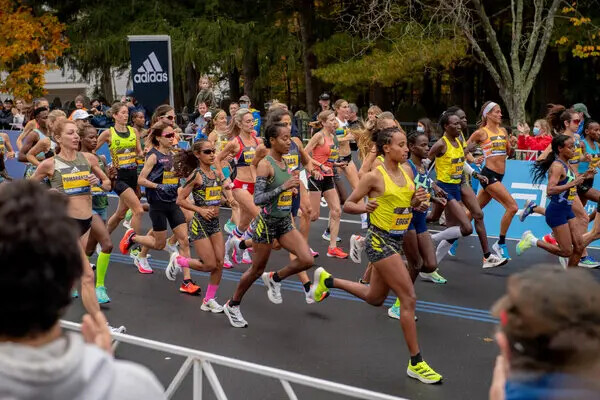
“We are proud to cap our 38-year principal sponsorship by setting a new fundraising milestone this year,” said Tom Crohan, VP & Counsel, Global Head of Community Investment at John Hancock and Manulife. “Thank you to every runner, volunteer, donor, and non-profit partner who contributed to these record-setting results. It’s an honor to have helped build a legacy of impact, and we are proud of our collective efforts to help make lives better for those served by our community partners.”
Leading up to Boston Marathon race day, the B.A.A. and John Hancock hosted a variety of fundraising giving initiatives to support athletes running for causes, including Boston Marathon Giving Day on March 15. Through Boston Marathon Giving Day, $1,041,766 in donations was raised over a 24-hour period.
The B.A.A. has annually provided non-profits associated with the B.A.A. Official Charity Program and John Hancock Non-Profit Program with invitational entries into the Boston Marathon. Each non-profit organization directly manages its own application process, athlete selection, and fundraising minimums, deadlines, and requirements.
The B.A.A. will notify non-profit organizations who have been selected to participate in the 128th Boston Marathon as part of the B.A.A. Official Charity Program this Summer. More information can be found on the B.A.A. Official Charity Program.
The next B.A.A. event is the B.A.A. 10K presented by Brigham and Women’s Hospital on Sunday, June 25. Registration is currently open.
(05/24/2023) ⚡AMPBoston Marathon
Among the nation’s oldest athletic clubs, the B.A.A. was established in 1887, and, in 1896, more than half of the U.S. Olympic Team at the first modern games was composed of B.A.A. club members. The Olympic Games provided the inspiration for the first Boston Marathon, which culminated the B.A.A. Games on April 19, 1897. John J. McDermott emerged from a...
more...Ottawa mayor Mark Sutcliffe to run Tartan Ottawa International Marathon
In his first year in office, Ottawa mayor Mark Sutcliffe looks to become the city’s first sitting mayor to run the Tartan Ottawa International Marathon Sunday.
Sutcliffe will be one of 3,000 participants in this year’s marathon, running through Ottawa and Gatineau, finishing on the banks of the historic Rideau Canal. The marathon will be Sutcliffe’s 39th since 2004. The 54-year-old is a two-time Boston Marathon finisher and one of the founders of the Canadian running publication iRun Magazine in 2008. He also sits on the board of Ottawa Race Weekend.
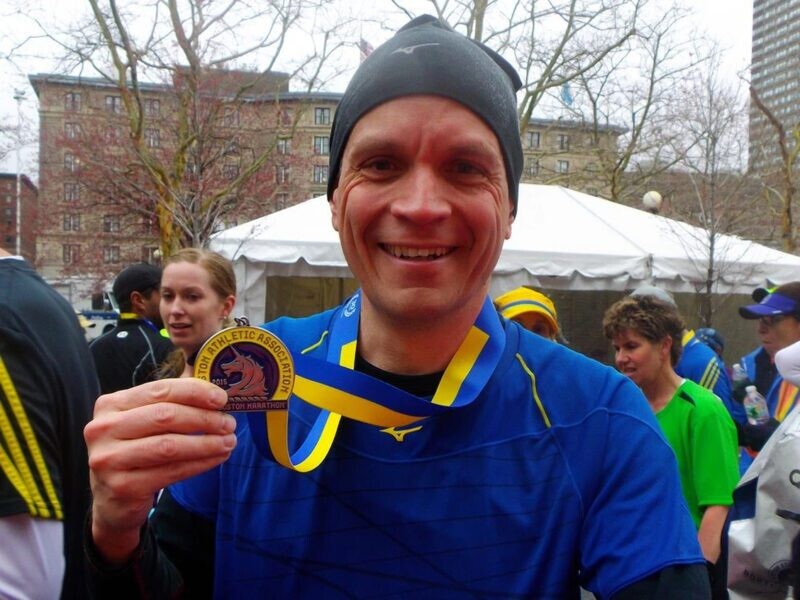
This year, Sutcliffe has chosen to leverage his marathon to raise funds for Salus, a non-profit organization providing supportive housing in the Ottawa region. In February, the organization was devastated by a flood caused by a fire sprinkler that burst, flooding the building and forcing the 40 tenants who lived there, many of whom deal with serious mental health issues, to find alternative housing.
Sutcliffe set a fundraising goal of $20,000, and has already raised upwards of $12,000.
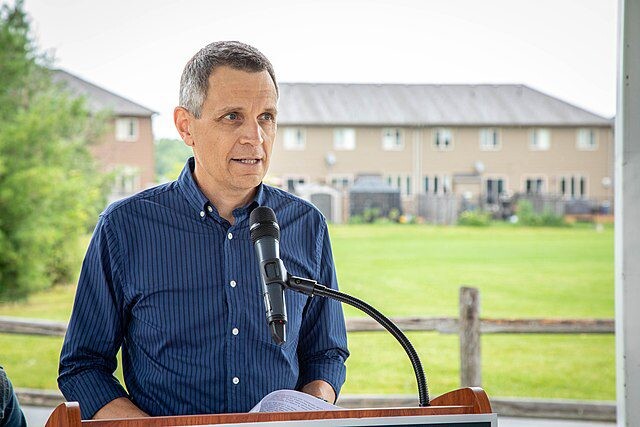
“I toured the Salus building earlier this year, and it was devastating to see the aftermath,” Sutcliffe told the Ottawa Citizen. “Affordable and supportive housing is a big priority for us this term of council, and Salus is a great organization that does amazing work.”
In the interview with the Ottawa Citizen, Sutcliffe said he’s run every single day as mayor of Ottawa, and generally logs 80 to 90 kilometers a week.
Sutcliffe is also the author of three books about running: Why I Run, Canada’s Magnificent Marathon, and Long Road to Boston.
Long Road to Boston is about his journey to the 2015 Boston Marathon after trying to qualify for many years. He has run Boston twice, with a 3:42:37 in 2015 and 3:49:37 in the 2018 rainstorm. Sutcliffe has also completed marathons in Chicago, London and New York.
Sutcliffe is one of 30,000 runners who will be a part of Tamarack Ottawa Race Weekend. Festivities will kick off on Saturday afternoon with the 2K, 5K, and Canadian Championship 10K, followed by the half-marathon and Tartan Ottawa International Marathon on Sunday morning.
(05/24/2023) ⚡AMP
by Marley Dickinson
Ottawa Marathon
As one of two IAAF Gold Label marathon events in Canada, the race attracts Canada’s largest marathon field (7,000 participants) as well as a world-class contingent of elite athletes every year. Featuring the beautiful scenery of Canada’s capital, the top-notch organization of an IAAF event, the atmosphere of hundreds of thousands of spectators, and a fast course perfect both...
more...Commonwealth Games 4x400m relay bronze medalist Wiseman is focusing on Budapest
Wiseman Were has reaffirmed his intention to lead the country to unparalleled success at the World Championships in Budapest, Hungary.
Were stated in an exclusive interview on Monday that he had stepped up training to place on the podium in the premier yearly global spectacle scheduled for August.
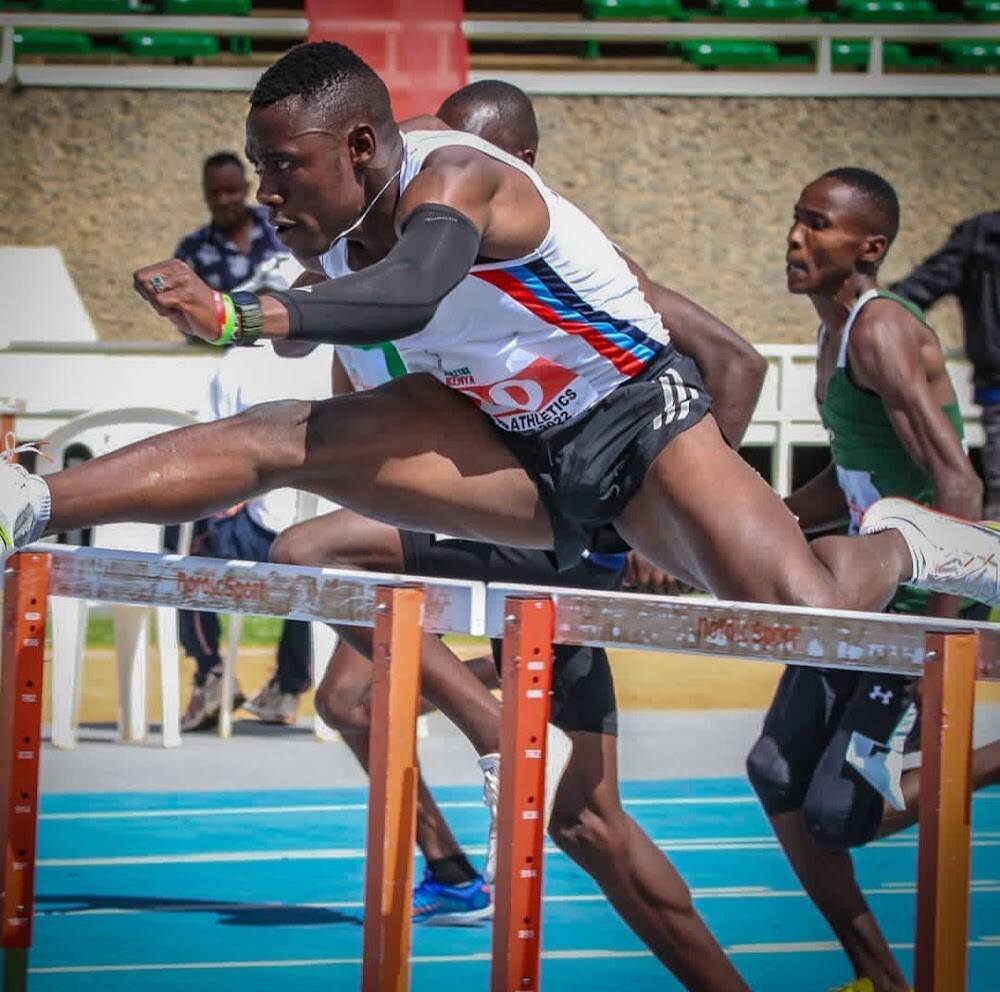
"August isn't that far away, so I want to keep putting forth my best effort in the meanwhile. I regret not being able to go to Oregon last year," Were said.
However, first things first and must work tirelessly to earn the qualification mark that will secure him a spot on the plane to Budapest.
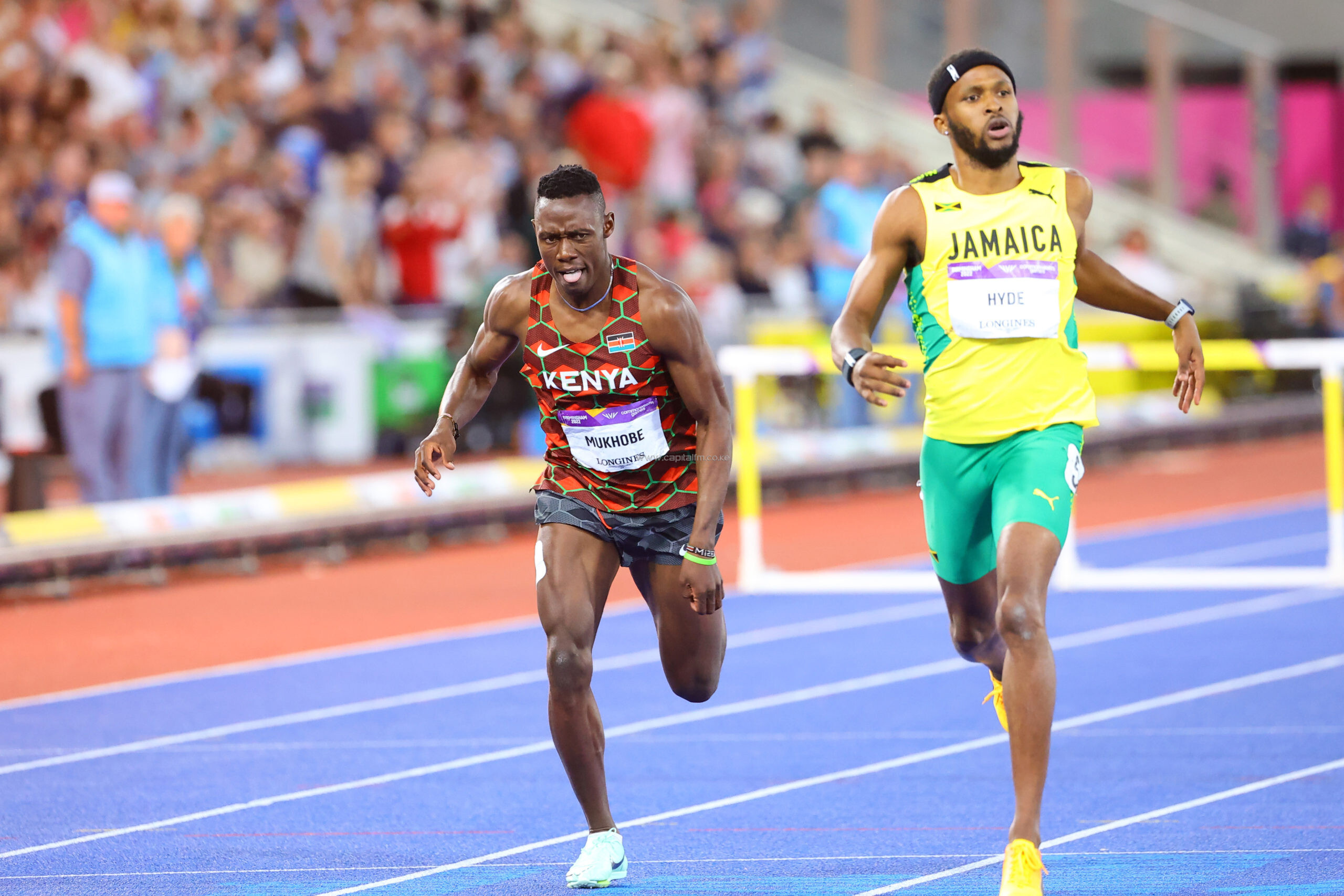
"The entry standard for the 400m hurdles at the 2023 World Athletics Championships is 48.70s, and I'm still 1.09 seconds off the mark."
Already boasting an impressive personal best of 49.09, Were's best time this season is the 49.23 seconds he posted in Pretoria on April 12 on his way to victory during the Athletics South Africa (ASA) Grand Prix.
He ran 49.29 seconds to wrap up in third place at the Botswana Grand Prix and finished third in Johannesburg with a time of 49.78.
His most recent performance was at the Kip Keino Classic on May 13 where he clocked a meet record of 49.59 seconds to bag the men’s 400m hurdles race in yet another mesmerising on-track show of dexterity.
"That was a sweet victory. Winning at home is such a good thing. I'm happy with the outcome I recorded at the Kip Keino Classic," Were said.
Were stated that he will continue to compete in more races in the coming days to meet the championship threshold.
"I'm still waiting to hear from my manager which races I'll be running in the coming days as I eye the qualification mark for Budapest," Were said.
The 25-year-old effervescent sprinter underlined the necessity of tight collaboration between all parties, stating that achieving the ideal heights in sprints necessitates a concerted effort from everyone associated with the sport.
"It's not just about how hard an athlete works. To lead us to such heights, we need every bit of assistance from our coaches, the physios, the local athletics governing body, government, and supporters," Were stated.
Were believes he has set the platform for a slew of legendary performances after kicking off his season with spectacular victories in South Africa and Kenya.
He believes the results gave him the confidence he needs to advance his career.
"I had a commendable performance; my speed and skill were superb. I intend to replicate my performance and bring about the desired results," Were said.
"The ASA Grand Prix and Kip Keino Classic races offered me some crucial lessons. Competing against some of the best sprinters in the world and winning while posting good times boosted my self-belief."
(05/24/2023) ⚡AMPby Tony Mballa
World Athletics Championships Budapest 23
From August 19-27, 2023, Budapest will host the world's third largest sporting event, the World Athletics Championships. It is the largest sporting event in the history of Hungary, attended by athletes from more than 200 countries, whose news will reach more than one billion people. Athletics is the foundation of all sports. It represents strength, speed, dexterity and endurance, the...
more...Ethiopia’s Yasin Haji returns to defend Okpekpe 10km Road Race
Ethiopia’s Yasin Haji is seeking to make history as the first man to successfully defend the Okpekpe international 10km Road Race title. The 27-year-old has arrived in Lagos for Saturday’s race in Okekpe, Edo State.
Haji became the third, bonafide Ethiopian man to win the Okpekpe race title when he ran 29:05, the third fastest winning time in race history, to win the title in 2022. Teshome Mekonen, who ran 28.35 in 2014 to set the race record, was the first Ethiopian to win the men’s race, while Leule Gebrselassie (29:28) became the second to win three years later. Haji, who raced to a 27:00 lifetime best in the event last year in Lille, has returned to form at the right time.
The Ethiopian clocked 27:20 at the end of last month at the adizero Road to Records, Adi-Dassler-Straße 1 in Herzogenaurach, Germany to send a message to his countryman, Mekonen that he is returning to Okpekpe to break the course record and make history. The stage will not be for Haji alone, as a certain Kenyan, Daniel Simiu Ebenyo, will not only be seeking to return Kenya to the podium as Okpekpe race champion, but also challenge Mekonen’s 28.35 course record. Ebenyo is one of just 14 athletes in the event’s all-time list to have broken 27 minutes when he ran 26:58 in Valencia, Spain in January 2022, and like Haji, the 27-year-old has also returned to form just in time for the Okpekpe race.
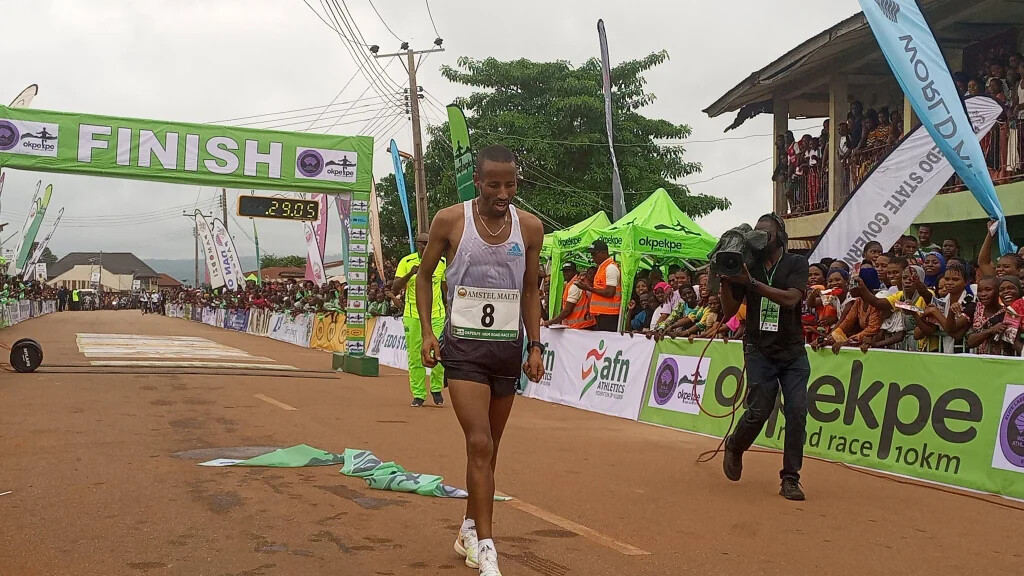
He ran 59:52 to win the Istanbul Half Marathon in Istanbul, Turkey at the end of last month and will be looking to become the fifth Kenyan winner of the Okpekpe 10km title. In the women’s race, a new course record also looks to be in the offing following the quality of the elite cast for the event. Kenya’s Edith Jepchumba will lead the cast of athletes aiming to rewrite the 32:41 course record set by Ethiopia’s Wude Ayalew in 2014. The Kenyan ran a 30:53 lifetime best over the distance last February, nearly two minutes inside the course record and she is the fastest athlete among the elite cast confirmed for the race. Ethiopia’s Bertukan Welde has also ran inside Ayalew’s course record when she clocked 32:00 to come in behind Jepchumba in Castellon, Spain last February. Abigail Jelimo will be seeking to get the gold this time after running 33.53 to place third at the eighth edition of the Okpekpe race last year. Meanwhile, former Nigeria’s Inspector General of Police and now Chairman of the Police Service Commission, Solomon Arase, yesterday, commended owner of the Okpekpe 10km race, Mike Itemuagbor, for sustaining the world-class road running event in Nigeria. He said: “Kudos to Mike (Itemuagbor), the great sports lover and administrator for putting the rural Okpekpe community on the map of the world. Okpekpe race has come to stay because of our brother, who has been able to sustain it over the years.” The ninth Okpekpe International 10km Road Race will hold on Saturday in Okpekpe, Etsako East Council of Edo State. Edo State government, Nigerian Breweries Plc, Dan Oil, Petralon Energy Limited and Development Bank, back the race.
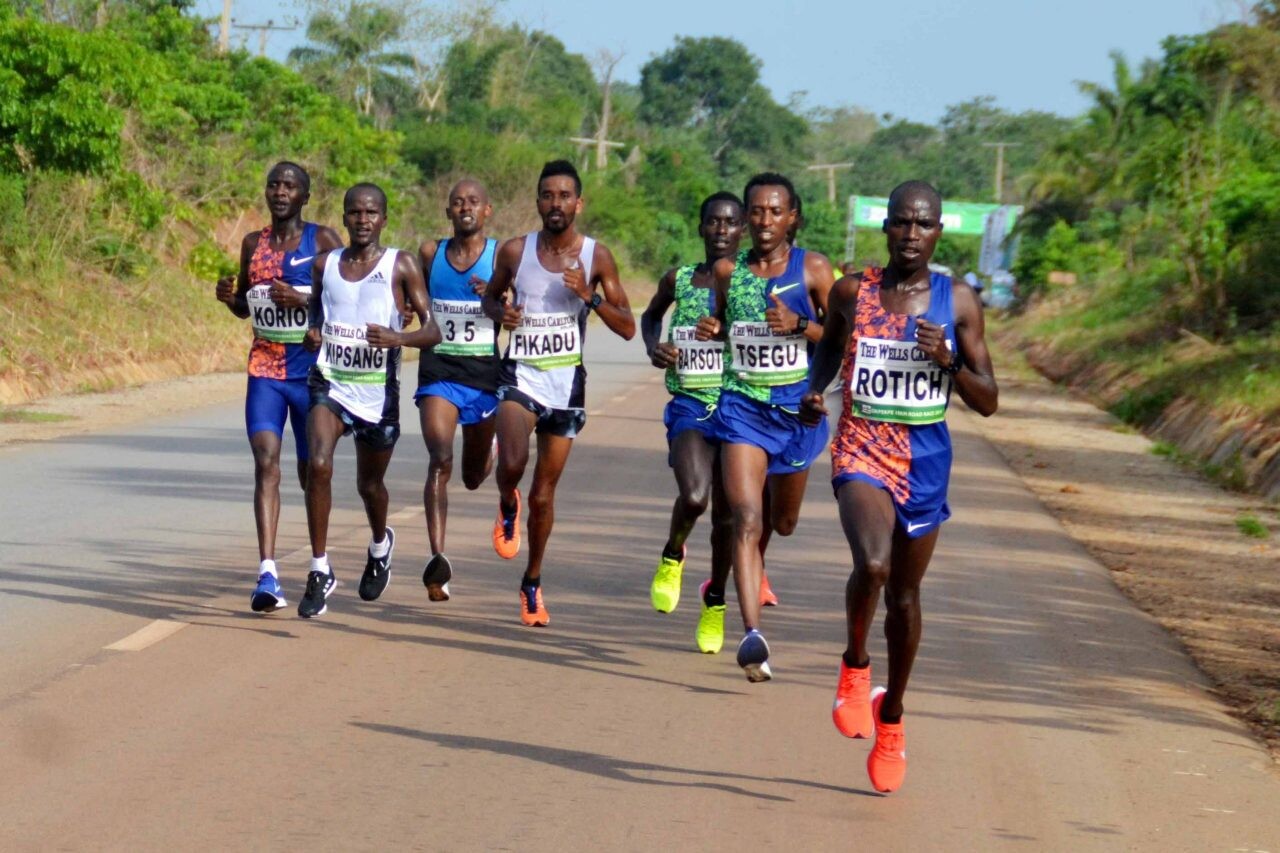
by Guardian Nigeria
Okpekpe Road Race 10km
The Okpekpe Road Race invites world-class runners from around the world in a tradition tointermix local recreational and up and coming runnerswith the best of the best. Invitation extended to all CAA Member Federations, all military and para-military have sent in entries. Okpekpe is more than just a collection of fertilefarmlands or a window into the past, it is a...
more...International Stars and Record-Holders to Clash at New York Mini 10K
TCS New York City Marathon champion Sharon Lokedi to challenge Boston Marathon champion Hellen Obiri; record-holders Emily Sisson and Keira D’Amato to lead Americans.
This year’s Mastercard® New York Mini 10K, the first women-only road race in the world, will feature Olympians, Paralympians, national-record holders and past event champions in what is expected to be the largest race in the event’s 51-year history with around 9,000 runners on Saturday, June 10 in Central Park.
The Mini 10K, which began in 1972 as the first women-only road race known then as the Crazylegs Mini Marathon, has gone on to garner more than 200,000 total finishers to date. Former NYRR President Fred Lebow named the race after the miniskirt, which back then was in vogue. A total of 72 women finished the first race, and three weeks later, Title IX was signed into law, guaranteeing girls and women the right to participate in school sports and creating new opportunities for generations of female athletes.
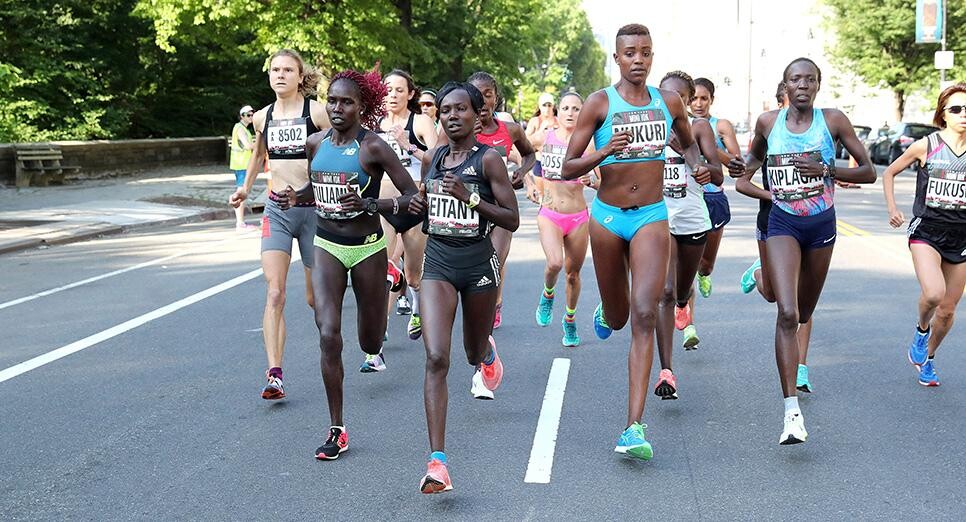
The open division will be headlined by TCS New York City Marathon champion Sharon Lokedi of Kenya, Boston Marathon champion Hellen Obiri of Kenya, and two-time Olympian and defending event champion Senbere Teferi of Ethiopia. Joining them will be a strong American contingent led by Olympian and U.S. marathon record-holder Emily Sisson, and U.S. 10-mile record holder Keira D’Amato.
Lokedi, who will return to Central Park for the first time since winning the TCS New York City Marathon in her marathon debut in November, was the runner-up at last year’s Mastercard® New York Mini 10K. Obiri, a two-time Olympic and seven-time world championships medalist, will be making her debut in the race after winning the United Airlines NYC Half in March and the Boston Marathon in April.

“The last time I was in New York, my entire life changed when I won the TCS New York City Marathon,” Lokedi said. “This iconic city will now always hold a special place in my heart and I’m eager to keep improving and show that I’m on top of the podium to stay.”
“There is no greater feeling than having my daughter watch me win races, and having her with me when I won the United Airlines NYC Half and Boston Marathon this year was truly special,” Obiri said. “Now, I’m looking forward to lining up for the women-only Mastercard Mini 10K for the first time, and having so many girls from the next generation watch me race, just like my daughter does.”
Teferi is a two-time Olympian who won the 2022 United Airlines NYC Half in an event-record time and returned to Central Park three months later to win her first Mastercard® New York Mini 10K. She is also a two-time World Championships silver medalist and the 5K world-record holder for a women-only race.
“Winning the 50th edition of the Mastercard New York Mini 10K last year was very emotional for me, and I was proud to lead thousands of women in celebration,” Teferi said. “I’m excited to return to Central Park again, which has been so kind to me in recent visits.”
Susannah Scaroni, a two-time Paralympic medalist, is the most dominant woman in wheelchair racing now as the defending champion of the TCS New York City Marathon, Boston Marathon, and Chicago Marathon. She has won the wheelchair division of the Mastercard® New York Mini 10K every year since it first began in 2018, and has previously set the world-best 10K mark at the race. This year, in addition to racing the likes of U.S. Paralympians Jenna Fesemyer and Hannah Dederick in the wheelchair division, she will serve as an ambassador for the NYRR Run for the Future program at the event.
NYRR Run for the Future is a free seven-week program is for high school girls in New York City with little to no running experience. It introduces participants to running and wellness through practices and panels focused on mental health, nutrition, and body image – some of which Scaroni has helped lead. At the end of the seven weeks, participants will take part in their first-ever 5K at the Mini 10K with Scaroni cheering them on at the finish line. Mastercard® will make a donation of $10,000 to NYRR Run for the Future – $5,000 on behalf of the open division champion and $5,000 on behalf of the wheelchair division champion.
“I’ve been fortunate to compete at this event since the addition of the professional wheelchair division to the Mini 10K in 2018, and I’ve absolutely loved everything about competing at this race,” Scaroni said. “This year, I’m thrilled to be giving back to NYRR and the next generation of women at the event by serving as an NYRR Run for the Future Ambassador cheering on the Run for the Future participants as they run their first-ever 5K will be incredible.”
The Mastercard® New York Mini 10K will offer $45,000 in total prize money, including $10,000 to the winner of the open division and $2,500 to the winner of the wheelchair division.
The professional athlete races will be streamed live on USATF.TV beginning at 7:40 a.m. ET. Mastercard® will serve as title sponsor of the event for the third time, and as part of its on-going partnership with NYRR will also serve as the presenting sponsor of professional women’s athlete field.
(05/23/2023) ⚡AMPby Running USA
New York Mini 10K
Join us for the NYRR New York Mini 10K, a race just for women. This race was made for you! It’s the world’s original women-only road race, founded in 1972 and named for the miniskirt, and it empowers women of all ages and fitness levels to be active and to look and feel great on the run. Every woman who...
more...World Athletics changes qualification system in middle-distance events
On Monday, the World Athletics Council announced changes to qualifying criteria for middle-distance events at major championships, starting at this year’s World Athletics Championships in Budapest in August and carrying into the 2024 Paris Olympic Games. There will no longer be fastest-qualifier spots in the heats of the 1,500m, 3,000m steeplechase and 5,000m events. Qualification for the next round will be by place only (i.e., big Q’s only).
World Athletics believes this will bring fairness, after widespread complaints by athletes claiming that runners in the later heats have an unfair advantage, because they know what times they must run to qualify for the next round; this also leads to less competitive races, as a result.

“There has been widespread feedback on the significant disadvantage to athletes in the first heat or semi-final and advantage to athletes in subsequent heats or semi-finals, when receiving qualification based on time due to knowing what is required to qualify,” World Athletics said in a press release regarding the changes.
In the new system, each heat of the men’s 1,500m will allocate six qualifying spots to the next round, while the 3,000m steeplechase heats will hold five spots and the 5,000m heats eight spots. There will still be fastest-time qualifiers in sprint events (100m-400m) and the 800m.
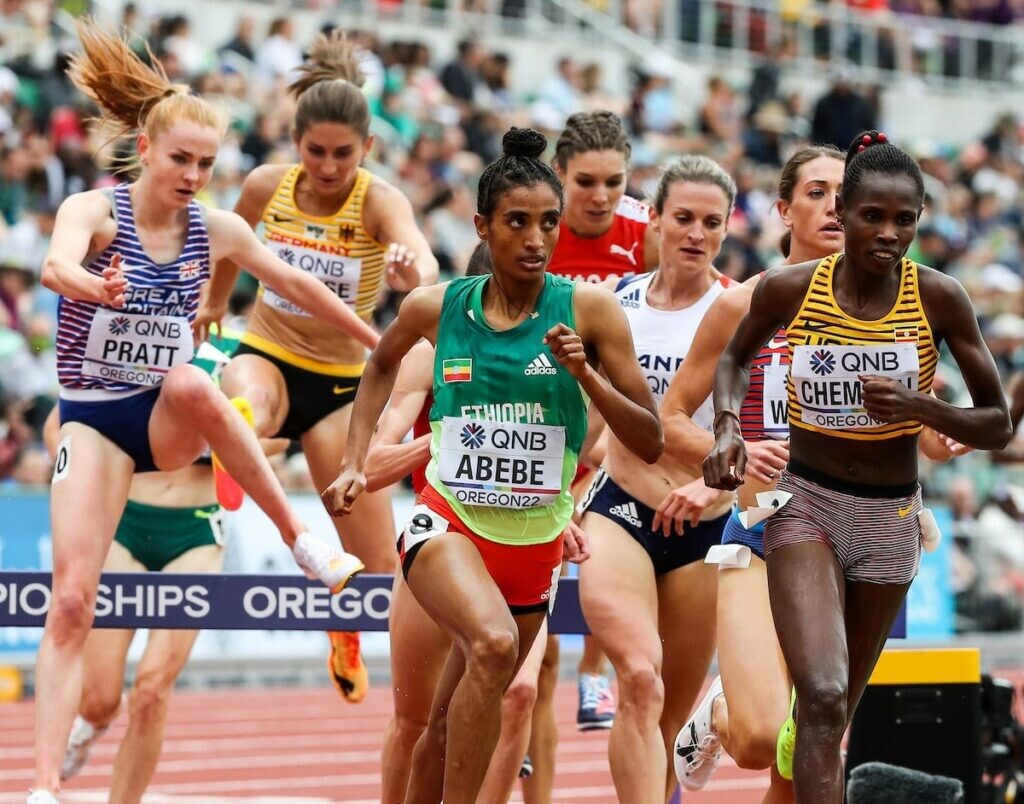
The 2024 Paris Olympics will also introduce a repechage round between the first round and semifinals for events from the 200m to the 1,500m. Athletes who don’t automatically qualify from the first round of heats will have another opportunity in a repechage heat to secure a spot in the semifinals, rather than face elimination. (The 2023 World Athletics Championships in Budapest will not include the repechage.)
(05/23/2023) ⚡AMP
by Running Magazine
Sydney McLaughlin-Levrone to return to the track at Paris Diamond League
Sydney McLaughlin-Levrone, the current world-record holder in the women’s 400m hurdles, will return to the track at the Paris Diamond League meeting on June 9. On Monday, Paris Diamond League event organizers announced that McLaughlin-Levrone will race in the women’s 400m, an event she has not run in two years.
At 23, the American athlete achieved two remarkable feats at the last two major championships. At the 2020 Tokyo Olympics, McLaughlin-Levrone won gold in both the 400m hurdles and 4x400m relay, breaking her hurdles world record in 51.64 seconds. A year later, at the 2022 World Championships in Eugene, Ore., she smashed her record again in 50.68 seconds, becoming the first woman to go under the 51-second barrier.
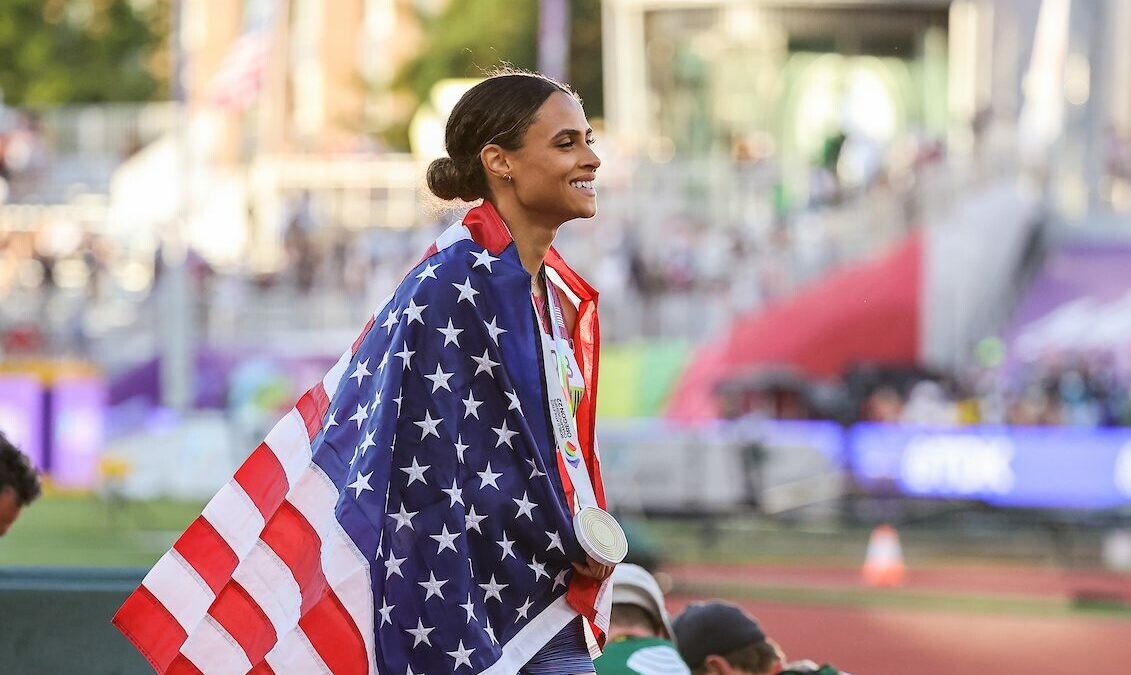
For two years, U.S. track fans have speculated if generational talent McLaughlin-Levrone could challenge the American 400m record of 48.70 seconds held by Sanya Richards-Ross. McLaughlin-Levrone’s last 400m came at the 2021 Bryan Clay Invitational, where she won the race in 51.16 seconds. She has a one-lap personal best of 50.07 seconds from 2018.
McLaughlin-Levrone has only raced once this season, an indoor 60m race at the 2023 Boston New Balance Grand Prix in February. She was initially scheduled to return at the USATF Los Angeles Invitational meet on May 27, but her coach Bobby Kersee withdrew her last week, citing hamstring soreness.
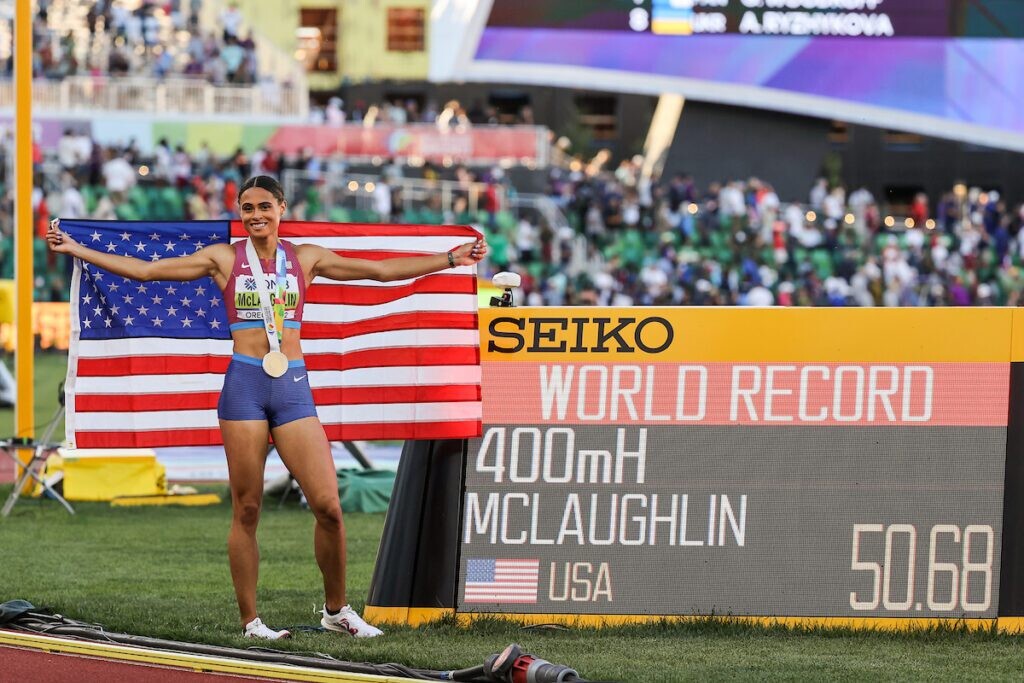
At the June 9 Paris Diamond League meeting, McLaughlin-Levrone will share the track with Marileidy Paulino of the Dominican Republic, the silver medallist in the 400m from the 2020 Tokyo Olympics. This will be the first time McLaughlin-Levrone has competed at a European Diamond League event since 2019.
(05/23/2023) ⚡AMPBoston Marathon icon Rick Hoyt dies at 61
On Monday, the Hoyt Family announced the death of Boston Marathon icon Rick Hoyt at age 61. Hoyt was a longtime staple of the Boston Marathon, who was pushed to the Boston Marathon finish line in his wheelchair by his father, Dick, for 32 years between 1980 and 2014.
“It is with profound sadness that the Hoyt Family announces the passing of our beloved brother and uncle, Rick, this morning. Rick was 61 years old. Rick passed away due to complications with his respiratory system,” the family said in a statement. “As so many knew, Rick along with our father, Dick, were icons in the road race and triathlon worlds for over 40 years and inspired millions of people with disabilities to believe in themselves, set goals and accomplish extraordinary things.”
Hoyt had cerebral palsy, which left him a quadriplegic. In 1977, he told his father, Dick, that he wanted to take part in a charity run for a lacrosse player who was paralyzed in an accident. Dick pushed his son for the race, and after, he told his father, “When I’m running, I don’t feel handicapped.”
The duo’s participation in marathons, triathlons, and endurance events showcased that physical disabilities should never limit one’s aspirations. Hoyt’s presence on the Boston Marathon course symbolized courage and the belief that anything is possible.
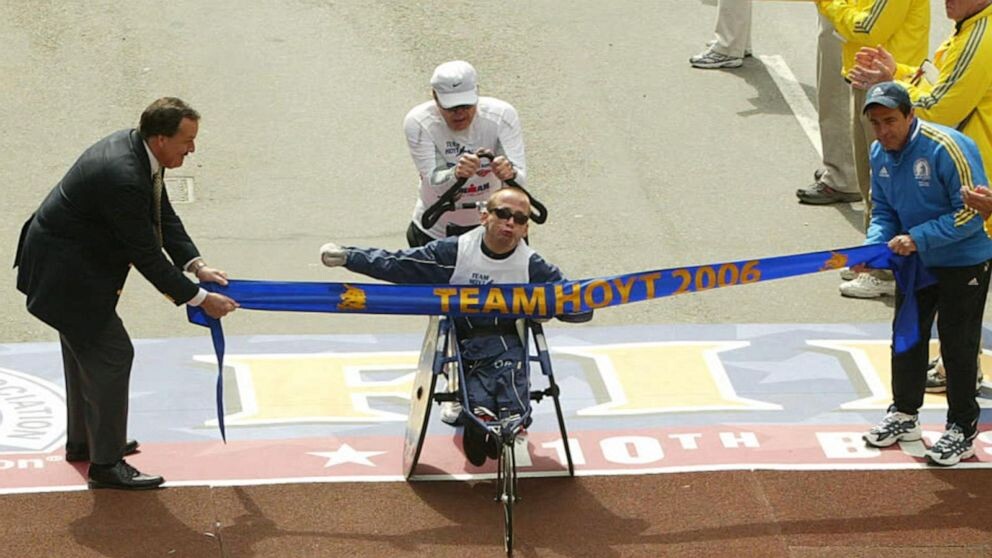
Dick died in March 2021 at age 80. The same year his son retired from marathons.
The Boston Athletic Association (B.A.A.) released a statement in memory of Hoyt:
Rick Hoyt will always be remembered as a Boston Marathon icon and for personifying the “Yes You Can” mentality that defined Team Hoyt. We are fortunate to have been able to call Rick a friend, mentor, pioneer, and Boston Marathon finisher. His legacy will live on through the Rick & Dick Hoyt Award, which is presented each April around the Boston Marathon to someone who exhibits the spirit of Team Hoyt through advocacy and inclusion.
Our thoughts go out to the Hoyt family, Rick’s many friends, and all who were touched by his positivity.
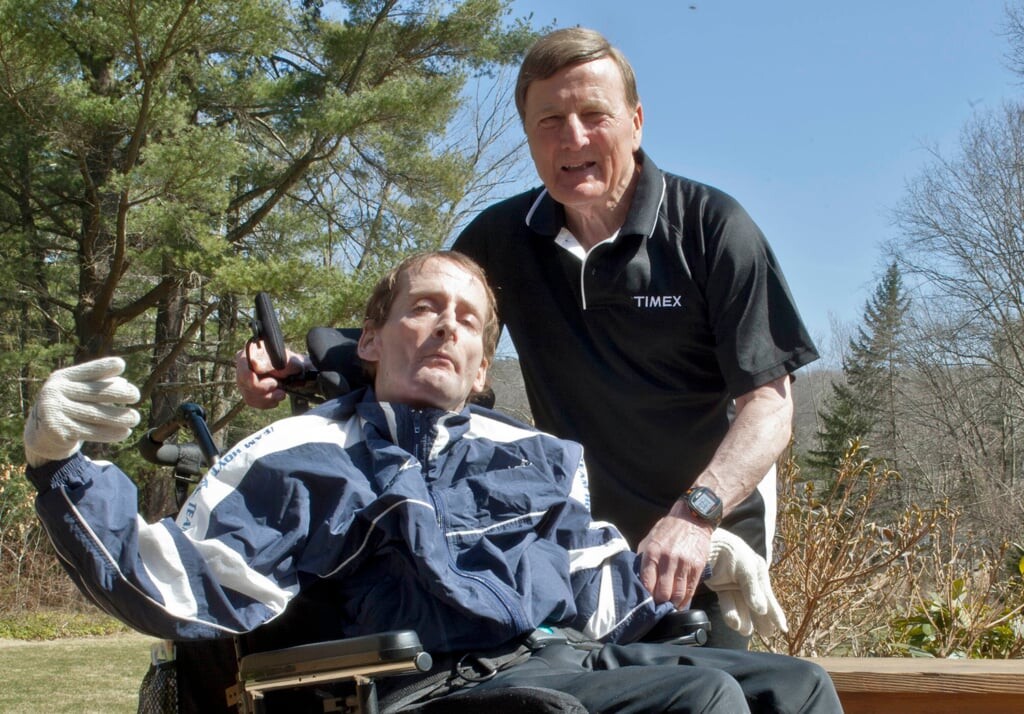
The B.A.A. has continued to honour Hoyt’s legacy at the Boston Marathon, establishing the Rick & Dick Hoyt Award in 2021. The award annually recognizes individuals who promote inclusivity and advocate for others in the community.
(05/23/2023) ⚡AMPby Marley Dickinson
Boston Marathon
Among the nation’s oldest athletic clubs, the B.A.A. was established in 1887, and, in 1896, more than half of the U.S. Olympic Team at the first modern games was composed of B.A.A. club members. The Olympic Games provided the inspiration for the first Boston Marathon, which culminated the B.A.A. Games on April 19, 1897. John J. McDermott emerged from a...
more...These adjustments can help you maximize your workouts when the temperature rises.
Scorching weather awaits on the summer calendar. If you’re a runner, so do many training miles.
Workouts when the temperature climbs can put additional – and even dangerous – stress on your body. Heat illnesses that can develop during exercise in the sizzling outdoors include heat cramps, heat exhaustion and heat stroke.
Hot and humid weather warrants caution and recalibration for runners looking to maintain their fitness routine, says exercise physiologist Katie Lawton, MEd. Here are some tips to stay safe while keeping to your training schedule.
Best times to run when it’s hot

The coolest part of the day typically occurs around sunrise, so rising before dawn to run works as an ideal solution to beat the heat. (Not a morning person? Read what a psychologist and behavioral sleep medicine specialist recommends to shift your circadian rhythm.)
Evening runs also offer a bit of a respite from the heat, even if the temperatures don’t dip as low as in the a.m. hours.
Either time slot offers more ideal running conditions than midday, when daily temperatures crest and the sun punishes those moving below. “Some people can do it,” Lawton says, “but you won’t find me running at 1 p.m.”
What to wear running in the heat
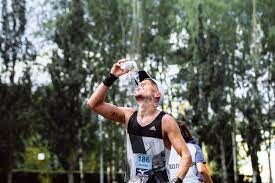
There’s an outfit for every occasion, including a 5-miler under the summer sun. Running shirts and shorts for a hot day should be:
Loose-fitting or vented to allow air to pass over and cool your skin.
Made of a moisture-wicking fabric (typically polyester-based) to aid the evaporation process. Avoid cotton garments, which quickly turn into heavy, wet apparel that trap heat against your body.
Light-colored, as dark hues absorb the sun’s heat.
Runners also may want to invest in a lightweight, moisture-wicking hat, visor or headband to absorb sweat and cool their head. Sunglasses to protect your eyes from the sun’s harmful UV rays are recommended, too.
Find shaded running routes when it’s hot
Pavement absorbs heat, making streets and sidewalks akin to a frying pan above a stovetop flame. (That helps explain the countless YouTube videos of people trying to cook an egg on sun-baked walkways.)
The lesson here is to shift your runs away from these inadvisable cooking surfaces to park trails, where miles of natural track await beneath a cool, leafy canopy.
Should you run as fast in the heat?
Running on a blistering hot day brings a definite physiological response. Your heart rate spikes as your body works to combat the effects of overheating. This survival mode instinct diverts energy away from muscles to focus on cooling.
Every sweaty step will take more effort as fatigue builds – and that will be reflected in your pace. For every 5-degree increase above 60 degrees, the typical runner can expect to slow 20 to 30 seconds per mile.
The impact can be even greater as the seasons change and runners acclimated to the cold suddenly face warmer temperatures. You should anticipate an adjustment period of one to two weeks to feel comfortable.
On the hottest days, Lawton suggests that you should ignore your pace-tracking GPS watch and run more by effort: “It’s a mindset adjustment,” she says. “Go by how you feel.”
How much to drink before and after hot weather runs
Runners don’t just drip sweat when the weather heats up. They gush it. The mass loss of fluid can lead to dehydration if you don’t take proper steps before and after your workout.
Make sure to drink 16-20 ounces of water or sports drink a few hours ahead of any training run or race, Lawton says. Top that off by downing another 8-12 ounces within 15 minutes of the activity.
Plan on drinking fluids during any run lasting longer than an hour. Lawton said a good rule of thumb is to try to consume 3-5 ounces of liquid every 30 minutes of exertion. Carry drinks on longer runs or arrange routes with access to water fountains.
Afterward, rehydrate with at least 16 ounces of fluid for every pound that melted off in sweat during the workout. Sports drinks can help restore electrolytes. Chocolate milk, juice or fruit smoothies also are excellent options. Water is always good, too.
Monitor the color of your urine to determine whether you’re properly hydrated. If it’s not pale yellow or clear, drink more fluids.
Warning signs to watch for when running in the heat
It’s important to listen to your body if you’re struggling during a run in the sun, says Lawton. More importantly, don’t ignore them. Stop your workout, get out of the heat and focus on cooling your body down if you experience symptoms such as:
Cramps or muscle spasms.
Dizziness or fainting.
A headache.
Extreme fatigue.
Skin that feels cold and clammy or hot and dry.
Be flexible with summer running plans
Don’t force a run when the weather or your body dictate a different approach, says Lawton. Consider cutting a long run in half or replacing a planned run with a cross-training activity, such as swimming or lifting weights.
If possible, use the weather forecast to plan your weekly run and schedule rest days or other activities on the hottest days.
“With the right planning and approach, runners can get their miles in throughout the summer,” says Lawton. “Be cautious, though, and don’t push it.”
(05/22/2023) ⚡AMPby Health Essentials
Bolder Boulder names Ric Rojas, daughter Nell as official 2023 race starters
Nell Rojas has participated in just about every aspect of the Bolder Boulder throughout her life while evolving into one of the top women’s distance runners in the nation.
Her father, Ric Rojas, will forever be etched in the Bolder Boulder’s rich lore as the first winner of Boulder’s annual 10-kilometer running extravaganza.
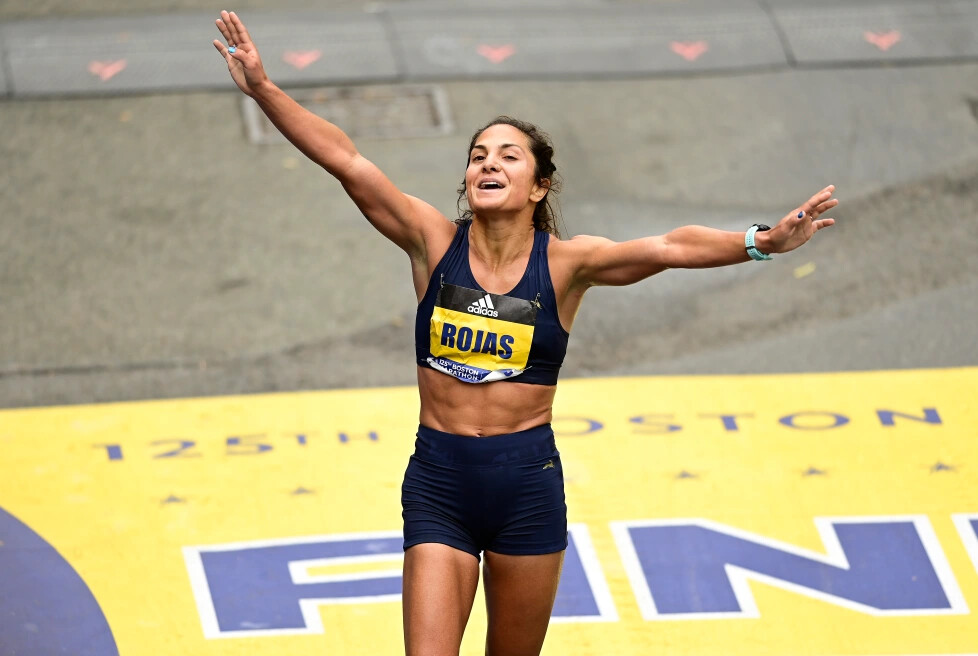
This year, it will be one of the most recognizable families of the Boulder running scene that will spur the masses into their paces.
Nell Rojas, fresh off becoming the top American woman finisher at the Boston Marathon for the second consecutive time, and her father will serve as the official starters when the 43rd Bolder Boulder sets off on Memorial Day.
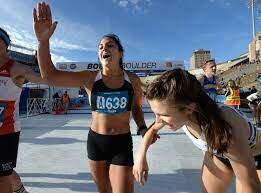
“It makes it just that more special that I get to do this with my dad,” Nell Rojas said. “I think it’s even more special for him more so because I think he’s very proud of me, but the Bolder Boulder also was a huge thing for him as an athlete, but also as a coach. He always pushed people in the Bolder Boulder since I was born. It’s a fun way to bring it around and have him have the opportunity to do this.”
Last month, Rojas completed the Boston Marathon with a personal-best mark of 2 hours, 25 minutes, 57 seconds, finishing 10th overall. Rojas also was the top American woman in the event last October.
A Boulder native and a graduate of Boulder High, Rojas ran the pro race at the Bolder Boulder for the first time last year, when the event returned from a two-year hiatus spurred by the COVID pandemic. The quick turnaround following the Boston Marathon made competing in this year’s race impossible, but Rojas was more than happy to jump at the chance to play another role as the official starter.
“I was pretty bummed not to run it,” Nell Rojas said. “I would love to come run it when I am in shape and when I can do well. I’d love to win the pro race some year. But any year I’m doing Boston, it’s just not feasible. I was bummed to say no. But when they asked me to start, that’s just so cool. And for my dad and my family, it’s such a family event and such a big part of our history, I’m super excited.”
Ric Rojas won the inaugural Bolder Boulder in 1979 and is the one-time world record holder in the 15K. He remains an elite running coach with his Boulder-based company, Ric Rojas Running. By tapping the father-daughter tandem as the official starters, the Bolder Boulder is bridging the generations between the race’s humble beginnings and a modern event that attracts elite runners from across the globe.
“Our first thought was, obviously she raced Boston and we watched her run closely,” Bolder Boulder race director Cliff Bosley said. “The first thought was to invite her for a spot on the pro team and represent the USA. But the Boston Marathon is an event that has kind of a long recovery. When she was talking to us we thought maybe not this year. So then we thought having Nell and her father as the official starters, that would really work.”
(05/22/2023) ⚡AMPby Pat Rooney
BOLDER BOULDER
In 1979 we dreamt of attracting a few hundred of our friends to race though the streets of Boulder, Colorado to celebrate Memorial Day with our families. Fast forward almost 40 years and the Bolder BOULDER has grown to become one of the largest and most highly acclaimed 10K’s in the world. Almost 1.2 million runners, joggers, walkers and spectators...
more...Standard Chartered Marathon extends partnership with Athletics Kenya
Standard Chartered Bank has entered a new five-year partnership deal with Athletics Kenya to deliver the Standard Chartered Nairobi Marathon on October 29.
The partnership, which ends in 2027, will see the athletics body assist the organisers to ensure efficient running and coordination of the event.
The event's Local Organizing Committee (LOC) chairman Peter Gitau said, “For nearly 20 years, the event has provided a stage for national and international athletes' stardom.
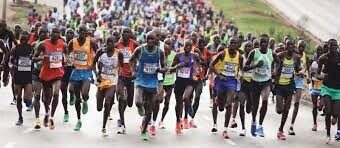
"This has only been achieved through the support of our partners, key among them, Athletics Kenya.
"Today, we are proud to extend our partnership with the athletics body and look forward to progressing our goal to deliver a collaborative, inclusive, sustainable, and premium marathon in the region."
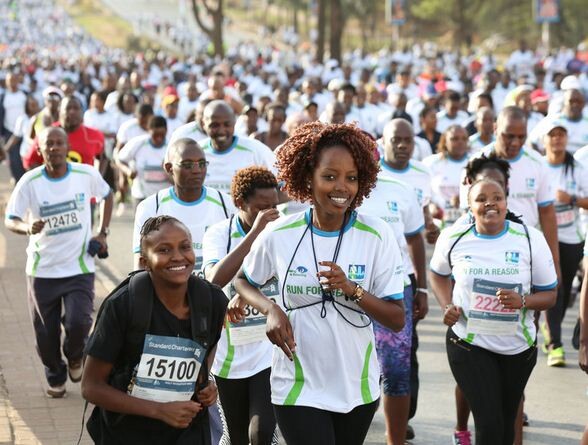
Gitau cited the likes of former world marathon record holder Dennis Kimetto, Irene Jerotich, Chemutai Rionotukei, Fridah Chepkite Lodepa, and Elisha Kiprop among others as some of the products of StanChart Marathon.
He said AK have linked athletes to the Standard Chartered Marathon since 2003 and helped launch their careers.
Besides, the association has helped to design the race specificities including timings, and running tracks, and catered for athletes' welfare checks.
Athletics Kenya (AK) president, Lt Gen (Rtd) Jackson Tuwei said he is proud to extend the partnership with Standard Chartered Marathon for the next five years.
He said over the past 20 years, the event has not only nurtured sporting talent but also helped create a benchmark for other marathons in the region.
"We are excited to continue working with the Stan Chart Marathon LOC to deliver a top-notch and unmatched event experience. We are also excited to see more athletic careers being launched and nurtured through the marathon.”
He further thanked United Nations Environment Programme and the Stockholm Environment Institute for their efforts and revealed that they will use the platform to conduct real-time air quality monitoring.
This year's event targets to register 25,000 runners and will start at the Uhuru Garden. The satellite marathons will start a week earlier prior to the main event (October 22).
The event will feature seven race categories thus; 42km (men and women), 21km (men and women), 21km wheelchair (men and women), 10km (men and women), 10km CEO challenge, 5km Family Fun Run race and the Corporate Relay Challenge.
The registration portal is now open on www.nairobimarathon.com at a fee of Sh2000 and individual and corporate participants are encouraged to register early.
Last year, Elias Chelimo and Sheila Chepkech won the 42km individual men and women categories.
(05/22/2023) ⚡AMPby William Njuguna
NAIROBI MARATHON
Nairobi Marathon is an annual road running competition over the marathon distance held in October in Nairobi, Kenya. First held in 2003, the competition expanded and now includes a half marathon race along with the main race. It was part of "The Greatest Race on Earth", fully sponsored by Standard Chartered Bank....
more...Toroitich, Poltavska take men's, women's titles in Cellcom Green Bay Marathon
The University of Minnesota runner and former Valders cross-country and track star celebrated turning 19 in style Sunday, winning the Cellcom Green Bay half marathon in 1 hour, 12 minutes, 30 seconds and taking home $750 in winnings as a present.
It was the second time Griepentrog has run Cellcom’s half marathon after finishing third in 2022.
He was faster by more than a minute this year, averaging 5:32 per mile during the 13.1-mile race.
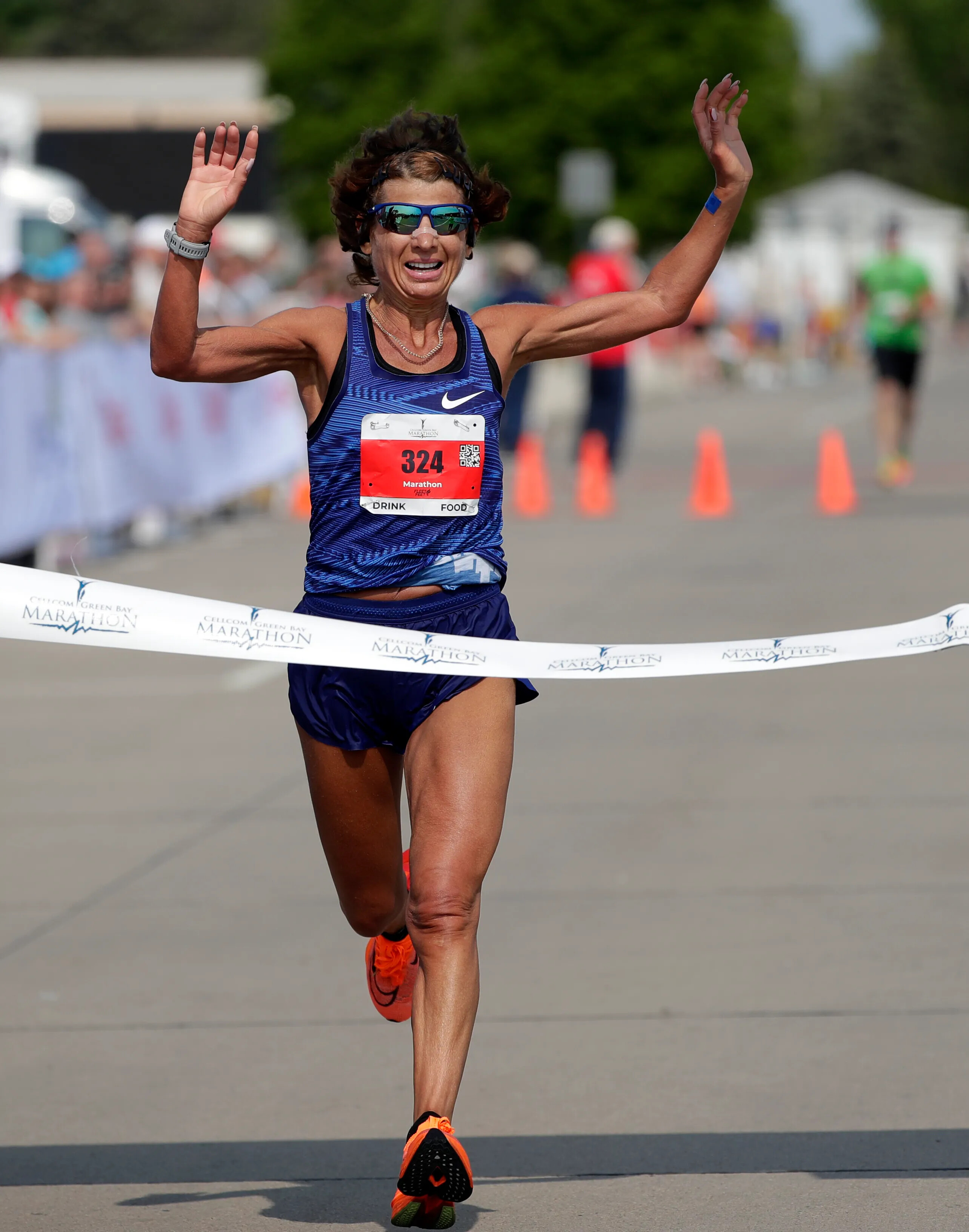
His goal again was to finish among the top three, but he was feeling so good toward the end of the race he figured he’d push himself a little harder and go for the win.
Not only did he win, but he did so in commanding fashion.
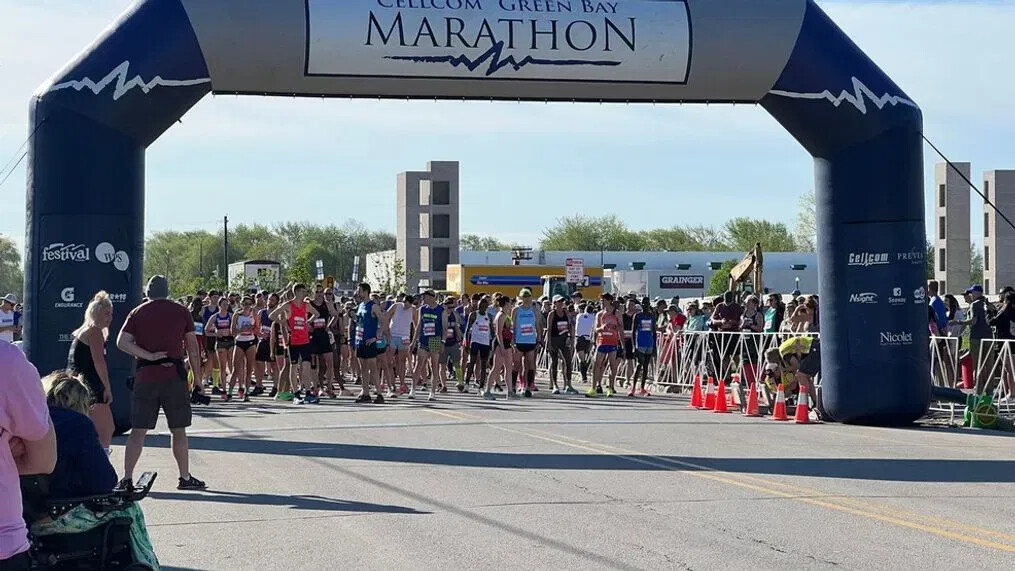
Runner-up Riley Martin of Pickett finished in 1:15.27, while Kyle Peotter of Appleton was third in 1:17:08.
Griepentrog was the best of 1,195 runners competing in the half marathon.
“It went really well,” Griepentrog said. “It was beautiful weather. Can’t complain about that. Just finished up my track season, so I said I might as well use my fitness for a little fun half marathon.
“Came out this morning and had a blast.”
Griepentrog signed a letter of intent in January 2022 to compete for the Gophers in both cross-country and outdoor track.
He was one of the best high school runners in the state during a decorated career at Valders, leading his team to the WIAA Division 2 state team titles in 2018 and 2019 and a D3 championship in 2021, when he also captured the individual state championship.
Griepentrog was just as dominant in track. He won both the 3,200-meter run and 1,600 state championships as a senior, one year after winning a title in the 3,200 and finishing runner-up in the 1,600.
His older brother, Nate, runs for UW-Milwaukee.
Griepentrog and his fellow freshmen all redshirted at Minnesota this year. They competed in some area meets but did not travel with the team for road trips.
“Kind of just a year to get some big training under our belt,” Griepentrog said. “Maybe not feel the greatest, but just go out there and gain the experience and race with the big dogs a little bit and just kind of soak in your first year.
“This year was not so much like competing, competing, competing. It was get better, get used to it and mold into the university standards.”
Griepentrog already can see there is a big difference between competing in the Big Ten and what he faced in high school, but he will be ready to help the Gophers this year.
“We did race at a couple of the big meets for cross-country,” said Griepentrog, whose track season ended last week while the cross-country season starts at the end of August. “It’s definitely a different animal. Something I have to get used to. In high school, you are used to running in the front pack with a couple guys. It’s strung out.
“In college, you are just in a massive 80 people. You can’t even see where you are on the course. It takes a lot to get used to.”
(05/22/2023) ⚡AMPby Scott Venci
Cellcom Green Bay Marathon
The Cellcom Green Bay Marathon and Half Marathon courses are considered to be fast and flat, by race industry comparisons. The courses finish with a “tailgate” themed party in the Lambeau Field parking lot! The marathon starts in front of Lambeau Field and pass along tree-lined streets in west Green Bay and the village of Ashwaubenon. Then the marathoners head...
more...Kenyan’s Sabastian Sawe and Ethiopia’s Tsehay Gemechu were the winners in Bengaluru
Bengaluru, 21 May 2023: In what will go down as a classic in Indian road running history, Sabastian Sawe (Kenya) took the men’s title and Ethiopia’s Tsehay Gemechu the women’s crown in the Elite category of the landmark 15th edition of the Tata Consultancy Services World 10K Bengaluru on Sunday.
Among the Indian elite, Murli Gavit, making only his second appearance at the iconic race, dashed to a sensational finish to bag the Indian men’s title while debutant Tamshi Singh won the women’s category.
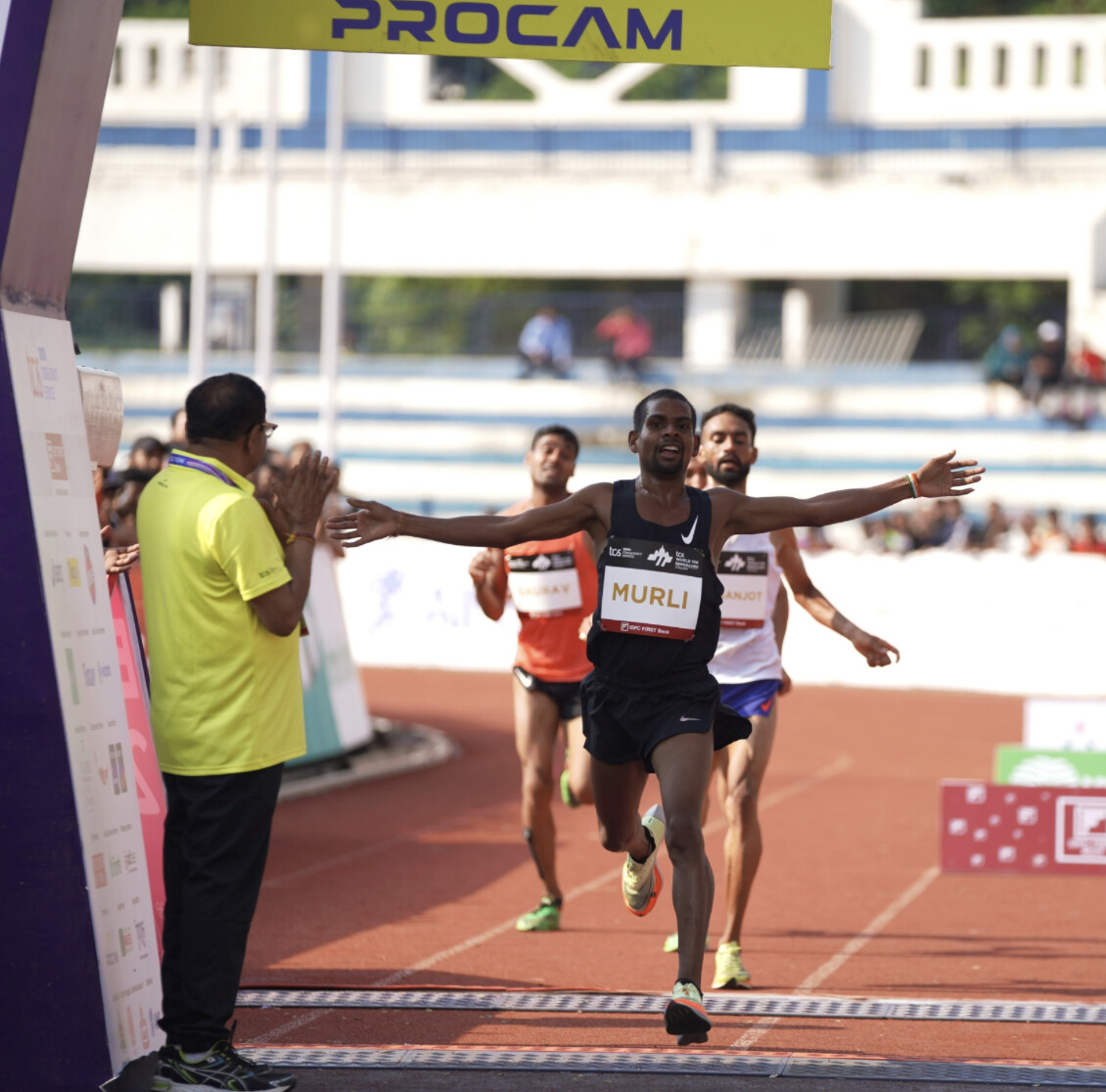
Sawe, who clocked the world’s fifth fastest 10K time in Germany last month, ran a superbly-paced race to win in a close contest and Gemechu was equally impressive in the way she kicked on at the end in the prestigious USD 210,000 World Athletics Gold Label Road Race. The winners took home an equal prize cheque of USD 26,000 each in what is possibly one of the greatest road races in Asia. Sawe won in a time of 27:58.24 and Gemechu in 31:38.
It was an Ethiopian 1-2-3 in the women’s race with Fotyen Tesafe finishing four seconds behind Gemechu and the experienced Dera Dida only seven seconds shy of the winner.
It came down to the final kilometre after the trio grippingly ran almost similar times through 2.5 km, 5 km and 7.5 km splits and it was a strong finish by Gemechu that saw this year’s Tokyo Marathon runner-up take the crown.
In her previous visit to Bengaluru in 2019 Gemechu had finished sixth. “I was determined to get this victory. In 2019, I had made one mistake, this time I had the experience so this was an easier race. I think my track experience came in handy today,” she told reporters after her sensational win.
Three Kenyans finished in the top four in the men’s race that saw last year’s winner and course record holder Nicholas Kipkoekir come fourth, as his countryman Sawe won in spectacular style after kicking on at the finish.
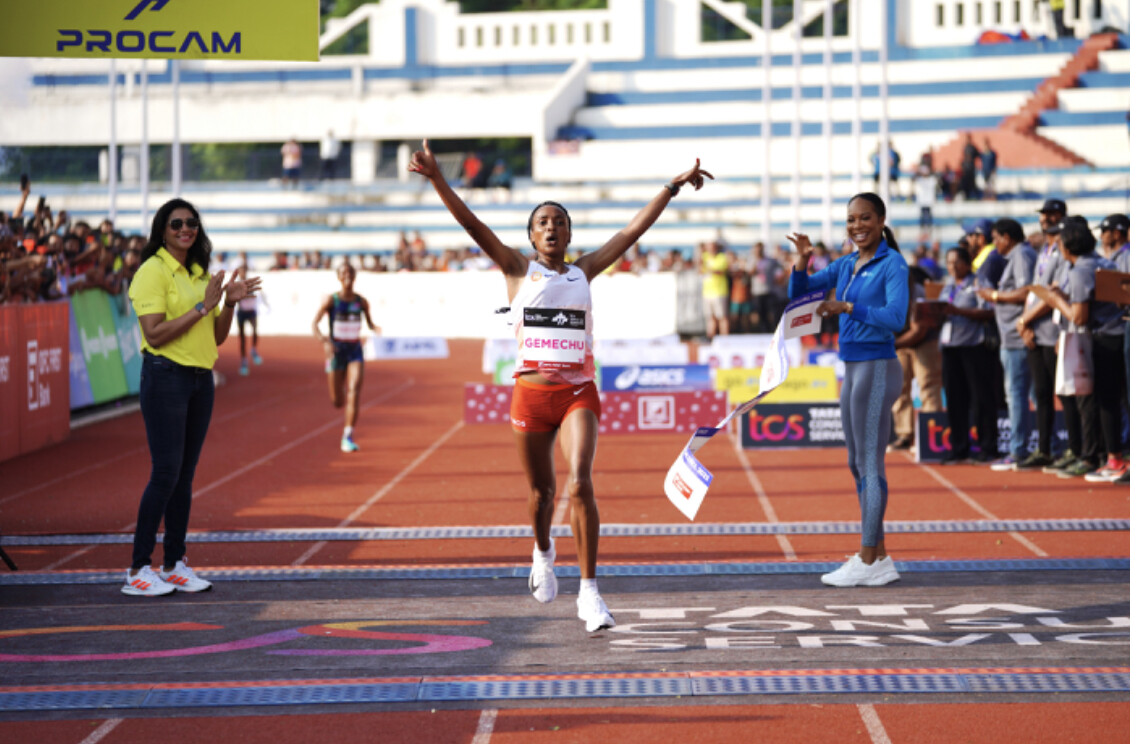
Sawe won milliseconds ahead of Rodrigue Kwizera (Burundi) after the latter was ahead moments earlier in what was a gripping race. “It’s my first time here. I was feeling confident coming into the run because I’m coming off a victory in Germany. The last two kilometres was really tough. I told myself I have to push really hard, even the last 500m was very challenging,” he said.
In the race for the Indian elite athletes, India's most promising distance runner Murli ensured a brilliant finish clocking 29:58.03 with Harmanjot Singh giving a close contest for the top spot. He finished with a time of 29:59.10 and Uttam Chand finished third with a time of 29:59.24.
The Indian men’s race followed a similar template as the international one with the athletes running together as a pack from the get-go. Initially, it was Uttam Chand who led the charge, with Gaurav hot on his heels.
While Uttam was being chased by Gaurav for most of the race, it was Harmanjot Singh and Murli Gavit who powered through the pack in the latter stages of the contest. The rankings changed significantly in the final couple of kilometres as the likes of Harmanjot and Murli went through the gears and took the contest down to the wire.
It was Murli who had just the right amount of fuel in the tank to power through the home stretch as he stormed into the lead and finished ahead of Harmanjot and Uttam. “This was my second race here. I last took part in TCS World 10K in 2015. The weather didn’t matter much to me, I have been training well. Although this wasn’t my personal best, I am happy with the big win,” stated an elated Murli.
Among the Indian women, it wasn’t as much of a tight contest, as the 19-year-old Tamshi Singh produced a personal best performance in only her first appearance here. She timed 34:12 while Poonam Sonune was second with a time of 34:29, and Seema finished third with the clock reading 34:30.
Both Murli and Tamshi walked away with a grand cash purse of INR 2,75,000 each.
The start of the women’s race, however, was a different story. It was Neetu Kumari and Bharti Nain who led the pack for the first 12 minutes, with Tamshi staying on their shoulders. But soon after, it was Tamshi who broke away just after the mid-way stage, and continued to build on.
Soon enough, the youngster had a lead of about 50 metres. With no one coming close to challenging her, Tamshi continued in her merry ways finishing off the contest in style. “It feels great to win in my debut race here. I’ve never ran the 10K before. The prize money here will definitely help me in my career to buy shoes and other gear. Next, I’m going to prepare for All India University meet, that is my next target,” stated Tamshi.
The 15th edition held in India’s running capital of Bengaluru also witnessed over 27,000 amateurs participate in a road race that has changed the fitness paradigm of the country and grown into one of the greatest road races in Asia.
(05/21/2023) ⚡AMPTCS WORLD 10K BENGALURU
The TCS World 10k Bengaluru has always excelled in ways beyond running. It has opened new doors for people to reach out to the less privileged of the society and encourages them to do their bit. The TCS World 10K event is the world’s richest 10 Km run and has seen participation from top elite athletes in the world. ...
more...For over 100 years San Francisco has hosted the Bay to Breakers
Attire on Sunday at the Bay to Breakers ranged from a Hot Cheetos bag outfit to shark and bovine costumes -- to proudly worn birthday suits -- as thousands of runners raced across San Francisco in the annual Bay to Breakers footrace from the city’s eastern side to Ocean Beach .
With attendance for the 7.5-mile race rebounding from pandemic doldrums, organizers reported 17,000 registered runners, up from 12,000 last year. The walkers, runners and revelers started off at 8 a.m. from Main and Howard streets near the Embarcadero and filled the streets westward, chugging up the Hayes Street Hill and racing through Golden Gate Park to the shore.
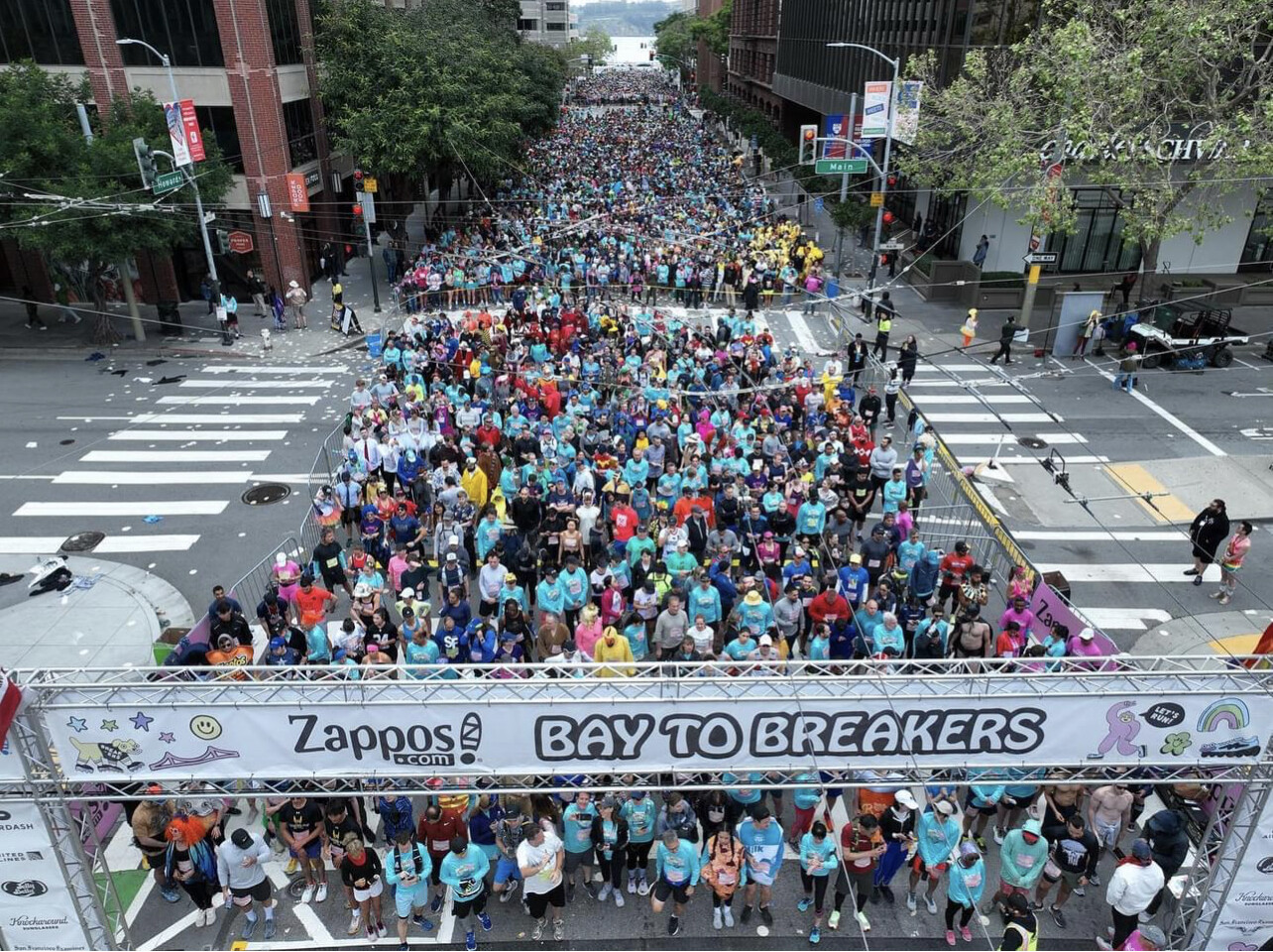
Colin Bennie of San Francisco won first place and completed the race in 35 minutes and 49 seconds (photo). The fastest women was Sarah Anderson, who finished in 43 minutes and 2 seconds.
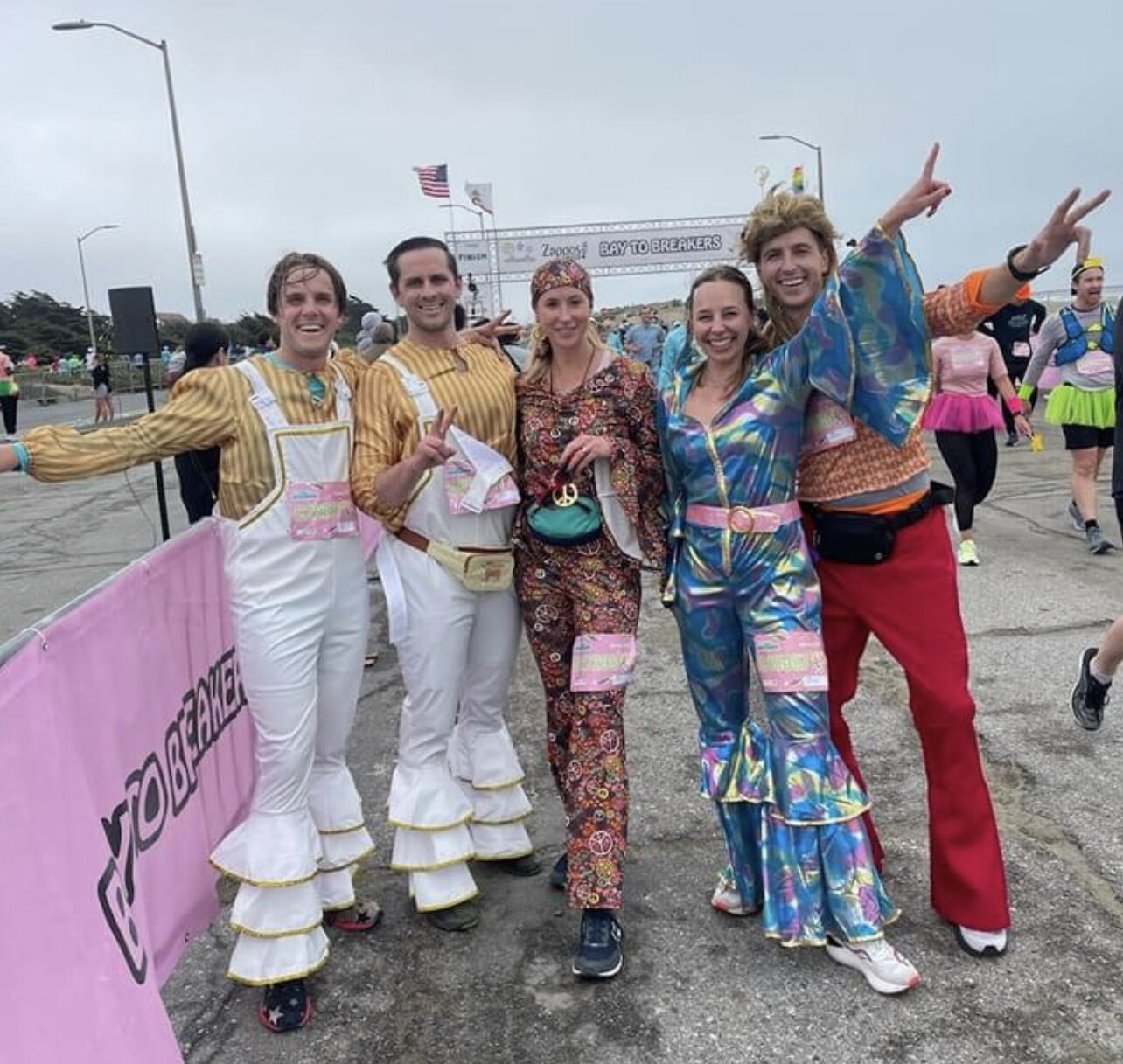
At the halfway mark Sunday, near Fell and Broderick streets, the scent of sizzling bacon-wrapped hot dogs and pop music blaring from speakers filled the air as families and onlookers cheered from the sidelines. As is customary, most runners were in wacky costumes, including the likes of a furry Elmo suit and bee and duck attire.
Among the numerous “centipede” runner teams was one group dressed in a Golden Gate Bridge outfit. Other participants were naked, wearing only hats and tennis shoes in 55-degree weather. For most, the idea was not to win the race, and many racers stopped to take a break and photos with their friends or gobble down hot dogs.
“It’s just such an iconic San Francisco event,” said Seth Cotterell, who donned a Hamilton-inspired dress, pearl necklace, black dangly earrings and black sneakers. It was his first time back running Bay to Brakers since he first ran it nearly 20 years ago, he said.
Although C.J. Timloy did not sign up for this year’s race, she dressed up anyway in a Where’s Waldo costume to get in the spirit. Timloy, her wife and a friend trekked from the Mission District to the Panhandle park for a picnic, grabbing a front-seat view of the race.
“We just love to party and take part of the festivities,” Timloy said, adding that she grew up attending the race because her parents ran it. Her mother, she said, always dressed up as a hula dancer.
Timloy said she plans to run the race next year.
The Breakers have run yearly since 1912, pausing only in 2020 and 2021 as a pandemic precaution.
Bay to Breakers is an annual footrace in San Francisco, California typically on the third Sunday of May. The phrase "Bay to Breakers" reflects the fact that the race starts at the northeast end of the downtown area a few blocks from The Embarcadero(adjacent to San Francisco Bay) and runs west through the city to finish at the Great Highway(adjacent to the Pacific coast, where breakers crash onto Ocean Beach). The complete course is 7.46 miles (12 km) long.
Course records
Men: 33:31 (2009)Sammy KitwaraWomen: 38:07 (2010)Lineth Chepkurui
Very little if any prize money is now paid to the winners.
(05/21/2023) ⚡AMP
African 100m record holder pledges to plant 1 million trees in 2023
African 100m record holder Ferdinand Omanyala of Kenya has signed on to an initiative to personally plant one million trees in the 2023 track season. The Kenyan news outlet Nation reported that Omanyala, the 2022 Commonwealth Games gold medallist in the 100m, discussed his tree-planting plans at a ceremony on Friday ahead of the Kip Keino Classic meet in Nairobi.
Omanyala (whose 100m PB of 9.77 seconds is the fastest in African history) has been working on his tree-planting project since the start of 2023. He is working in tandem with Athletics Kenya, which has reportedly engaged in similar initiatives surrounding climate change and air quality. Jack Tuwei, Athletics Kenya’s president, told Nation that both climate change and air quality have negative effects on sport, which prompted the organization to act.

Omanyala told the press that he hopes more athletes will support this campaign. “I’m aiming to plant one million trees this season, and my plea to the other athletes and anyone supporting sports is to join the campaign, because this is what we need as sports men and women,” he said.
He continued, saying, “by planting trees, the community is also set to benefit from clean air.” This is Omanyala’s main reason for setting out on his project of planting one million trees, adding that he wants to “fill every space available [in Kenya] with trees.” While he is only focused on working in Kenya, Omanyala acknowledged the global issues presented by climate change, saying it is “a worldwide concern.”
A day after his tree-planting ceremony, Omanyala raced in front of a home crowd at the Kip Keino Classic. He beat Americans Kenny Bednarek and Marvin Bracy-Williams to the line, running a world-leading time of 9.84 seconds to take the win. Bednarek finished in second in 9.98 and Bracy-Williams crossed the line in 10.03.
(05/21/2023) ⚡AMPby Running Magazine
Mo Farah eighth in penultimate race of career
Four-time Olympic champion Mo Farah finished eighth at the Great Manchester Run, the penultimate race of his career.
The 40-year-old Briton completed the 10km course in 29 minutes 11 seconds - 44 seconds behind winner Eyob Faniel of Italy.
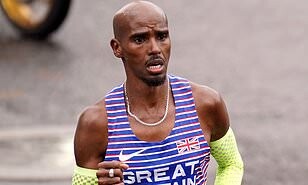
Kenya's Hellen Obiri defended the women's title in 31 minutes 14 seconds.
Farah's final competitive race will be the Great North Run in Newcastle on 10 September.
"I'm so proud of what I've achieved throughout my career," he told BBC Sport.

"I was a bit nervous at the start, but this city has some great history and the support I got was amazing."
Farah won 5,000m and 10,000m gold at the 2012 and 2016 Olympics.
He has also won six world and five European golds, and was knighted in 2017.
Faniel, who was born in Eritrea but moved to Italy as a child, beat Briton Marc Scott by four seconds, with Australia's Stewart McSweyn a further four seconds back. Britain's Jonny Mellor was 10th.
Obiri, who won the Boston Marathon last month, finished 45 seconds ahead of compatriot Peres Jepchirchir in second.
Calli Thackery was third - 1min 37secs behind Obiri - one of five Britons in the top 10.
Stephanie Twell was fourth, Rose Harvey fifth, Natasha Cockram seventh and Rachael Franklin 10th.
Britain's Commonwealth 10,000m champion Eilish McColgan was absent as she recovers from a knee injury.
(05/21/2023) ⚡AMPGreat Manchester Run
The Great Manchester Run, established in 2003, is an annual 10 kilometer run through Greater Manchester and is the largest 10K in Europe. Usually held in mid-May, it is the third-largest mass participation running event in the United Kingdom behind the Great North Run and the London Marathon. It is part of the Great Runs series of road races in...
more...Just one run changes how your brain reacts to food, new study shows
Going out for just one run can curb your appetite while also heightening your response to food cues in parts of your brain, according to a new study published in the journal Human Brain Mapping.
Researchers from four British universities and one in Japan recently explored the effects of running on blood flow in the brain and its influence on appetite. For the study, 23 men received functional magnetic resonance imaging (fMRI) scans before and after 60 minutes of running or rest.

During the scan, each participant viewed three types of images ranging from low-energy dense foods, such as fruits and vegetables, to high-energy dense foods, such as chocolate, as well as non-food items such as furniture.Researchers found running suppressed how hungry participants said they felt, but it increased the reactivity to food cues in different parts of the brain. Food cue reactivity is the physical and psychological response to the sight or smell of food, which can have an impact on appetite and how much a person eats.
“Our findings confirm individuals feel less hungry during and immediately after an exercise session and provide some insights into the short-term influence of exercise on brain appetite responses,” says Dr. Alice Thackray, senior research associate in exercise and health sciences at Loughborough’s School of Sport, Exercise and Health Sciences.
"Although additional research is needed to determine the implications of these findings, we know the brain plays an important role in the control of appetite and food intake. This study is part of an exciting collaboration that we plan to develop further as we continue to explore how exercise and appetite interact, including the influence on central [brain] responses.”David Stensel, professor of exercise metabolism at Loughborough University, says the role exercise plays in modifying appetite and aiding weight control “remains a hotly debated topic.
This research demonstrates that how our brains respond to food cues can be altered by exercise.”He adds the study “provides a springboard for further work to characterize appetite responses to exercise more precisely and comprehensively. This, in turn, will give us a better understanding of the role of exercise in preventing and managing unhealthy weight gain.”
(05/21/2023) ⚡AMPby Running Magazine
“Capacity Training” Is the Key to Long-Term Running Endurance
To build endurance as a runner is to build “capacity.” But what does this look like? Strength running coach Jason Fitzgerald explains.
What makes a good endurance runner? There are many skills that help endurance runners perform at their best, like:

– Power (the ability to produce force quickly) – Mental toughness (the ability to psychologically endure discomfort) – Economy (the efficiency of your stride) – VO2 Max (the maximum amount of oxygen you can process) – Speed (a high maximum velocity) – Endurance (the ability to withstand fatigue at high workloads)
But of all these skills, endurance is the most important. And fortunately, for us, it’s one of the most trainable skills.
But what exactly is endurance? At its most fundamental level, endurance is the ability to run in an aerobic state (when our bodies are using oxygen as their primary source of energy) while withstanding fatigue. It’s having a highly developed aerobic energy system. Runners who can seemingly run forever have exceptional endurance.
Think of your training as a pyramid. Everything you do—from lifting weights, running hard workouts, using a foam roller, or completing a series of strides—forms your training pyramid. Easy running helps us gain endurance the most, and it forms the base of the pyramid.
This “training pyramid” has easy runs, long runs, and aerobic workouts as its foundation. They are the most fundamental building blocks of our capabilities as endurance runners. And that’s because these are capacity-building runs!
“Capacity” training is the key to being the best endurance runner you can be. Examples of capacity training are the runs and workouts in your program that build long-term capacity for endurance, like:
– Easy runs (which should make up approximately 80-90 percent of your training volume) – Long runs (my personal favorite endurance-builder) – Aerobic workouts (lactate threshold, half-marathon, or marathon pace workouts)
These training sessions improve your long-term potential by creating structural adaptations within your body. Quite literally, you’re changing how your body is structured to benefit your highest endurance potential in three main ways:
– Mitochondria (the energy factories in your cells) become denser and more numerous – Capillaries grow, allowing for better distribution of blood flow and oxygen – Heart grows stronger and bigger, pumping a larger volume of blood to working muscles
These adaptations allow your body to complete a higher workload (i.e., train more) while becoming more efficient over time. Now let’s compare capacity training to its counterpart: utilization training.
Think of “capacity” like your bank account. It represents your spending ability. Utilization is like your credit card statement in that it represents how you’ve used your spending ability. Utilization training fine-tunes capacity. It improves your utilization of the fitness you already have.
Short, fast repetitions and hard VO2 max workouts represent utilization training. They’re necessary, but they don’t really build additional fitness or improve your capacity for endurance. These types of workouts also naturally have more risk for injury or over-training, so they must be completed strategically and less frequently than capacity-building sessions.
For that, we have to include the building blocks of capacity throughout the training cycle.
When asking yourself what types of running can build your long-term capacity for endurance, think “base training.” The focus of base training is the same as capacity-oriented running: general endurance and aerobic strength. We could easily rename “base training” and call it, more accurately, “capacity training.”
Here are the three capacity-building run types:
1) Easy running 2) Long runs 3) Aerobic workouts
Each one has its special place in your training so let’s make sure we understand each.
Easy Running. Easy running forms the cornerstone of every endurance runner’s program. In fact, 80-90 percent of your total mileage should be at an easy effort. But how do we know if we’re truly running easy?
There are three ways to figure out if you’re running at an easy effort:
1) First, rely on perceived effort. If your run is comfortable, controlled, and conversational, it’s likely an easy effort. Simple.
2) Second, use a pace calculator. Plug in a few of your race Personal Bests and you’ll be given a range of what is likely your easy pace. This is usually accurate and a good starting point.
3) Finally, heart rate is another good option for determining your easy pace. Once you know your maximum heart rate (ideally by wearing a chest heart rate strap during a short, intense race), you can run at approximately 60-70 percent of your maximum. This is commonly known as Zone 2 training.
When in doubt, just run a little slower. Your body will barely know the difference and you’ll still be gaining all the benefits of easy running.
Long Runs. While there are many types of long runs a runner can do, the simplest tactic is just a longer easy run. It’s the longest run of the week, typically 20-40 percent longer than any other run. And, much like other runs, long runs are run at an easy effort.
Most runners should aim to complete a long run every week, with a cutback distance every 4-8 weeks depending on fatigue and training goals. A cutback long run is simply a shorter long run where the distance is reduced by 2-5 miles to make it easier.
Aerobic Workouts. Aerobic workouts are the last strategy we have to continue building our capacity for endurance. These are faster training sessions run at any pace at or slower than lactate threshold (commonly known as “tempo runs.”) That includes a variety of efforts. Here they are in order of fastest to slowest:
– Lactate threshold (the fastest you can run while still working aerobically) – Half Marathon Pace (sometimes called steady-state pace) – Marathon Pace (the pace-per-mile from your fastest marathon)
If you’re running a workout at these slower efforts, you’re running an aerobic training session.
Bonus Strategy: Cross-Training. For those athletes who might be injury-prone, we don’t have to exclusively rely on running to build our endurance capacity. If higher mileage (i.e. more easy runs), longer long runs, and aerobic workouts present an injury risk, we can use cross-training to bridge the gap.
Aerobic cross-training like cycling, pool running, power hiking (especially uphill), or the elliptical can help athletes build more endurance without the added injury risk of running.
While cross-training is not running (and we should not expect to harvest carrots after planting potatoes), fitness does indeed carry over to your running. It can be helpful to estimate about 15 minutes of cross-training is aerobically equivalent to a mile of running.
So, if you’re a runner who is worried about running more (or doing too frequent workouts) because of over-training or injury fears, cross-training can help you add extra endurance without the risk.
Achieving your potential as a runner takes a long-term, patient approach that prioritizes the fundamentals. A consistent focus on training your capacity through lots of easy running, consistent long runs, and aerobic workouts will help get you there.
(05/21/2023) ⚡AMPby Outside On Line
The Quest for a Simpler Way to Boost Running Efficiency
Plyometrics can make you a more efficient runner, and it turns out they don’t need to be complicated or risky
It’s pretty clear, at this point, that plyometric training can make you a more efficient runner. There’s still plenty of debate about how it works. Does it streamline the signals traveling from brain to muscle? Does it make your tendons stiffer, enabling them to store and release more energy as they’re stretched with each stride? Does it alter your running style so that you take quicker and lighter steps? No one is sure, but there’s little debate that it does something.

As a result, studies like this one in Sports Biomechanics, published last month by a group led by Aurélien Patoz of the University of Lausanne, don’t garner much attention. They found a 3.9 percent improvement in running economy after eight weeks of either plyometric or dynamic strength training, roughly comparable to what Nike’s original Vaporfly 4% shoe produced. (They also found no evidence that either form of training altered running stride in any significant way, for what it’s worth.)
Why no excitement about a free four-percent boost? As someone who has experimented on and off with various forms of plyometric training over several decades, let me venture a hypothesis: it’s perceived as too complicated, and possibly risky, for most of us. Plyometrics involve explosive movements in which you try to maximize the force produced in the shortest possible time. You often see people leaping off steps, bounding over hurdles, and performing various other feats of impressive coordination.
The subjects in Patoz’s study were amateurs with no prior experience with any form of structured strength training. As a result, the exercises they did weren’t especially daunting by plyometric standards. But they weren’t simple, either. Here’s an overview of the program:
Even if you think your hamstrings can handle drop jumps, plyometric lunges, bounding and so on without snapping, you still need various bits of equipment and a bunch of time. Does it need to be that complicated?
That’s the question tackled by another recent study, this one led by Tobias Engeroff of Goethe University Frankfurt and published in Scientific Reports. They stripped plyometric training down to its bare bones, tested it on a group of amateur runners—and still found a significant improvement in running economy after just six weeks. The exact size of the improvement depends on how you measure it and at what speed, but was between 2 and 4 percent.
Engeroff’s plyometric program involved nothing but hopping on the spot. Specifically, “participants were instructed to start with both feet no wider than hip width apart and to hop as high as possible with both legs, keeping the knees extended and aiming to minimize ground contact time.” They started by hopping for 10 seconds, resting for 50 seconds, and repeating five times for a total of five minutes. They did this five-minute program daily, decreasing the rest and increasing the number of sets each week: the second week was 6 sets of 10 seconds of hopping with 40 seconds of rest; the sixth and final week was 15 sets of 10 seconds hopping with 10 seconds of rest, still totaling five minutes.
This program was based on the idea that it’s tendon stiffness that boosts running economy. In particular, the stretch and recoil of the Achilles tendon provides between half and three-quarters of the positive work required for running, by some estimates. Engeroff’s short daily program draws on recent research by Keith Baar and others suggesting that connective tissue such as tendons responds best to brief, frequent stimulus rather than longer and harder workouts. Notably, this approach didn’t injure any of the runners.
The point here isn’t necessarily that daily hops are the new magic exercise that everyone should do. Indeed, it’s worth emphasizing that Patoz’s study found essentially the same improvements with both plyometrics and dynamic strength training. That’s a familiar result in studies that have tried to determine the best economy-boosting regimen: all sorts of different approaches seem to produce similar results. Patoz’s dynamic strength program involves a bunch of bodyweight exercises that focus on concentric contractions: lunges, step-ups, squats, stair jumps. Those are all components of my current strength routine, and I like the idea that, in addition to stiffening my tendons, I might also be strengthening my muscles.
It’s worth acknowledging that the subjects in both these studies were recreational runners with little prior experience of either plyometric or strength training. The minimalist program that works for them might not do much for a serious competitive runner with years of resistance training experience. Those are the people who might need to do the elaborate one-legged triple-axel hurdle hops that you see in online training montages. For the rest of us, though, the message seems to be: do something. It’s as effective as supershoes, and way cheaper.
(05/21/2023) ⚡AMPby Outside Online
5 misconceptions new runners need to forget
When you first start running, your inexperience could lead to unnecessary worries. Any ideas you have about the sport are probably based on assumptions or things you’ve heard from other people. Well, we’re here to help you relax, because most of these worries are unfounded. There are plenty of misconceptions you’ll discover to be false as you progress in the sport, but here are five you can forget about right away.
You have to run a marathon
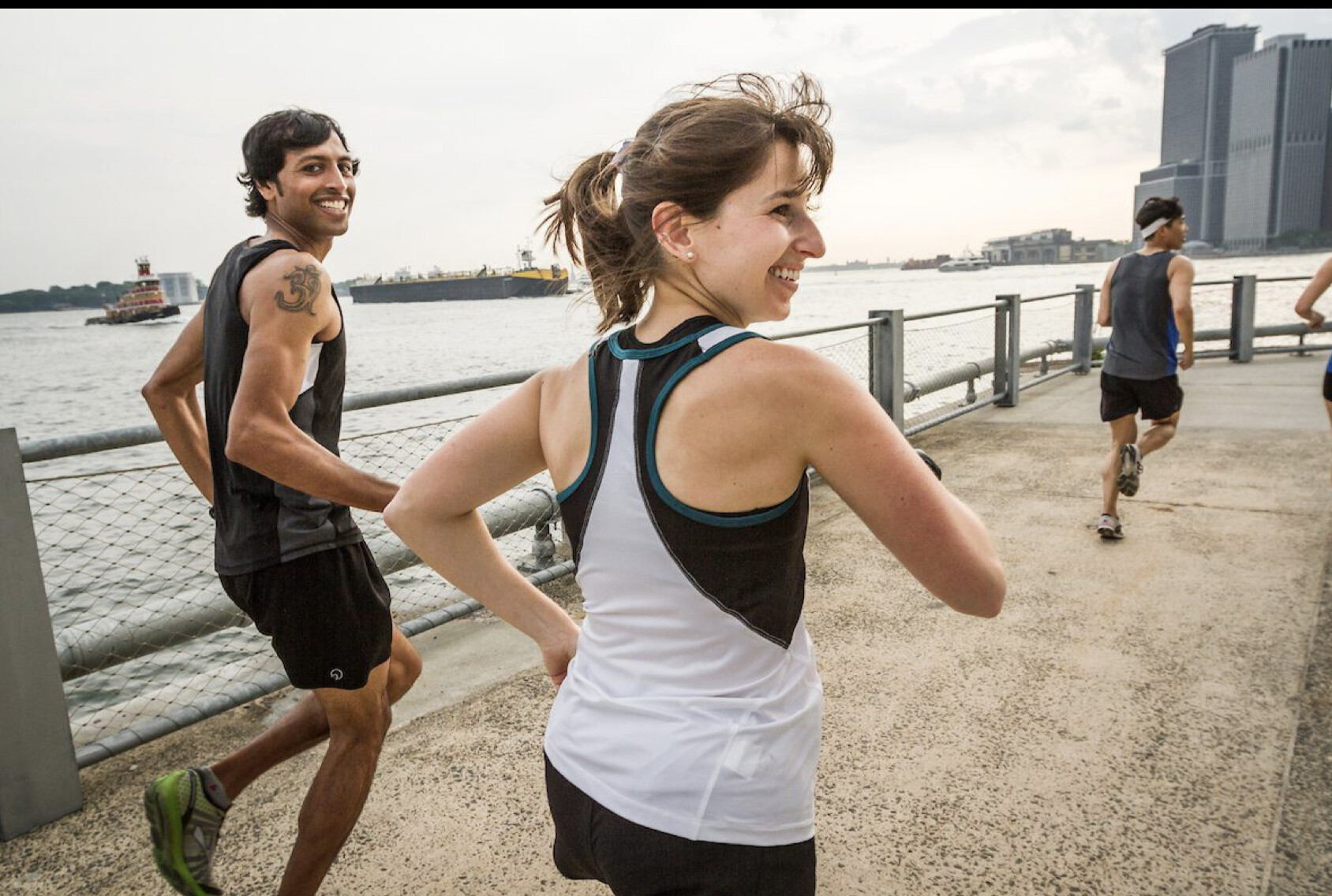
Everyone always talks about the marathon, and as a result, new runners can get the feeling that they should run one. That’s not the case at all. If the marathon was the only race that mattered, it would be the only race—period. There are so many other race distances and options to choose from, however, so you should never feel like you have to run any one in particular. You may one day choose to run a marathon, but it’s a big commitment (about four months of training), and if you never feel that pull to do so, it’s perfectly fine.
Running is expensive
Yes, running can be expensive if you let it, but it really doesn’t have to break the bank. You should invest in a good pair of shoes (these will not only help you perform well, but the right shoe can also go a long way in preventing injuries), and one or two pieces of technical apparel certainly make the experience more comfortable, but that’s pretty much where the list of “must-haves” ends.
There’s also the matter of races, which can also get pricy. The great thing about running is that there are races everywhere, and while you can drop a pretty penny on a major race in a big city, there will always be smaller local races for a fraction of the price. A 5K in a big city surrounded by thousands of other people is the same distance as a 5K in your hometown, so if you want to race inexpensively, opt for smaller events close to home.
You need to be fast
Speed is, of course, a significant component of running, but while plenty of people will discuss their average pace and their race times, you don’t have to be fast to have fun in the sport. It’s great if speed and fast times motivate you to run and to chase PBs, but it’s perfectly fine to run for the fun of it and to forget about your pace altogether.
Running is a solo sport
While running is a solo competition on race day, it doesn’t mean you have to run alone at all times. You can run with a friend or a group every day if you like; an online search will usually yield groups and clubs you never knew existed–or you might opt to simply run with friends.
You have to race
Just as you don’t have to ever run a marathon, you also don’t have to race. If you find joy in running for its own sake and don’t need competition to drive you, that’s great. Don’t let anyone try to convince you that you have to race if it’s not your thing.
(05/21/2023) ⚡AMPby Running Magazine
Peres Jepchirchir will compete in the Great Manchester Run 10km race on Sunday
Olympic marathon champion Peres Jepchirchir and Hellen Obiri will compete in the Great Manchester Run 10km race on Sunday.
Jepchirchir will be using the race to train for the next marathon season where she is optimistic of good results.
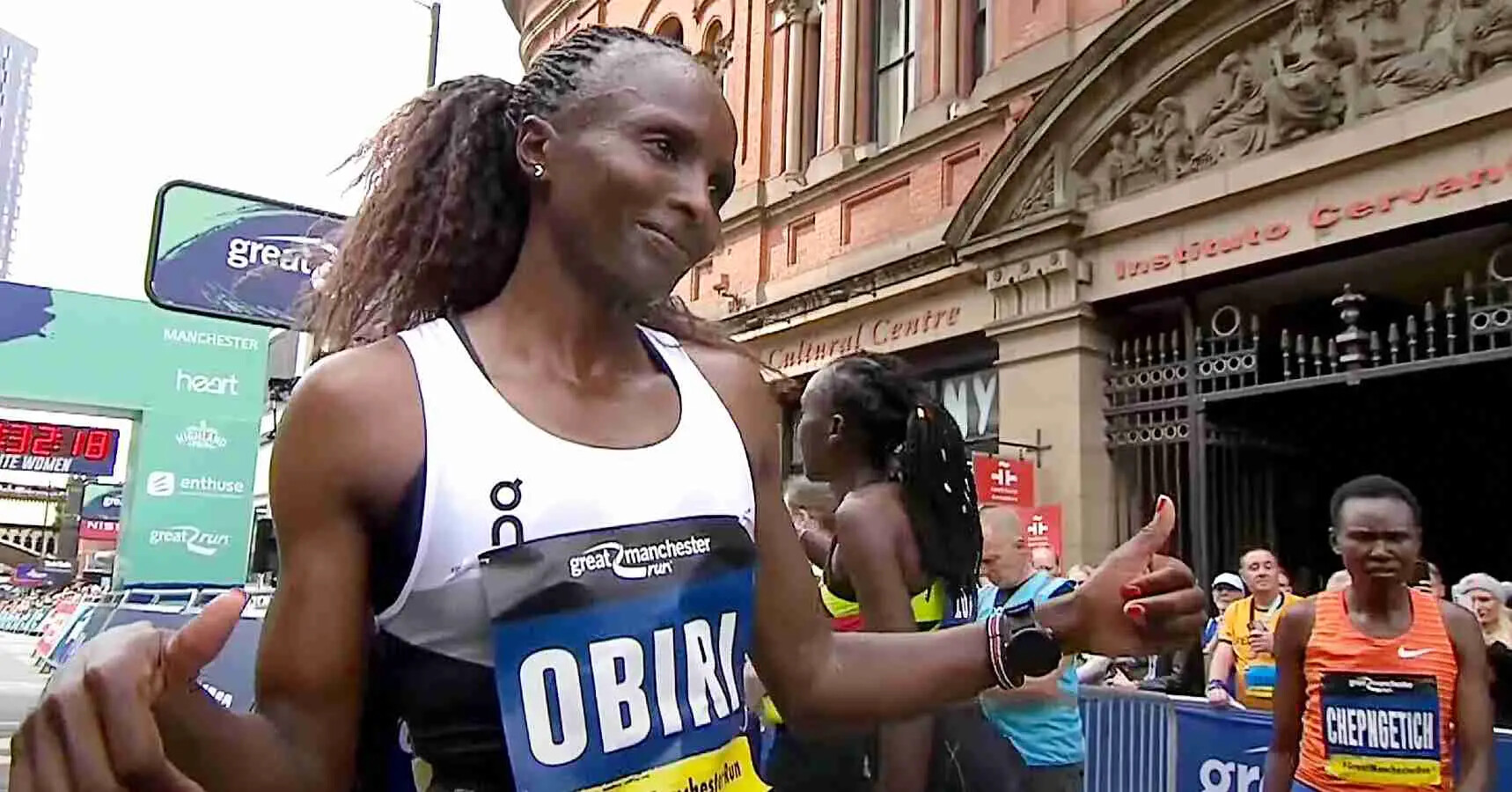
The Kapsabet-based Jepchirchir will battle it out with defending champion Hellen Obiri, who is fresh from winning the Boston Marathon last month in the USA, among other athletes.
“Competing in the race on Sunday is just part of my training as we start another marathon season. I’m still waiting for confirmation from my management on which race I will be competing in next,” said Jepchirchir.
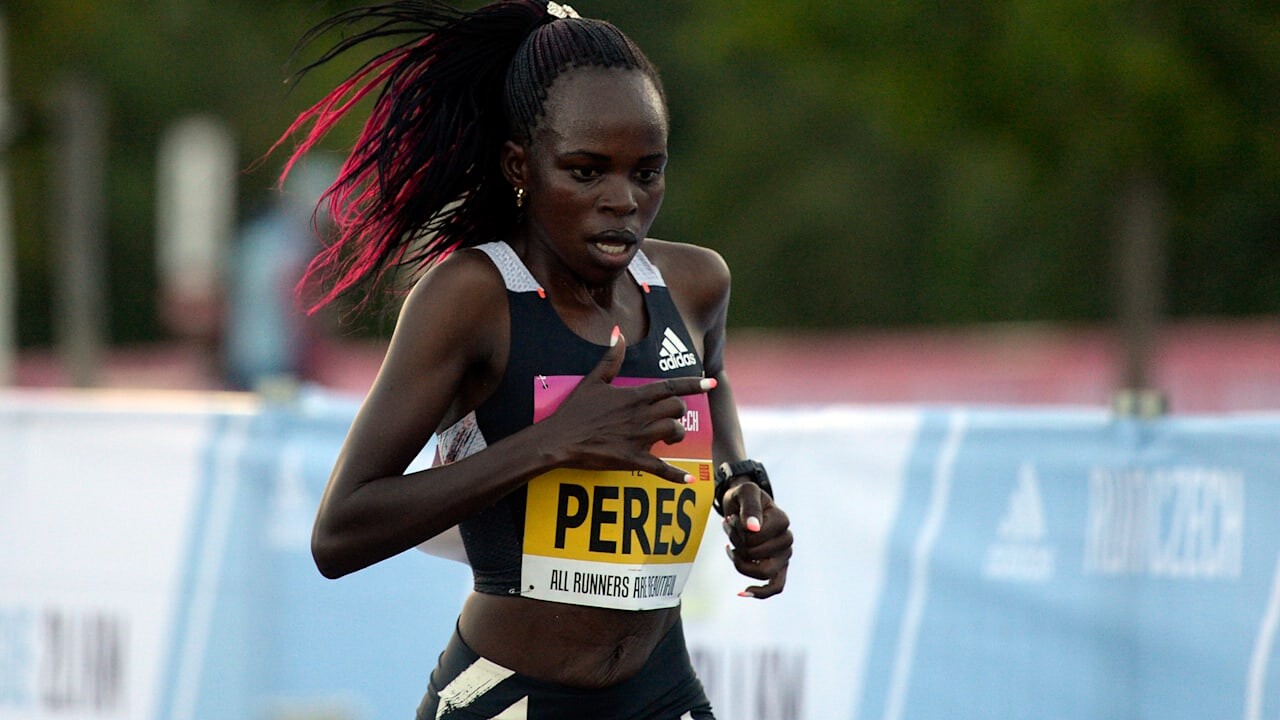
She said that it feels good competing once again after being out for a long period due to injuries. She has set her eyes on performing well in the forthcoming assignments.
“Competing in the London Marathon and finishing on the podium was something sweet for me. I was running to see how my body would react and I was elated by my performance. I believe I will be able to compete well in the forthcoming events,” added Jepchirchir.
Obiri has risen to stamp authority in the road races after graduating from track where she ruled in the 5,000m and 10,000m. She said that she has just resumed her training and prepared for only two weeks.
“I will be competing on Sunday but I don’t have anything in mind despite having ran a course record last year. I will be eyeing a good race because I have just trained for two weeks,” Obiri told Nation Sport on phone from UK.
Her debut in marathon saw her emerge sixth in the 2022 New York Marathon in a time of 2:25:49 before winning her second marathon race, Boston Marathon in a personal best of 2:21:38.
Also in the mix is Ethiopia’s former world silver medalist in the 5,000m Senbere Teferi, British athletes, Mollie Williams, Steph Twell, Rose Harvey, Lily Patridge among others.
In last year’s race, Obiri ran a course record of 30:15 winning ahead of British Eilish McColgan who clocked 30:19 while Kenya’s Ruth Chepng’etich settled for third place in 30:29.
(05/20/2023) ⚡AMPby Bernard Rotich
Great Manchester Run
The Great Manchester Run, established in 2003, is an annual 10 kilometer run through Greater Manchester and is the largest 10K in Europe. Usually held in mid-May, it is the third-largest mass participation running event in the United Kingdom behind the Great North Run and the London Marathon. It is part of the Great Runs series of road races in...
more...Legacy runner, 86, to take part in Cleveland Marathon for 46th time
Is he the energizer bunny? Because, 86-year-old Jim Mackert keeps going and going and going.
Since the Cleveland Marathon began in 1978, he's participated in all 46 events. He's only run the half-marathon once, last year. And, he's doing it again this year. Though, it had to take some convincing.
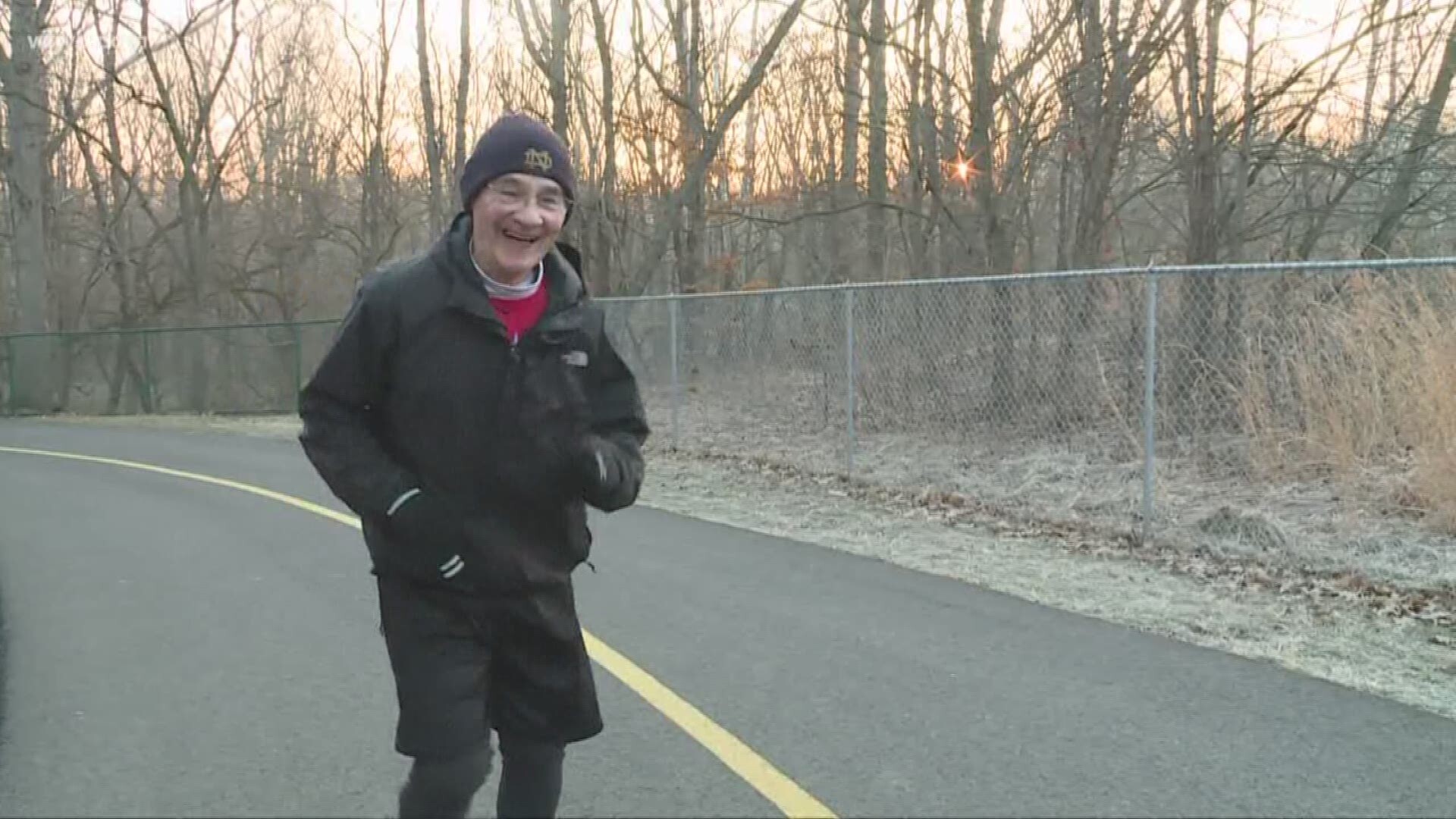
"(Until) last week, I was still planning on trying to do the marathon. But the family has been telling me that I should go to the half-marathon," Jim said.
You see, it's not easy for someone like Jim, a three-time Boston Marathon veteran, to start slowing down.
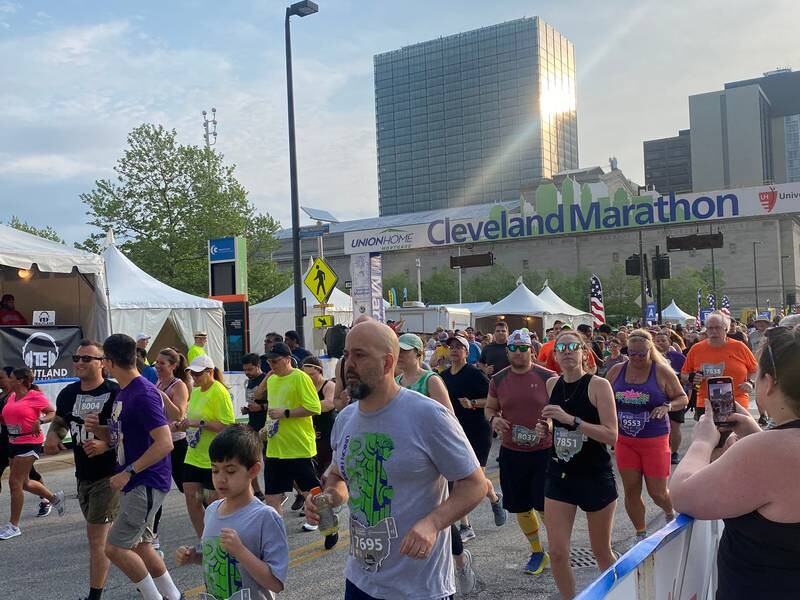
"I somehow, I'm gonna get through it now. It may take longer, you know, but time doesn't matter anymore," Jim said. "You know, they time me with a calendar now."
This father of six and loving grandpa has always been a jokester. That humor has kept us laughing for years, and why so many feel inspired by him.
Jim was recently honored by the Lorain County Track and Cross Country Hall of Fame. That's nothing new, as he's regularly honored for his running.
But if you've ever participated in the Cleveland Marathon events, you've probably seen him around. That's because he's been volunteering for more than three decades.
He inspires everyone he meets and especially young runners. For those thinking of breaking into the marathon world, Jim has a message for you:
"Don't let people tell you you can't reach a realistic goal. If you had heard how many people told me that I couldn't do what I'm doing ... I still feel like I wanna run another 70 years."
We asked if he'd ever stop running.
"I prefer not to. I prefer to stop until I drop over," Jim said.
Something tells us, he means it.
If you watch the marathon this Sunday, look for Jim. This legacy runner is leaving inspiration on the course.
(05/20/2023) ⚡AMPby Lindsay Buckingham
Cleveland Marathon
The Cleveland Marathon features a relatively flat and fast course, great volunteer support and a scenic view of downtown Cleveland and its major landmarks. The course has been designed for our athletes to enjoy views of Browns Stadium, the Rock and Roll Hall of Fame, Lake Erie and many other Cleveland highlights. The Cleveland Marathon began in 1978 in an...
more...Should I Give Up Alcohol During Training?
What are the benefits of staying sober as you head into the summer running season?
Sometimes we do crazy things to prepare for our endurance events of choice.

We wake up at the crack of dawn for laps in the freezing water, squeeze in stretching time wherever and whenever we can (airports, at work, in line at the pharmacy), and become way too familiar with painful chafing. But even through all of this, the craziest training tactic for some endurance athletes is the idea of giving up alcohol. Is it necessary, or can you get away with Saturday night cocktail hour while maintaining a good training schedule?
Regardless of how you feel on the topic, alcohol affects almost every part of the body. It especially impacts three things key to endurance training: hydration, sleep, and recovery.
Alcohol is a diuretic, which means when you’re drinking, you’re constantly losing fluids. A compound called acetic acid breaks down alcohol while the rest is expelled as toxins through sweat, urine, and even your breath.
Drinking can also negatively affect your sleeping schedule; studies show alcohol messes with REM sleep. While you may pass out on the pillow easier after a few cocktails, you’re more likely to wake up in the middle of the night and have poor sleep quality.
And last but not least, alcohol might slow down muscle recovery. Booze can negate protein synthesis, which is essential to muscle growth after strenuous exercise. This means if you still have alcohol in your system when you run or celebrate a Sunday long run with a few beers, your muscles may not recover as quickly. In fact, one study concluded that athletes who consume alcohol at least once a week are more likely to get injured compared to non-drinkers.

It might be possible to balance a healthy training lifestyle while occasionally enjoying a drink if you don’t overdo it. If you choose to drink, try to stick to these guidelines:
Use moderation. Don’t go overboard with the vodka cranberries. One or two drinks will suffice, but any more will be harder to recover from.
Time cocktail hour. Avoid drinking the night before tough workouts, intervals, and scheduled training days.
Choose wisely. It’s best to opt for drinks with low sugar and calorie content. A few good choices are vodka and soda water, dry white wine, and light beers.
Hydrate, hydrate, hydrate. To combat dehydration, drink one glass of water per alcoholic beverage. You can also supplement the loss of electrolytes with your sports drink of choice.
The choice to drink while training for an endurance sport is a personal one, and we won’t give you a hard fast answer. But if you have a specific goal for your training like a specific PR time, alcohol may hinder that. The safest way to insure alcohol doesn’t impact your endurance is to avoid it altogether.
However, it’s perfectly possible to enjoy training and the occasional beverage with friends. Be mindful of how much you hydrate, don’t go overboard on cocktails, and time your drinks far away from difficult endurance days.
If you’re looking to substitute a happy-hour drink with a mocktail, we’ve got you covered:
(05/20/2023) ⚡AMPby Outside On Line
Eating These Foods May Help with Seasonal Allergies
If you’re sneezing, itching, and dodging pollen at every turn, it may be time to shift your focus to what’s on your plate
‘Tis the season to be sniffly. In most of the U.S., spring allergies begin in February and last deep into the summer. The most common trigger is pollen; trees and grasses release grains into the air to pollinate other plants, all while creating the perfect storm of allergens.

It seems like every year, the consensus among allergy sufferers complain, “This season is worse than ever!” And while allergies may be worsened by changing climates, the root of the problem may actually begin in our kitchens rather than our backyards.
Author and gastroenterologist Dr. Shilpa Ravella says that lifestyle factors could contribute to the worsening of allergy conditions over the last few decades. Specifically, the foods we eat.
“Much of what we do in our lives tie into the gut microbiome,” Ravella says. “Gut health is important for immune health and preventing the development of autoimmune conditions like allergies.”
Ravella says we should be eating a variety of diverse plant foods (commonly found in the Mediterranean diet) to cultivate a diverse microbiome. Vegetables, whole grains, nuts, and seeds can placate an inflamed gut, which can prevent allergies from developing initially.
If you’re already prone to allergies, though, there are different foods to lessen the symptoms. Regular serving sizes of cabbage, broccoli, cauliflower, apples, and berries contain quercetin, a polyphenol that acts as an antihistamine. That’s the very same ingredient in the popular allergy drugs (which Ravella suggests you continue to take while maintaining this allergy-busting diet.)
Ravella says eating Omega-3 rich foods are also effective at not only subduing inflammation in our bodies, but completely reversing it. You’ll find Omega-3 fatty acids in walnuts, flaxseeds, chia seeds, herring, mackerel, and sardines.
A lesser known allergy remedy is fermented foods like sauerkraut, kombucha, kefir, pickles and miso. Studies show that consuming just a small amount of fermented foods a day has been shown to reduce inflammation and increase microbiome diversity.
Last but perhaps most important of all: keep hydrated.
“Water itself is one of the best anti-inflammatories,” Ravella says. “But you can also drink fresh juices and probiotic drinks. Some of us just don’t hydrate well enough.”
Allergies can be debilitating, but these tips can help alleviate the painful symptoms of, “The worst season ever.”
(05/20/2023) ⚡AMPby Outside Online
Just one run changes how your brain reacts to food, new study shows
Going out for just one run can curb your appetite while also heightening your response to food cues in parts of your brain, according to a new study published in the journal Human Brain Mapping.
Researchers from four British universities and one in Japan recently explored the effects of running on blood flow in the brain and its influence on appetite. For the study, 23 men received functional magnetic resonance imaging (fMRI) scans before and after 60 minutes of running or rest. During the scan, each participant viewed three types of images ranging from low-energy dense foods, such as fruits and vegetables, to high-energy dense foods, such as chocolate, as well as non-food items such as furniture.

Researchers found running suppressed how hungry participants said they felt, but it increased the reactivity to food cues in different parts of the brain. Food cue reactivity is the physical and psychological response to the sight or smell of food, which can have an impact on appetite and how much a person eats.
“Our findings confirm individuals feel less hungry during and immediately after an exercise session and provide some insights into the short-term influence of exercise on brain appetite responses,” says Dr. Alice Thackray, senior research associate in exercise and health sciences at Loughborough’s School of Sport, Exercise and Health Sciences. “Although additional research is needed to determine the implications of these findings, we know the brain plays an important role in the control of appetite and food intake. This study is part of an exciting collaboration that we plan to develop further as we continue to explore how exercise and appetite interact, including the influence on central [brain] responses.”

David Stensel, professor of exercise metabolism at Loughborough University, says the role exercise plays in modifying appetite and aiding weight control “remains a hotly debated topic. This research demonstrates that how our brains respond to food cues can be altered by exercise.”
He adds the study “provides a springboard for further work to characterize appetite responses to exercise more precisely and comprehensively. This, in turn, will give us a better understanding of the role of exercise in preventing and managing unhealthy weight gain.”
(05/19/2023) ⚡AMPby Paul Baswick
Five misconceptions new runners need to forget
When you first start running, your inexperience could lead to unnecessary worries. Any ideas you have about the sport are probably based on assumptions or things you’ve heard from other people. Well, we’re here to help you relax, because most of these worries are unfounded. There are plenty of misconceptions you’ll discover to be false as you progress in the sport, but here are five you can forget about right away.
1.- You have to run a marathon
Everyone always talks about the marathon, and as a result, new runners can get the feeling that they should run one. That’s not the case at all. If the marathon was the only race that mattered, it would be the only race—period. There are so many other race distances and options to choose from, however, so you should never feel like you have to run any one in particular. You may one day choose to run a marathon, but it’s a big commitment (about four months of training), and if you never feel that pull to do so, it’s perfectly fine.
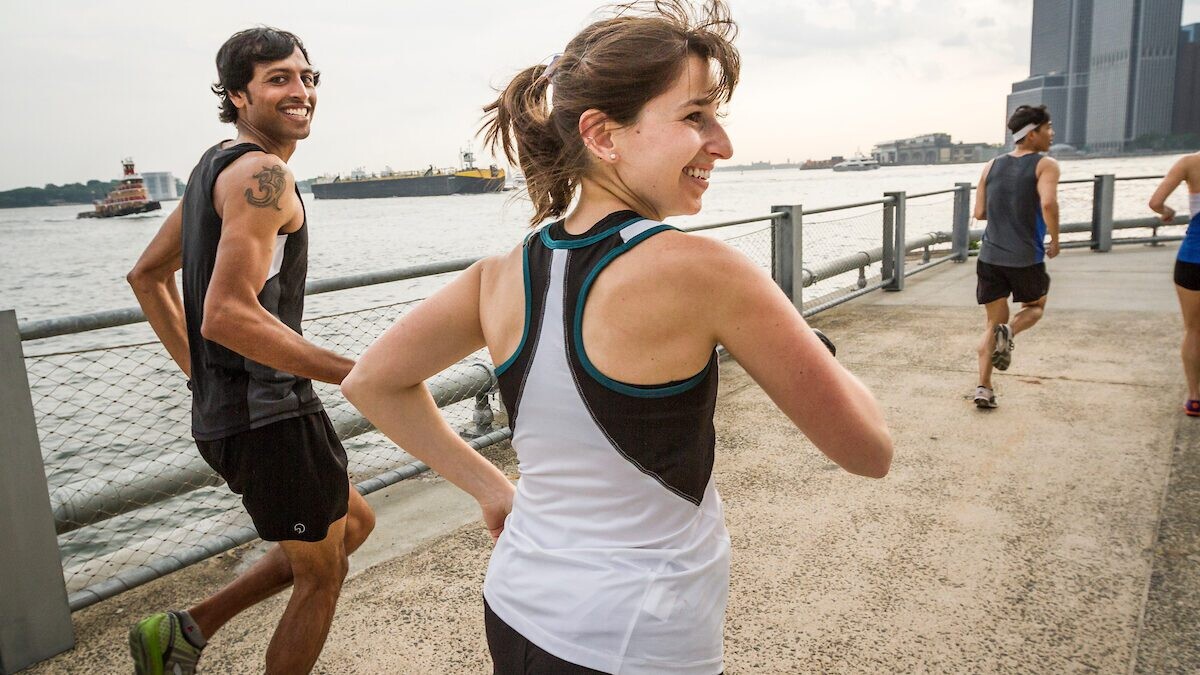
2.- Running is expensive
Yes, running can be expensive if you let it, but it really doesn’t have to break the bank. You should invest in a good pair of shoes (these will not only help you perform well, but the right shoe can also go a long way in preventing injuries), and one or two pieces of technical apparel certainly make the experience more comfortable, but that’s pretty much where the list of “must-haves” ends.

There’s also the matter of races, which can also get pricy. The great thing about running is that there are races everywhere, and while you can drop a pretty penny on a major race in a big city, there will always be smaller local races for a fraction of the price. A 5K in a big city surrounded by thousands of other people is the same distance as a 5K in your hometown, so if you want to race inexpensively, opt for smaller events close to home.
3.- You need to be fast
Speed is, of course, a significant component of running, but while plenty of people will discuss their average pace and their race times, you don’t have to be fast to have fun in the sport. It’s great if speed and fast times motivate you to run and to chase PBs, but it’s perfectly fine to run for the fun of it and to forget about your pace altogether.
4.- Running is a solo sport
While running is a solo competition on race day, it doesn’t mean you have to run alone at all times. You can run with a friend or a group every day if you like; an online search will usually yield groups and clubs you never knew existed–or you might opt to simply run with friends.
5.- You have to race
Just as you don’t have to ever run a marathon, you also don’t have to race. If you find joy in running for its own sake and don’t need competition to drive you, that’s great. Don’t let anyone try to convince you that you have to race if it’s not your thing.
(05/19/2023) ⚡AMPby Ben Snider-McGrath
Manchester stage set for speedy 10km contests
Mo Farah set for penultimate race while Hellen Obiri returns to defend her crown on city streets.
Mo Farah will tackle what is set to be the penultimate competitive race of his storied career as the 20th edition of the AJ Bell Great Manchester Run is staged on Sunday (May 21), but it won’t just be the multiple global track champion who will be attracting attention on the city streets.
Last year’s 10km event produced a spectacular women’s race as Hellen Obiri surged to a brilliant win in 30:15, four seconds ahead of Eilish McColgan’s British record-breaking performance.
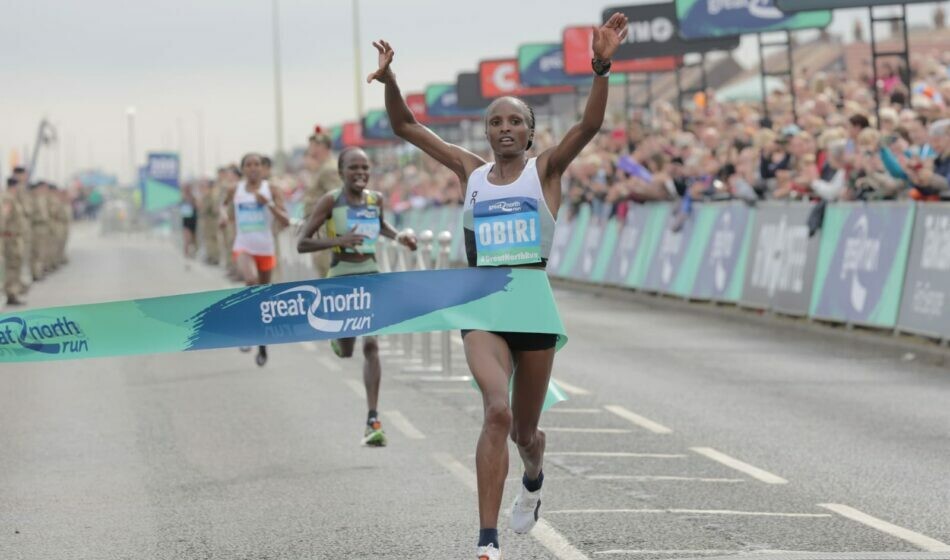
The Kenyan returns to defend her title this year, fresh from winning the Boston Marathon last month, but the former 5000m world champion and 2022 Great North Run winner won’t be joined by McColgan who is continuing her recovery from the knee problem which prevented her from making her marathon debut in London.
Instead, the strongest challenge is set to come from Peres Jepchirchir, the Kenyan Olympic marathon champion who was third in London, and Ethiopia’s 2015 5000m world championships silver medallist Senbere Teferi.
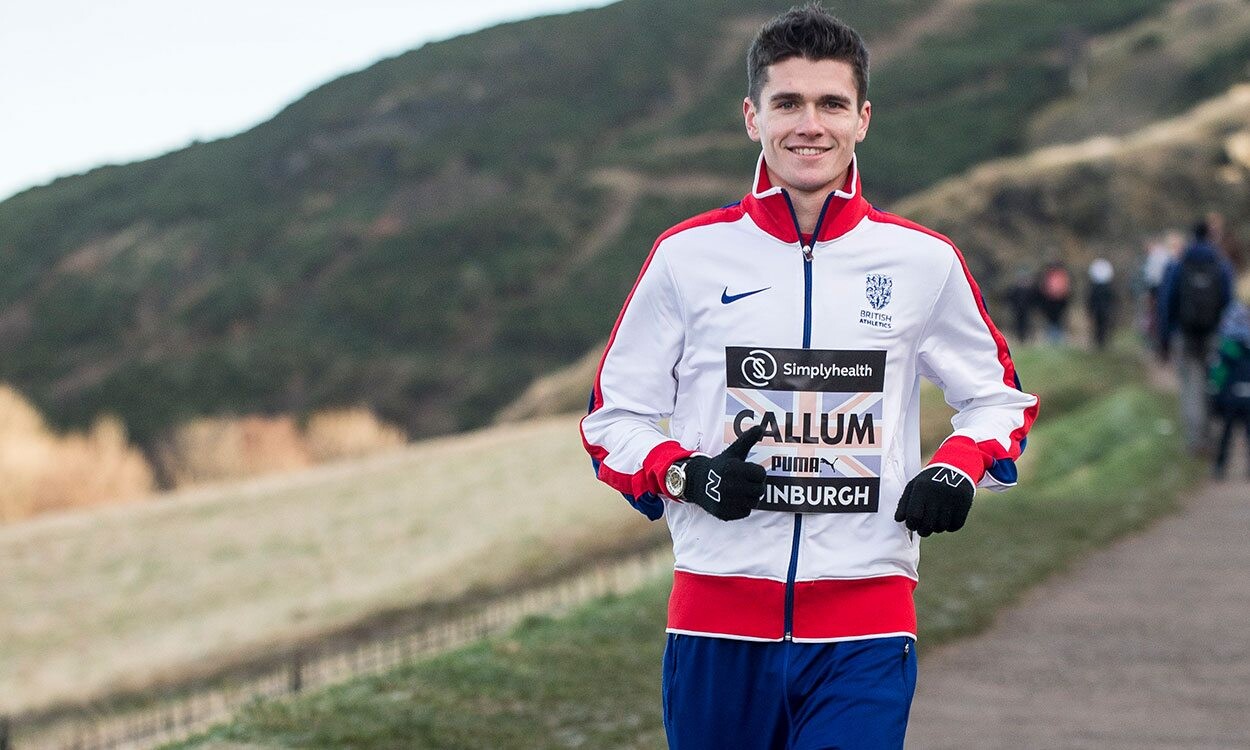
Steph Twell will lead the home charge as part of a British contingent which also features the likes of Mollie Williams, Monika Jackiewicz, Lily Partridge, Rose Harvey and Natasha Cockram.
On paper, the fastest man in the men’s field is Callum Hawkins, though how close he can come to his 10km road PB of 28:02 remains to be seen following his injury problems in recent years. The Scot, who has twice finished fourth over the marathon at the World Championships, will be looking to make more progress back towards top form.
Fellow Brit Marc Scott, the winner of this event in 2021, has a PB of 28:03 and will want to make his mark in his first outing since coming 12th in the Istanbul Half Marathon at the end of last month. Farah can expect plenty of support again, having last been seen in action when coming ninth in the London Marathon, where he confirmed his intention to retire at the end of this year. The four-time Olympic champion also clocked 30:41 for 10km in Gabon last month.
The home athletes will be up against the Australian duo of Jack Rayner – runner-up in Manchester last year and the current national 10km record holder – plus Stewart McSweyn, the national 1500m and 3000m record-holder who has an identical road PB to Scott.
Last year’s Osaka Marathon champion, Japan’s Gaku Hoshi, plus Uganda’s Commonwealth marathon champion Victor Kaplangat, add to the strength of the international field.
The men’s wheelchair race should be a tight contest, too, featuring Sean Frame, Johnboy Smith and Commonwealth marathon bronze medallist Simon Lawson.
As well as the popular 10km, the event schedule also features a half marathon plus the Mini and Junior Great Manchester Run.
(05/19/2023) ⚡AMPby Euan Crumley
Great Manchester Run
The Great Manchester Run, established in 2003, is an annual 10 kilometer run through Greater Manchester and is the largest 10K in Europe. Usually held in mid-May, it is the third-largest mass participation running event in the United Kingdom behind the Great North Run and the London Marathon. It is part of the Great Runs series of road races in...
more...Nicholas Kipkorir Kimeli and Irene Cheptai will defend titles against quality fields in Bengaluru
One year after setting course records at the TCS World 10K Bengaluru, Nicholas Kipkorir Kimeli and Irene Cheptai return to the World Athletics Gold Label road race with the aim of becoming back-to-back winners on Sunday (21).
Kipkorir Kimeli won last year in 27:38, while Cheptai clocked 30:35. Kipkorir Kimeli, who has a PB of 26:51, is the fastest in the men’s field, but there are three athletes in the women’s line-up with a PB quicker than Cheptai’s (30:16).
“I’m excited to be defending my title,” said Kipkorir Kimeli, who finished fourth over 5000m at the Tokyo Olympics. “I’ve prepared well and am feeling confident.”
The 24-year-old Kenyan came close to his PB last month in Herzogenaurach, where he finished third in 26:54. Earlier in the year, he finished 13th at the World Athletics Cross Country Championships Bathurst 23.
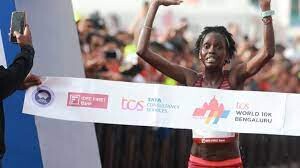
Twelve athletes in the men’s field have a PB quicker than the course record, and Kipkorir Kimeli is one of three runners with a sub-27-minute best.
Sebastian Sawe actually heads to Bengaluru in better form, having beaten Kipkorir Kimeli in two clashes earlier this year. Sawe was seventh at the World Cross, and then won over 10km in Herzogenaurach in a PB of 26:49. In between those races, Sawe also won the Berlin Half Marathon in 59:00 – his fifth sub-60-minute half marathon in just over 14 months.
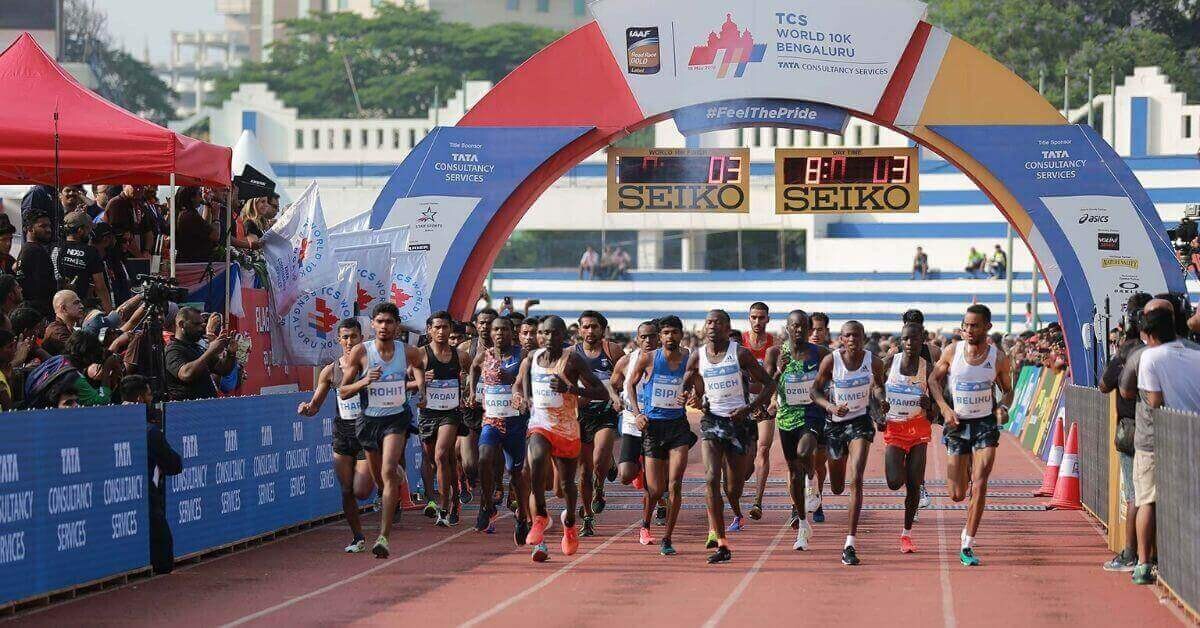
Burundi’s Rodrigue Kwizera, one of the winners of the World Athletics Cross Country Tour, is the third athlete in the field with a sub-27-minute PB. The 23-year-old finished just behind Sawe at the World Cross, and more recently he won over 10km in Camargo.
Other contenders include Ethiopian duo Gemechu Dida and Birhanu Legesse, and Uganda’s Stephen Kissa.
Legesse is a two-time winner of the Tokyo Marathon, and in 2019 he clocked a marathon PB of 2:02:48 in Berlin, making him the fourth-fastest man in history at that distance. More recently he set a half marathon PB of 58:59.
“I’m feeling very positive but I hope that things fall my way,” said Legesse, who has raced in Bengaluru on five previous occasions, achieving three podium finishes.
Dida won over 10km in Lille in March in a PB of 27:12, while former track specialist Kissa clocked 2:04:48 on his marathon debut in Hamburg last year.
Cheptai, the 2017 world cross-country champion, enjoyed one of her best seasons to date last year. She took silver over 10,000m at the Commonwealth Games, then went on to win over 10km in Prague (30:16) and at the New Delhi Half Marathon (1:06:42), setting PBs on both occasions.
“I’m thrilled to be back in Bengaluru and I have fond memories of India,” said the 31-year-old Kenyan. “I’ve trained well, but a lot depends on how you feel on race day.”
The four fastest runners in the women’s race have PBs faster than the course record.
Jesca Chelangat is still relatively new on the international scene, but she has made a mark already, winning over 10km in Durban last year and finishing runner-up in Valencia in January in 30:01, making her one of the fastest women of all time.
Compatriot Vicoty Chepngeno finished more than a minute behind Chelangat in Valencia, but she is a 30:14 performer at her best, and should be in contention in Bengaluru.
Ethiopia’s Tsehay Gemechu is also one to watch. She finished second at the Tokyo Marathon this year in 2:16:56 who took second place at this year’s Tokyo Marathon in 2:16.56, moving to eighth on the world all-time list.
Other contenders include world 5000m bronze medalist Dawit Seyaum, and fellow Ethiopian Dera Dida, the 2019 world cross-country silver medallist, who won the Dubai Marathon earlier this year in a PB of 2:21:11.
(05/19/2023) ⚡AMPby World Athletics
TCS WORLD 10K BENGALURU
The TCS World 10k Bengaluru has always excelled in ways beyond running. It has opened new doors for people to reach out to the less privileged of the society and encourages them to do their bit. The TCS World 10K event is the world’s richest 10 Km run and has seen participation from top elite athletes in the world. ...
more...Eliud Kipchoge feted with Princess Asturias Award
Kenyan marathon specialist Eliud Kipchoge has won the Princess of Asturias Award for sports for 2023, the Spanish foundation that organizes the prizes said Thursday.
Kipchoge, 38, who took Olympic gold medals in the marathon in 2016 and 2020 and was world 5,000 meters champion in 2003 “is considered a legend in world athletics and the best marathon runner of all time,” the foundation’s panel of judges said in a statement.

The foundation highlighted that he is known as “the philosopher” for his strategy and concentration in running. Kipchoge has won in 10 editions of four of the major marathons, including London and Berlin four times each.
He is the current Olympic marathon champion and holds the world record for the discipline, with a time of 2 hours, 1 minute, 9 seconds set in Berlin last year. That timing lowered by 30 seconds the record he himself had set in 2018.
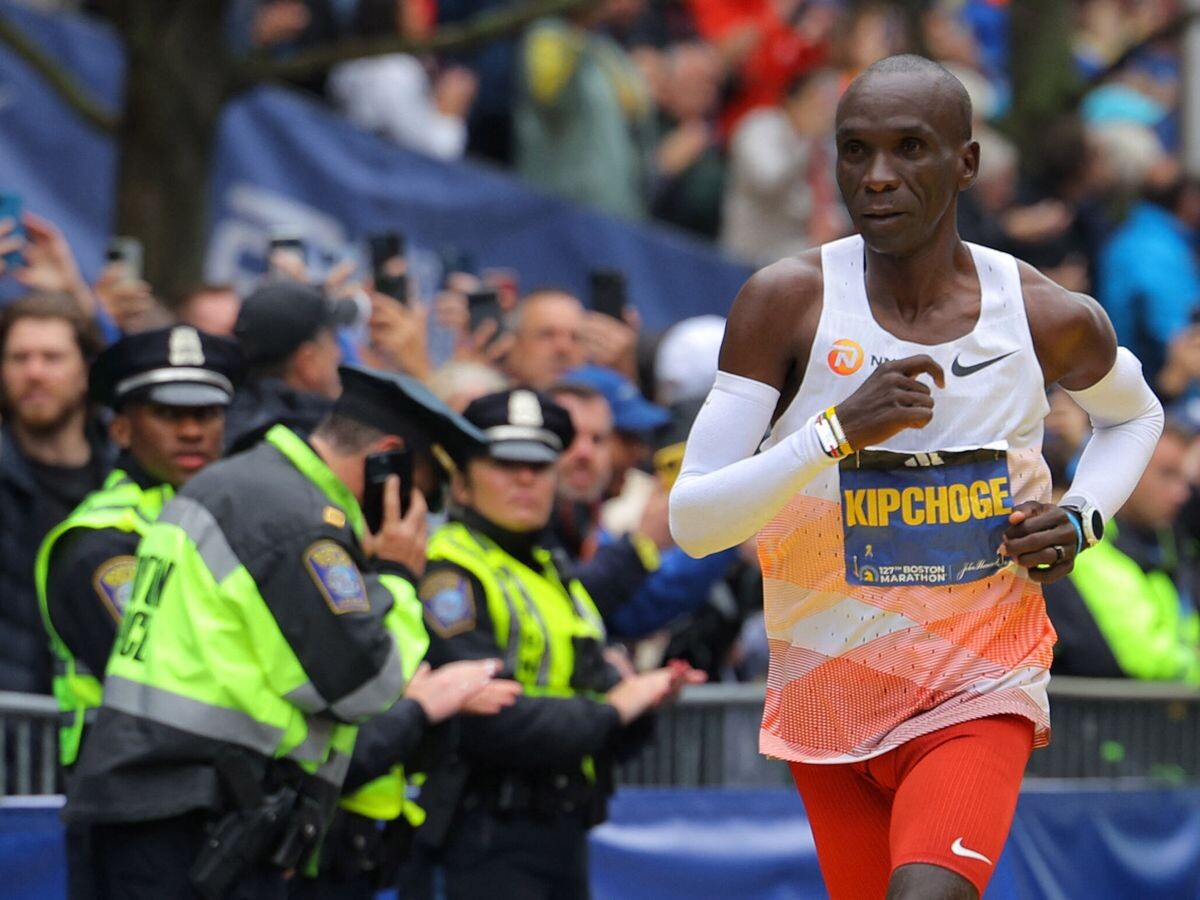
In a statement from Kipchoge forwarded by the foundation after the announcement, he said it was an “absolute honor” to receive the award.
“It motivates me in my goal to leave a legacy in this world through running, since a running world is a more peaceful world, a happier world and a more healthy world,” he said.
Kipchoge is the only athlete in history who has run a marathon in less than two hours, although the timing of 1:59:40 set in Vienna in 2019 isn’t recognized officially as the race was organized so outside aid could be used to help him.
The 50,000-euro award ($54,000) is one of eight prizes awarded for outstanding work in areas such as the arts, communication, scientific research and literature. They are handed out annually by the foundation.
The Olympic Refugee Foundation and the refugee Olympics team won the sports award in 2022.
The prizes are among the most important in the Spanish-speaking world. The award ceremony is held each fall in the northern Spanish city of Oviedo.
(05/18/2023) ⚡AMP
by Ciarán Giles
Kenyan Edward Zakayo to use France Continental Tour as build-up for Budapest
Former Commonwealth Games 5,000m bronze medalist Edward Zakayo will compete at the Meeting International de la Martinique Continental Tour set for next week in France.
The former world under-20 5,000m champion said he wants to use the France race as a build-up for the upcoming World Athletics Championships in Budapest, Hungary.
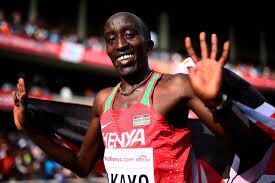
Speaking in Iten after competing in the Iten 15km Road race on Sunday, the former Africa 5000m champion said he has also been competing in road races just to enhance his career path and build on his endurance.
“Today’s race was just but part of my training ahead of the Continental Tour in France,” said Zakayo, who finished 19th in the race that attracted over 500 athletes.
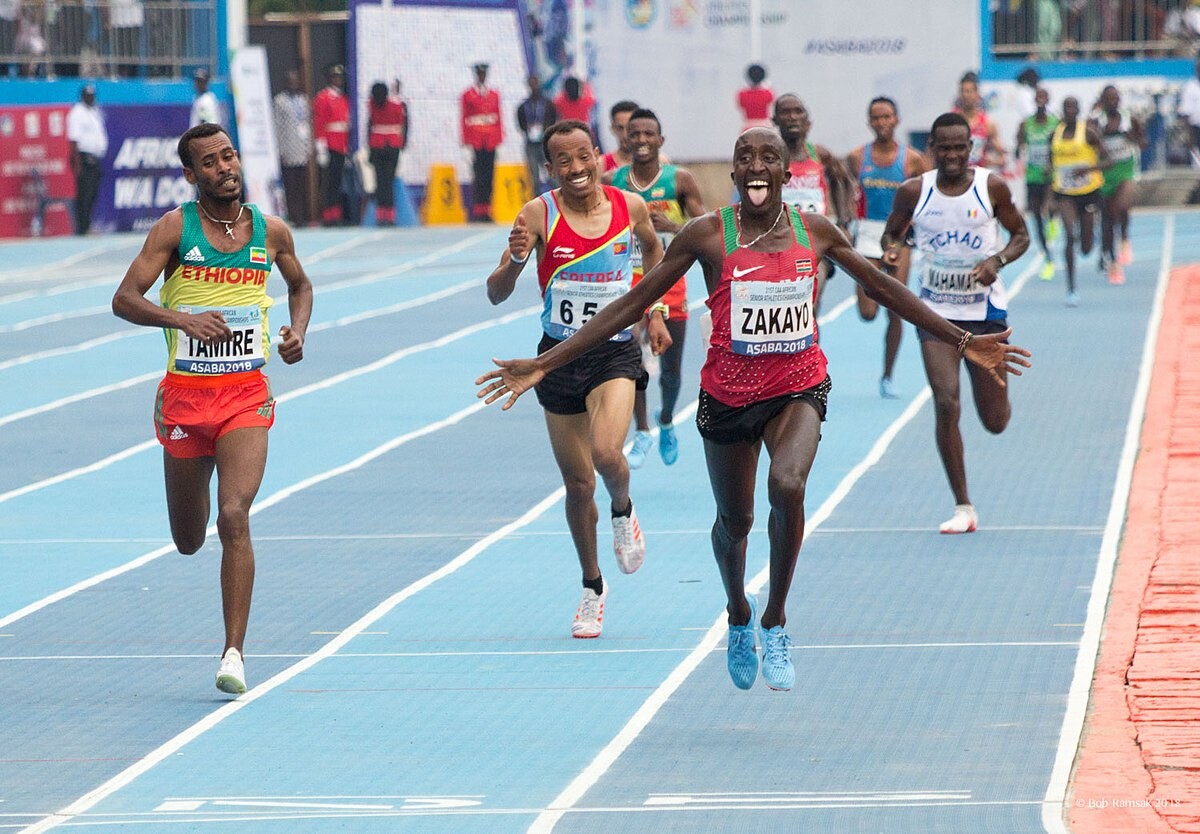
Zakayo stormed into the limelight in 2017 when he won 5,000m silver at the world Under 18 championships.
He added bronze at the 2018 Commonwealth Games in Gold Coast, Australia, and added the world Under-20 5,000m title in Tampere, Finland.
He completed the year with gold at the Africa Athletics Championships in Asaba, Nigeria in 2018.
“For me to make Team Kenya to Budapest, I need to work hard this season. I missed the cut last year but I want to do my best this year,” said Zakayo.
He also won silver at the 2019 All Africa Games in Rabat, Morocco before venturing into road races. “My new venture in road running is earning fruits and I hope this will continue,” he said.
(05/18/2023) ⚡AMPby Emmanuel Sabuni
World Athletics Championships Budapest 23
From August 19-27, 2023, Budapest will host the world's third largest sporting event, the World Athletics Championships. It is the largest sporting event in the history of Hungary, attended by athletes from more than 200 countries, whose news will reach more than one billion people. Athletics is the foundation of all sports. It represents strength, speed, dexterity and endurance, the...
more...Rhonex Kipruto returns guns blazing after AIU supension
The world 10km record holder, Rhonex Kipruto, has vehemently denied violating anti-doping rules.
Kipruto, 23, took to his defence shortly after the Athletics Integrity Unit (AIU) suspended him for use of prohibited substance/method.
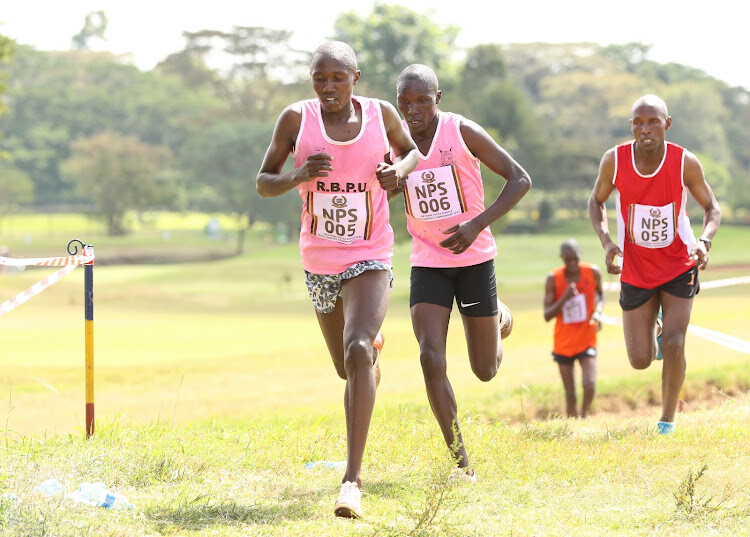
He has denied any wrongdoing, emphasising his desire to undergo a longitudinal study on his blood markers under 24-7 supervision.
“I don’t cheat or dope! The truth is on my side. This is all I can say,” Kipruto remarked in a statement released on Wednesday.
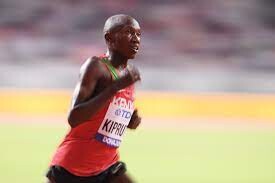
The 2019 world championship bronze medallist was charged by the AIU with “use of a prohibited substance/method” after inconsistencies were found in his biological passport between July 2018 and March 2022. He faces a four-year ban if found guilty.
Kipruto’s coach, Brother Colm O’Connell also jumped to his protege’s defence, noting that he (Kipruto) has consistently toiled to attain the heights he has scaled thus far.
“I carefully choose who I work with and to whom I dedicate my energy,” he said. “I know Rhonex is an honest young man and it hurts me to see him suffering now,” O’Connell said.
“Our strategy is to train hard and that’s the only way we achieve results. I have said many times that I am in favour of systematically combating doping so that we can protect clean athletes like Rhonex.”
Kipruto romped to a new world record in the 10km race after running 26:24 in Valencia in 2020.
Kipruto’s manager, Davor Savija, disclosed that they have already spent $30,000 trying to absolve him from wrongdoing.
“We are presenting the most important questions and answers about Rhonex, his background, and why we believe him when he says that he is a clean athlete,” Savija said.
“We know that doping and performance-enhancing drugs are a problem of modern society, not just of sport — from boardroom and bedroom to arts, academia, to pressures of modern-day living, all the way to amateur, professional, university and high school sports.
“We know this applies to athletes, as well, and we understand that this raises concerns. We are fighting against doping, we have zero tolerance for cheating, and we support the development of the Athlete Biological Passport. Unfortunately, the “guilty until proven innocent” principle rules the life of an athlete in these cases.”
Savija said the case has been under scrutiny for some time now, intensely engaging the agent, coach, assistant coach, staff, and, of course, independent experts as well as the athlete himself.
“It is affecting Rhonex’s mental and physical performance. We have already spent more than USD 30,000, which is a huge amount of money in the distance running world.”
(05/18/2023) ⚡AMPby Tony Mballa
European half-marathon record holder Melat Kejeta to take on Tartan Ottawa International Marathon
The fastest European half-marathoner in history, Germany’s Melat Kejeta, will take on former Canadian marathon record holder Malindi Elmore and other international elites at the 2023 Tartan Ottawa International Marathon on May 28. Kejeta won a silver medal for Germany at the 2020 World Half Marathon Championships in Poland, setting a European half marathon record of 65:18.
Throughout her 12-year professional career, Kejeta has produced a few remarkable results. In 2019, she was sixth at the Berlin Marathon with a personal best time of 2:23:57. She followed up her debut marathon with another sixth-place finish against the world’s best at the 2020 Tokyo Olympics.
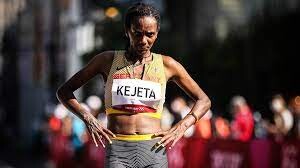
The 2023 Ottawa Marathon will be Kejeta’s first race since 2021. The 30-year-old runner, who also works as an officer in the German police force, gave birth to her first child in early 2022. “When I ran the Olympic marathon, I was pregnant, but I didn’t know that (at the time). It was not planned. So it was a bit of a surprise,” said Kejeta in an interview with Run Ottawa.
In Ottawa, Kejeta will renew a rivalry from her last marathon, facing off against a fellow mom, Elmore, the top Canadian finisher in the 2020 Tokyo Olympic marathon, who finished three spots behind her for ninth.
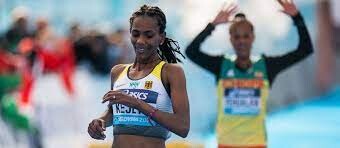
Kejeta said the 2023 Ottawa Marathon will be special for her, as it will be her first marathon with her daughter in attendance. “I am looking forward to having her on the sidelines at the halfway point,” she said.
With under two weeks until race day, Kejeta and Elmore are just two of the extensive list of female elites at the 2023 Ottawa Marathon. The Ethiopian contingent of Adanech Anbesa, Waganesh Mekasha and Ayana Mulisa will provide Kejeta and the experienced Elmore with a challenge. All three women have personal bests of 2:24:30 or faster, with Mekasha finishing in the top five at the 2022 Chicago Marathon.
(05/18/2023) ⚡AMPby Marley Dickinson
Ottawa Marathon
As one of two IAAF Gold Label marathon events in Canada, the race attracts Canada’s largest marathon field (7,000 participants) as well as a world-class contingent of elite athletes every year. Featuring the beautiful scenery of Canada’s capital, the top-notch organization of an IAAF event, the atmosphere of hundreds of thousands of spectators, and a fast course perfect both...
more...Kenyans Kipngetich and Chembai were the winners of the 42nd edition of Göteborgsvarvet
Edmond Kipngetich and Susan Chembai – those are the names of the winners of the 42nd edition of Göteborgsvarvet.
“I didn’t expect to win, but I am really happy I did,” said Chembai, who crossed the finish line 20 seconds before the runner-up.
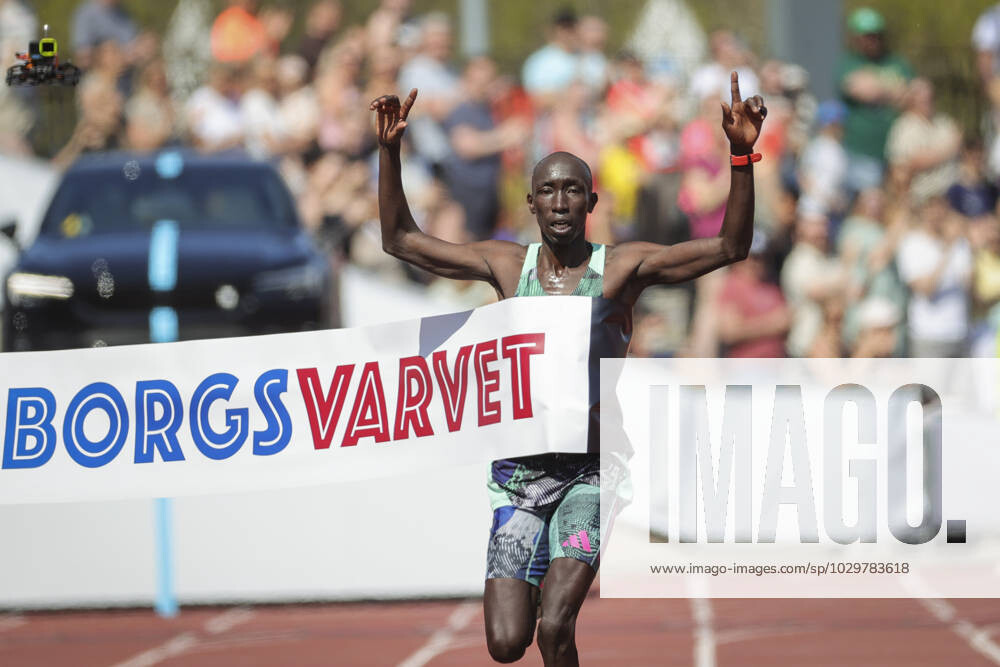
Four male and two female runners came to Sweden with personal bests under the current course records at Götebortsvarvet, but no new records were broken this day. However, Edmond Kipngetich finished first of the 40,000 participants and Susan Chembai was the first woman to reach Slottsskogsvallen.
Edmond Kipngetich, with a personal best an impressive 59:25 from last year, was in the lead at each of the split times and crossed the finish line at 1:01:46, 40 seconds before his fellow countryman Braved Kiprop and another 58 seconds before Alex Kibet, the runner in the starting field with the best personal best.
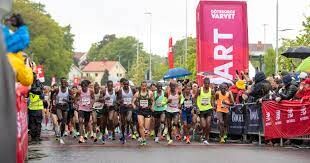
“It was tough today, but it felt great to win. The course was tougher than I thought and I had to fight hard, but was stronger than the others today,” he said.
First among the runners competing for Swedish clubs was Samuel Russom (Hässelby SK). The Eritrean citizen finished sixth at 1:04:04 and was the best non-Kenyan. David Nilsson from Högby IF was the best Swedish citizen, six seconds before Archie Casteel (Spårvägens FK).
In the women’s class four Kenyans and two Ethiopians took the first six positions. The best of them was Susan Chembai who was 20 seconds ahead of the runner up, finishing on 1;10:40. As predicted Hanna Lindholm was the best Swedish runner, finishing seventh, more than one minute and two positions in front of Johanna Larsson from Örgryte IS.
(05/17/2023) ⚡AMPby AIMS
Gothenburg Half Marathon
Run through the heart of one of Scandinavia's most beautiful cities. The course will be lined with over 200,000 enthusiastic and sports interested spectators. Gothenburgs central location in Scandinavia makes it easy to reach by plane, boat, train or car. Göteborgsvarvet is an annual half marathon running competition in Gothenburg, Sweden. It is the largest annual running competition in Sweden,...
more...Five reasons to become a runner this summer
There’s a saying that goes something like, “The best time to plant a tree was 20 years ago. The second best time is now.” That can be applied to running. You can’t go back in time to become a runner, but you can put an end to your hesitation and procrastination and get started right now. Here are just eight of the many reasons you should finally join the sport and become a runner this summer.
The warm weather is here
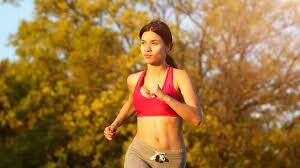
It’s way easier to convince yourself to run in summer than winter, so get into the habit of training now while it’s nice out. Then, when the weather inevitably turns cold and miserable, the routine will already be established and it will be easier for you to carry on with it. You may be able to break into the sport if you start in the winter, but the cold weather will give you a big reason to give up when you become discouraged.
Racing season is upon us

There are so many races in the summer, and for many people, that’s the best part about running. No matter where you live, you should be able to find a race to test your fitness and progress. After you race, you’ll see what running is really all about, and you very well could be hooked.
Long days and pleasant nights
The days are so long in the summer, which means you have so many hours available to get out for runs. Whether you’re up bright and early for a run or hours after you finish work, you’ll still be able to enjoy the sun, so you really have no excuse not to hit the road to try the sport.
Summer trips
Nothing can beat running in new places when you’re on vacation. Whether you plan to go camping this summer, hit up a cottage or travel to a new city, anywhere new and different is a great place to run. Plus, you can explore on foot during your training runs and figure out where you want to visit later.
Why wait?
Why wait any longer? Maybe you’ve been putting off trying the sport for a while, or maybe you only just decided it’s something you want to do now. Whatever the case, there’s no reason to hold off on becoming a runner now.
(05/17/2023) ⚡AMPby Ben Snider-McGrath
Kirika and Mungai were the winners at the 21st monthly KATA Time Trial in Thika
Zakariah Kirika and Boniface Mungai lived up to expectation by ruling both the 10, 000 and 5,000metres during the May Kenyan Athletics Training Academy Time- Trial held at Thika Stadium May 17.
The Star, who has been playing second fiddle to KATA's internationals Peter Mwaniki and Peter Wanyoike, timed 30:42.1 in his 10,000metres specialty while Mungai outclassed newcomer Simon Ngubao in the 5,000metres after clocking 15:04.6, improving his January’s time of 15:27.7 by 23 seconds.
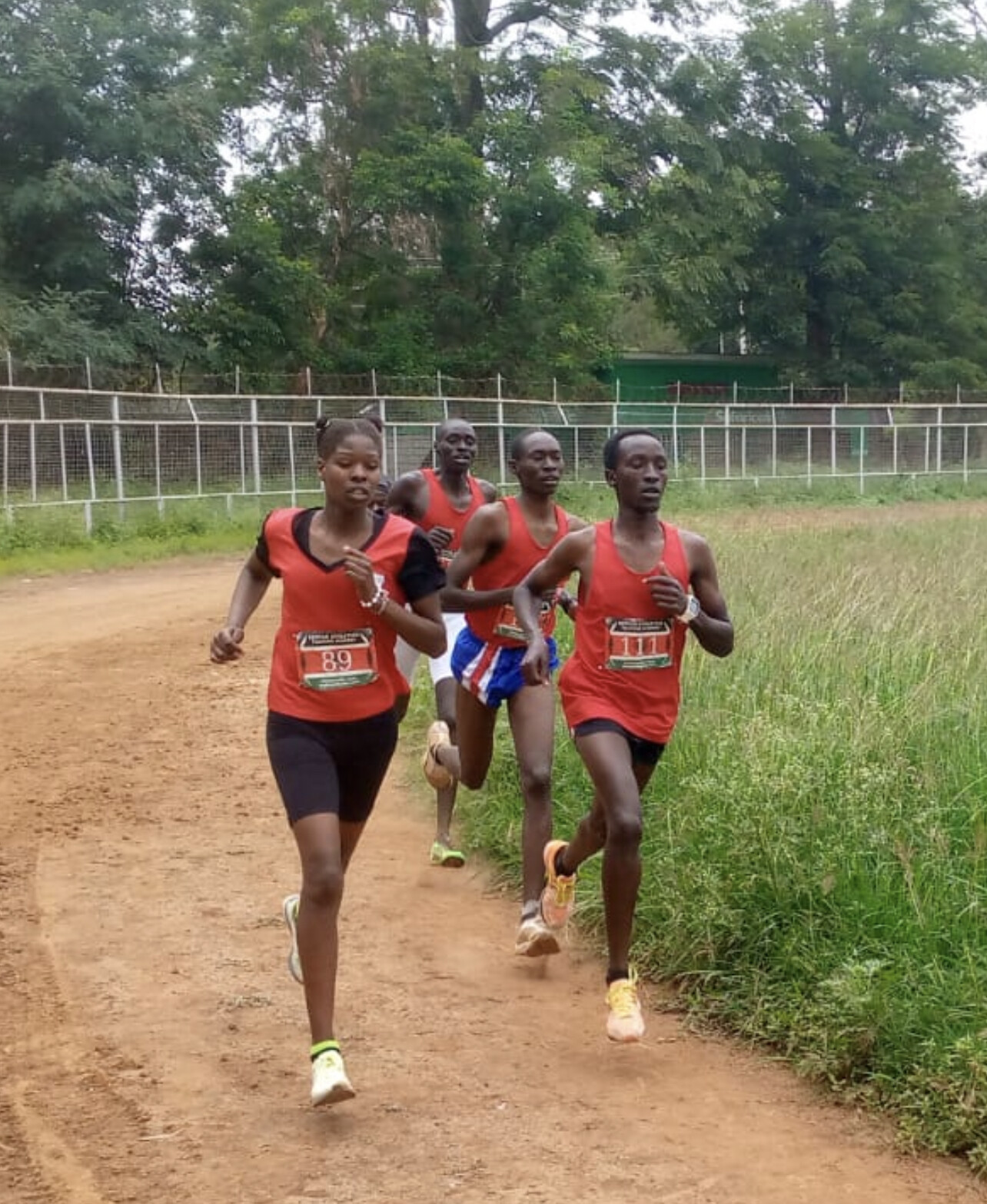
During the 21st KATA (Kenyan Athketics Training Academy) Time Trial that alternated with the Road last month, Evans Kiguru took the silver position in 10,000metres behind Kirika in 32:13.3 with another newcomer Gabriel Kahura coming third in 32:27.3.
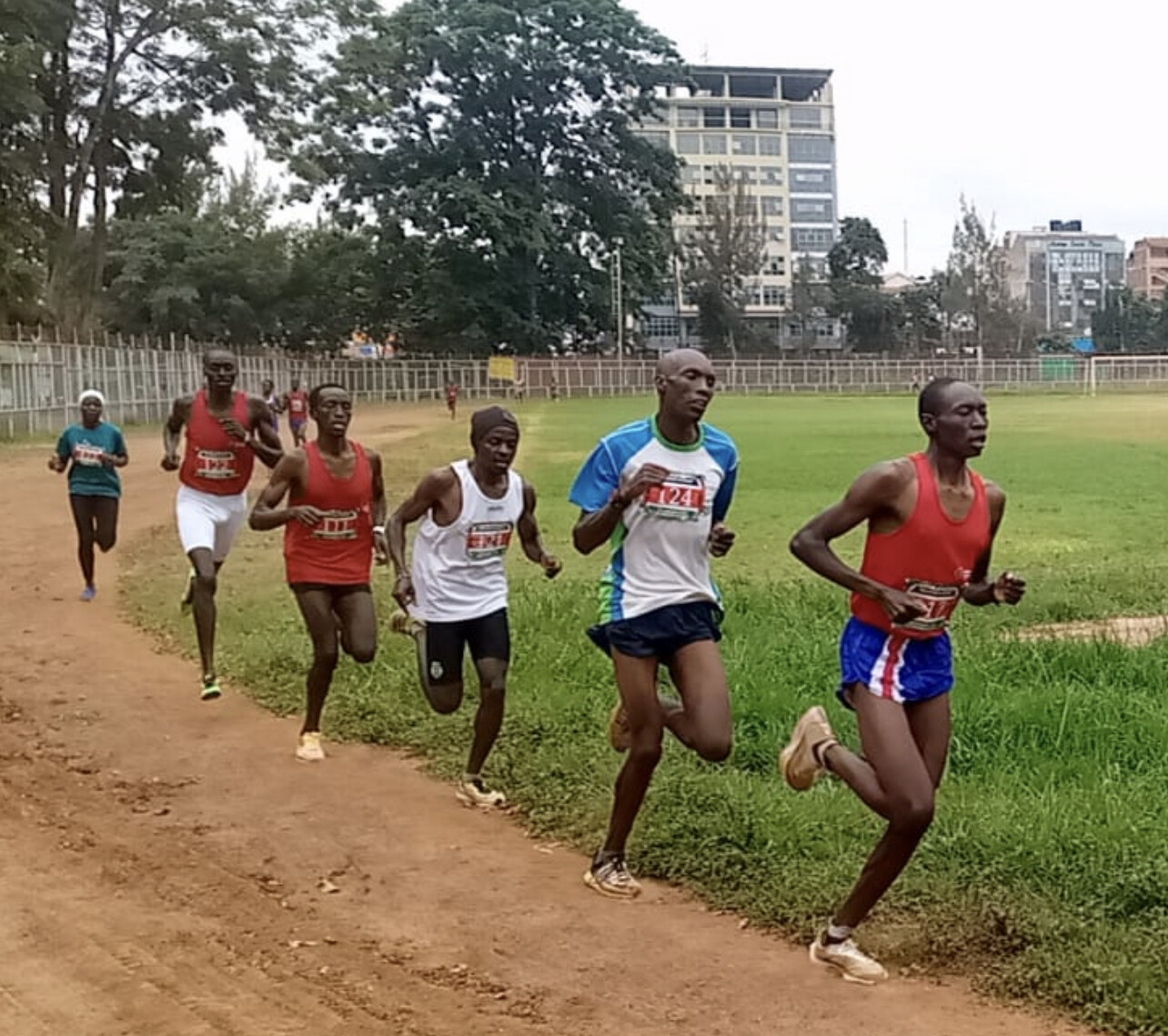
In the 5,000metres, Levis Kuria bettered his March’s 15:32.8 to record new personal record of 15:06.2, chopping off 26.5 seconds and finished ahead of perennial Fredrick Kiprotich who finished in 15:18.2.
In the Ladies, Caren Chepkemoi bettered her 5,000m Personal Best after registering a new17:28.2 from her previous 19:11.6 to come ahead in the category with Narok-based Maureen Nairesiae clocking 18:20.6.
KATA's Peter Njeru did not run the time trial because he had just gotten back after finishing third at the Petrom Bucharest Romania half marathon clocking 1:01:21.
The 22nd edition of the KATA monthly Time Trial will return to the Road on 14th June on the Ndarugo-Mang’u Road.
Name: Bib Age Time
10,000Metres
1. Zakaria Kirika 114 22 30:42.1
2. Evans Kiguru 93 27 32:13.3
3. Gabriel Kahura 124 40 32:27.3
4. Anthony Mukundi 84 35 32:41.8
5. Alfred Kamande 113 25 34:01.1
6. Paul Ng’ang’a 106 42 34:05.3
7. Charles Ndirangu 90 60 36:13.2
8. Moses Mutunga 121 27 37:44.4
5,000Metres
1.Boniface Mungai 111 24 15:04.6
2. Simon Ngubao 121 28 15:05.4
3. Levis Kuria 117 22 15:06.2
4. Fredrick Kiprotich 122 24 15:18.2
5. John Mutiso 109 19 16:14.8
6. Amos Chirchir 126 23 16:19.3
7. Peter Mukundi 115 25 17:22.0
8. Caren Chepkemoi 89 21 17:28.2
9. Ismael Mburu 120 22 18:18.1
10. Maureen Nairesiae 107 107 18:20.6
11. Virginia Wanjiru 123 21 20:14.2
12. Hannah Njeri 110 24 21:04.6
13. Nancy Githaiga 108 32 22:33.5.
(05/17/2023) ⚡AMPby Coach Joseph Ngure
KATA Time Trial Series
The Kenyan Athletics Training Academy (KATA) in Thika Kenya stages a monthly time trial. Starting Sept 2021 this monthly event is open to anyone who would like to get an official time on a acurant course. Results will be published at My Best Runs so race directors and other interested people can see what kind of shape our participants are...
more...Rhonex Kipruto, 10K world record holder, suspended on doping allegations
On Wednesday, the Athletics Integrity Unit (AIU) announced the provisional suspension of 10K world record holder Rhonex Kipruto of Kenya. The 23-year-old was charged with the use of a prohibited substance or a prohibited method related to his Athlete Biological Passport (ABP).
Kipruto is the fastest man in history over 10 kilometres, clocking an impressive 26:24 on the roads at the Valencia 10K in January 2020. He is also the third-fastest half marathoner in history with a personal best of 57:49. Kipruto won a global medal at the 2019 World Athletics Championships in Doha in the 10,000m, finishing third behind Uganda’s Joshua Cheptegei and Ethiopia’s Yomif Kejelcha.
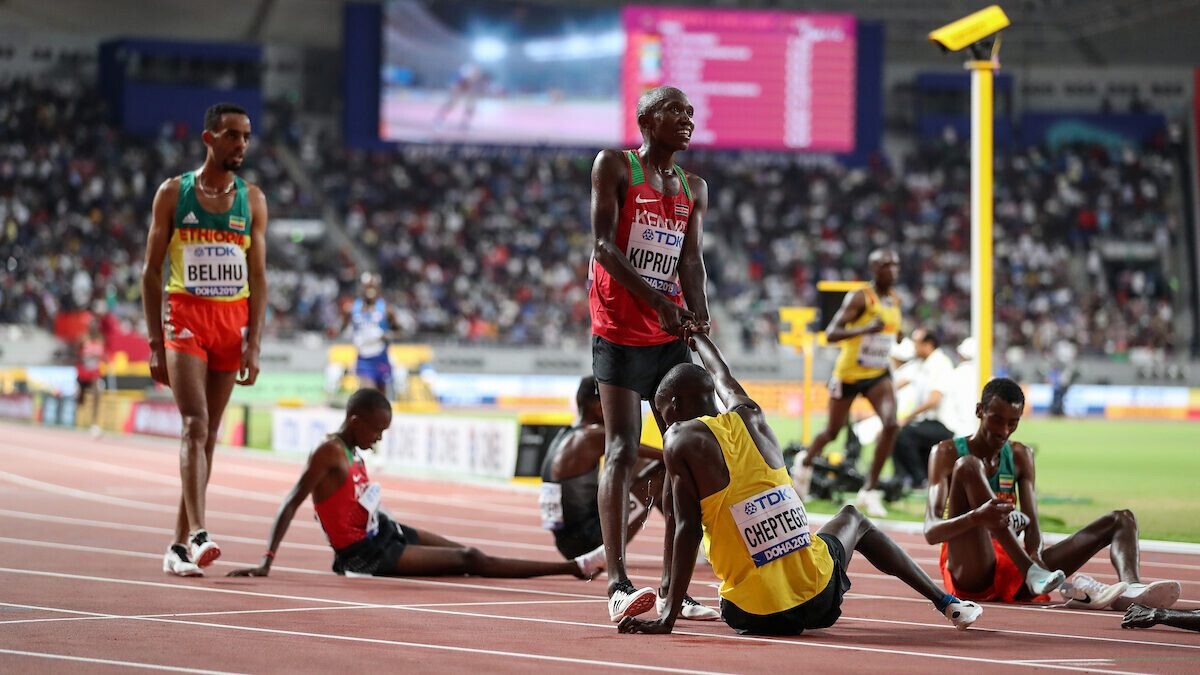
Kipruto has been informed by the AIU of alleged inconsistencies in his ABP blood values, dating back to 2018. The AIU has not directly accused him of using prohibited substances, but he is provisionally suspended and asked to provide an explanation.
What is an ABP suspension?
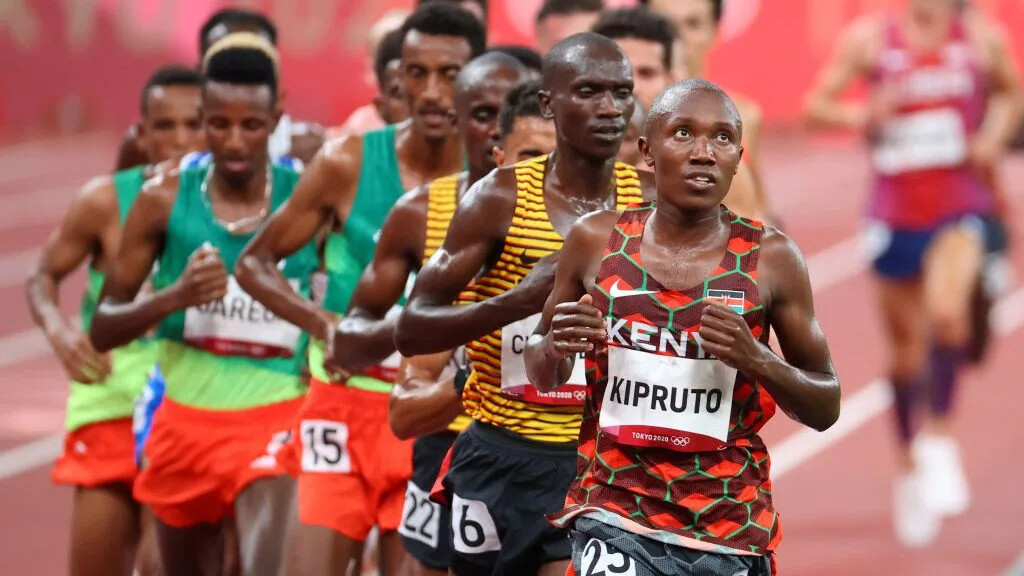
The purpose of an Athlete Biological Passport is to track their blood values over a long period to monitor for possible signs of doping, even if they never fail a drug test.
The AIU will analyze an athlete’s ABP data to monitor select biological parameters over time that may indirectly reveal the effects of doping. This approach allows the AIU to generate profiles for each athlete and to look for any fluctuations that may indicate that the athlete has been using performance-enhancing drugs.
The profile for each athlete is generated based on statistics that utilize data from previous (given) samples to predict the individual’s performance limits or range for future samples. According to the AIU, if any data from a test sample falls outside of the athlete’s range, it could be an indication of doping.
In Kipruto’s case, he has been sentenced to a provisional suspension while the AIU investigates further and schedules a hearing, meaning he is unable to compete or train with his training group until the case is closed. If Kipruto is found guilty at the hearing, he could face a four-year plus suspension.
Kipruto denies the charges
Kipruto’s agency, Ikaika Sports, released a 4,000-word press release acknowledging the provisional suspension, denying the charges. “I don’t cheat or dope!” said Kipruto after the announcement. “The truth is on my side. This is all I can say.”
His agency included expert opinions suggesting that there may be other factors, such as training load, health status, hydration, travel, and alcohol consumption, that could explain Kipruto’s ABP values.
Kipruto is coached by the famous Irish athletics coach Colm O’Connell, who is nicknamed the “Godfather of Kenyan running”. O’Connell has coached the likes of two-time Olympic 800m champion and world record holder David Rudisha and two-time Boston Marathon champion Edna Kiplagat. According to the press release, O’Connell has not had a single doping case in his 50-year coaching career.
His agency expresses concerns about the presumption of guilt and the lack of transparency in the ABP process, emphasizing Kipruto’s clean record, regular testing, and willingness to undergo further study to clear his name.
(05/17/2023) ⚡AMPby Marley Dickinson
Gene Dykes, 75, sets seven U.S. masters records
Accomplished ultrarunner Gene Dykes, 75, looks to have set no fewer than seven U.S. masters records at a 12-hour race in his home state of Pennsylvania over the weekend, surprising himself as he pushed past health issues to pass the 100-km mark with 400 metres to spare.
The records, which have yet to be ratified by USA Track and Field, include the fastest outdoor track times in the U.S. men’s 75-79 category for 25K (2:48:33), 30K (3:24:08), 50K (5:40:39), 20 miles (3:41:28), 50 miles (9:25:10) and 100K (11:56:26), and the longest distance run in that category for a 12-hour period (100,481 metres). Dykes set the records during his 12-hour overnight effort at the Dawn to Dusk to Dawn Track Ultras in Sharon Hill, Pa., on May 13-14.
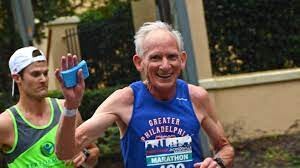
The 100K record was the most surprising to Dykes, who has broken multiple records since he took up competitive racing in his 60s. “I didn’t think I had a prayer,” he says. “It’s hard running 100K at my age. I only made it by four minutes.”
Making his latest effort even more remarkable was the fact he was battling a host of health issues on race night.
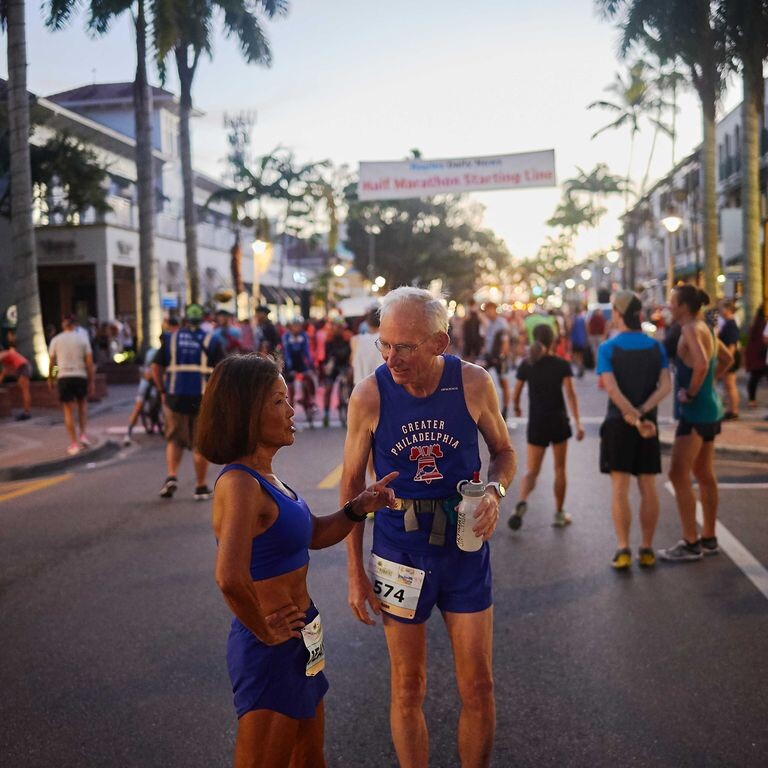
“I told people I’m battling the three C’s out here,” says Dykes. “Two weeks ago I contracted COVID, and I also had cold symptoms going into the race. Six months before I had been diagnosed with blood cancer, and that’s been really hurting my fast pace, but I have this theory that it doesn’t affect ultra paces and that seems to have really been borne out here. The only symptom I have is that I can’t breathe hard enough when I run fast, but when you’re running 12 hours, you’re never running hard. I was really happy to be able to get through 12 hours with all those health problems.”
Dykes says although he has been sitting out races recently due to health challanges, it was important for him to step up to the starting line over the weekend, as he prepares to make history next month as the oldest finisher of the 100-mile Western States Endurance Run.
“I kind of had to take a chance, because the really big race is next month,” says Dykes. “That’s a big deal. I’ve got a sponsor, and everybody’s expecting me to become the oldest-ever finisher there. So I thought, If I can’t run for 12 hours, how am I going to run for 30 hours?”
The self-described “ultra geezer” says his race on the weekend—his longest since receiving his cancer diagnosis—is a good confidence booster ahead of Western States.
“When you haven’t done something that like in a while, doubts creep in. A lot of things could have gone wrong. I could have got nauseated, I could have bonked, running out of glycogen, in which case you’re going to slow down no matter how much you want to run faster. None of those things happened. You get in this strange mindset where you just kind of dial out misery and keep on going.”
Reflecting on his latest effort with humility, Dykes says many of the U.S. masters records he set on the weekend were “low-hanging fruit,” saying he could “think of a half a dozen 75-year-olds out there” who could have set records in the 25- and 30-km distances “if they had the mind to.”
He adds, however, that he was proud to have hit the 100-km distance under the wire. “At 50 km I asked my crew to find out the new pace I would have to run over the next 50 km for the 100 km. I had to pick up from my comfortable pace. I thought I don’t care if I have no chance—I’m going to run the pace I need and keep doing it until I can’t do it anymore.’ Somehow, for seven hours I managed to keep pushing myself right up to the ending bell.”
Dykes is now looking forward to bringing that same determination to Western States on June 24-25. “It’ll be fun trying,” he says. “There are just so many ways to enjoy running. I’m really fortunate.”
(05/17/2023) ⚡AMPby Paul Baswick
Western States 100
The Western States ® 100-Mile Endurance Run is the world’s oldest and most prestigious 100-mile trail race. Starting in Squaw Valley, California near the site of the 1960 Winter Olympics and ending 100.2 miles later in Auburn, California, Western States, in the decades since its inception in 1974, has come to represent one of the ultimate endurance tests in the...
more...Abel Kipsang eyes gold at World Championships in Budapest
The 2022 World Indoor Championships 1500m bronze medalist, Abel Kipsang will be targeting gold in his specialty at the World Championships in Budapest, Hungary.
"I'm aiming for gold, but if things go wrong, I should be able to finish on the podium in Budapest," said Kipsang in an exclusive interview on Monday.
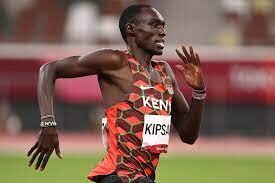
Kipsang has been honing his skills at the Traffic Police headquarters training ground under the watchful eye of legendary athletics coach Alfred Sang.
The National Police officer will attempt to beat his personal best time of 3:31.65, which he set at the Tokyo Games last year.
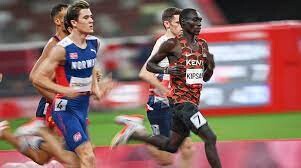
"I also want to beat my previous best time. I've already clocked a 3:29.56 and my new goal is a 3:28.00."
Kipsang expressed his satisfaction with his performance at the weekend's Kip Keino Classic at Moi Stadium in Kasarani. He clocked 3:32.70 minutes to finish second to Reynold Kipkorir, who won in 3:32.01.
"I prepared well for the race, and my body was in top shape. I'm pleased with the time I set at Kasarani. I'm hoping to accomplish a lot more in the coming events," Kipsang remarked.
With his sights set on boarding the Team Kenya jet to Budapest, Kipsang is overjoyed to have already met the qualification standards for the much-anticipated annual global extravaganza, which will be held in August.
"The qualification time set by World Athletics is 3:34.20, and I managed a 3:32.70 at the Kip Keino Classic on Saturday," Kipsang stated.
Despite the stiff competition he is going to face in Budapest from a talented field of rivals, Kipsang says he is not nervous.
"I'm not training with any particular opponent in mind. It's all about getting the greatest time possible to give me an advantage in competition."
He will rely primarily on his extensive knowledge and superior skill to lead him to stardom in Budapest.
Kipsang won the bronze medal at the 2022 World Indoor Championships in Belgrade after finishing fourth in the 1500m at the 2020 Tokyo Olympics.
At the 2019 African Games in Rabat, he competed in his first international competition, finishing fourth in the 800m with a time of 1:45.43 mins.
On June 9, 2021, in Marseille, he ran a personal best of 3:32.6 in the 1500m. He had placed third at the Kenyan Olympic trials 10 days earlier, securing his spot in the postponed 2020 Tokyo Olympics.
His score from Marseille put him in the top ten in the world. Kipsang achieved a new Olympic record in the semifinals of the 1500m on August 5, 2021, in Tokyo, clocking 3:31.65, to improve his personal best.
This record was eventually surpassed by Jakob Ingebrigtsen, who ran 3:28.32 in the final, while Kipsang finished fourth in 3:29.56. Timothy Cheruiyot won silver in 3:29.01, while Josh Kerr finished third in 3:29.05.
In 2022, he won a bronze medal at the World Indoor Championships in Belgrade, clocking a personal best of 3:33.36 and finishing behind Samuel Tefera (3:32.77) and Ingebrigtsen (3:33.02).
(05/16/2023) ⚡AMPby Tony Mballa
World Athletics Championships Budapest 23
From August 19-27, 2023, Budapest will host the world's third largest sporting event, the World Athletics Championships. It is the largest sporting event in the history of Hungary, attended by athletes from more than 200 countries, whose news will reach more than one billion people. Athletics is the foundation of all sports. It represents strength, speed, dexterity and endurance, the...
more...NHL legend Zdeno Chara crushes 50K ultra-trail race
Three weeks after finishing the Boston Marathon, the former 6'9" foot defencemen took on a 50K ultra-trail race, finishing eighth overall.
Zdeno Chara may have found his new hobby: ultrarunning. On May 13, the 46-year-old completed his first ultra-trail race at the Watuppa Trail 50K in Fall River, Mass., and performed admirably.
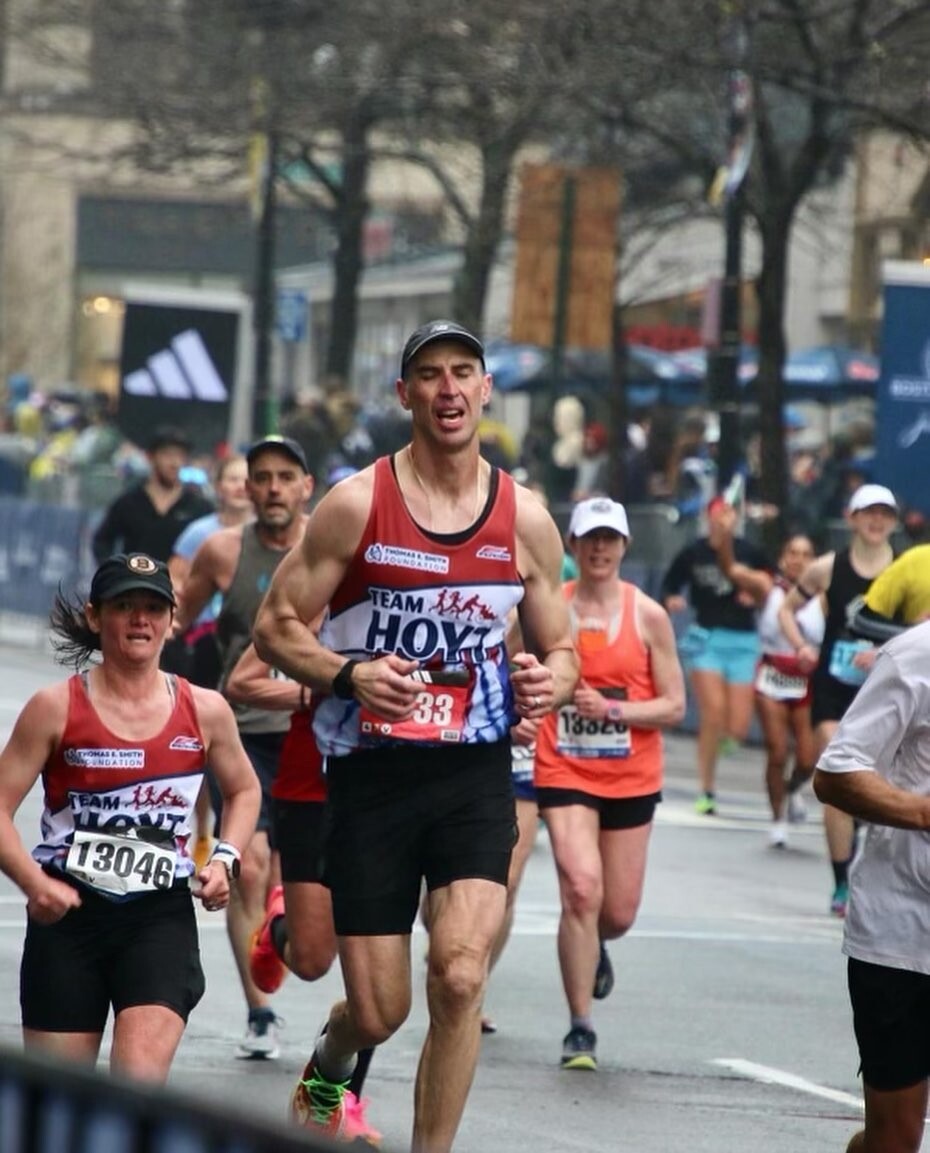
“I tried a new distance today,” Chara wrote on his Instagram. “I can’t thank my team enough for their incredible help and support for my first ultra trail race.”
Despite lacking ultra experience, the former 6’9 foot defencemen finished the 50K in eighth overall, in 5:07:29, and even took second place in his 40-54 age category.
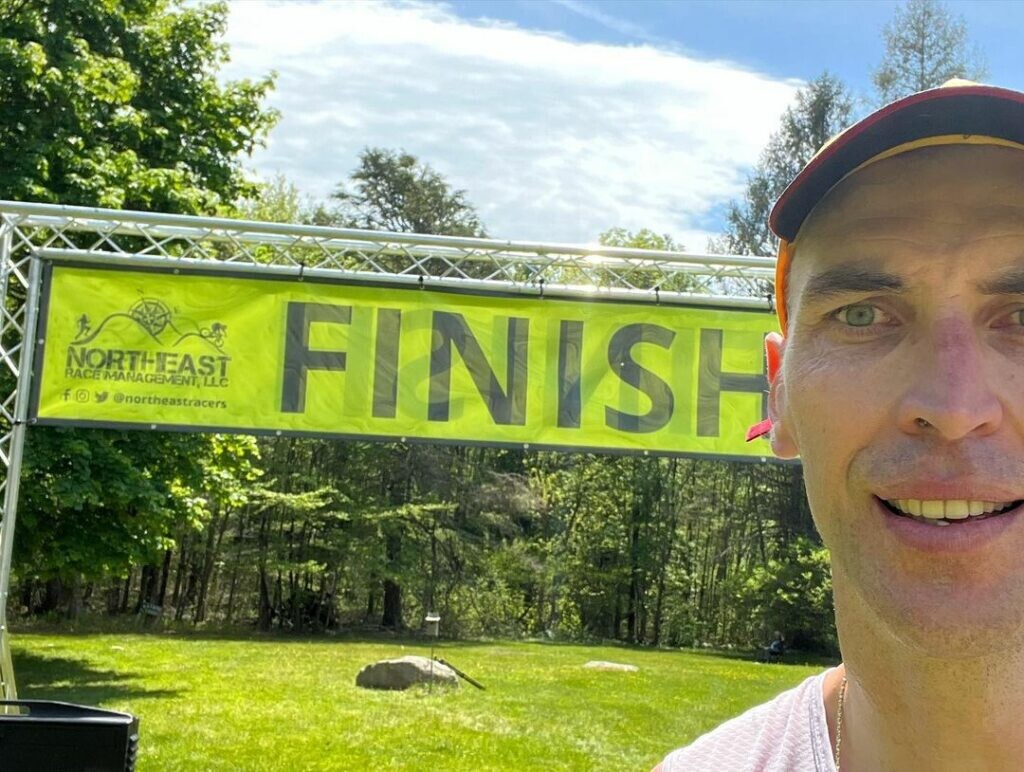
Since retiring from the NHL in 2022, Chara has found an interest in distance running. He completed the 2023 Boston Marathon in a very respectable time of 3:38:23; he also raised USD $33,333 for The Hoyt Foundation during his campaign.
Chara holds the all-time NHL record for most games played by a defenceman, with 1,680. He played for four teams over his 20+ year career, starting with the New York Islanders, Ottawa Senators, Boston Bruins and Washington Capitals.
Chara entered the race with his friend and training partner Becca Pizzi, who won the 50K outright in 3:59:11. Pizzi also helped pace Chara for his first marathon last month.
We think it’s only a matter of time until we see the big man take on a 100-miler.
(05/16/2023) ⚡AMPby Marley Dickinson


